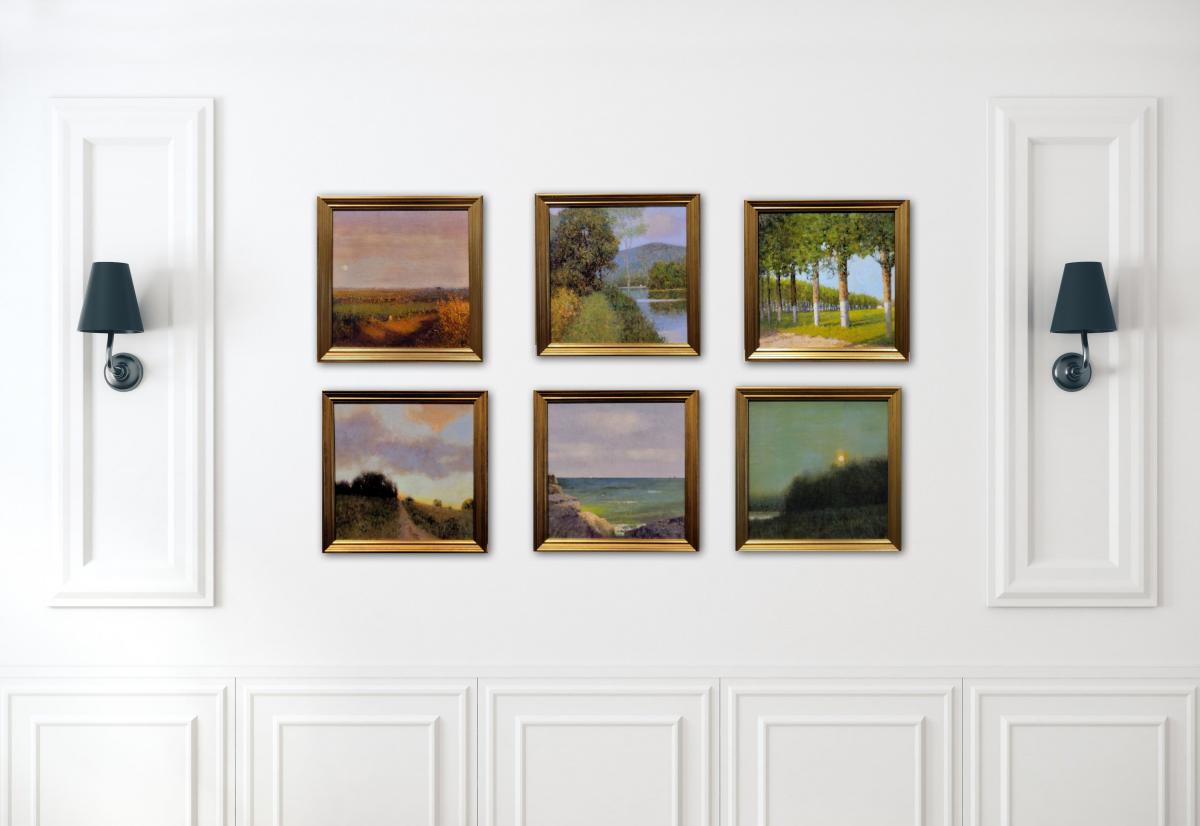
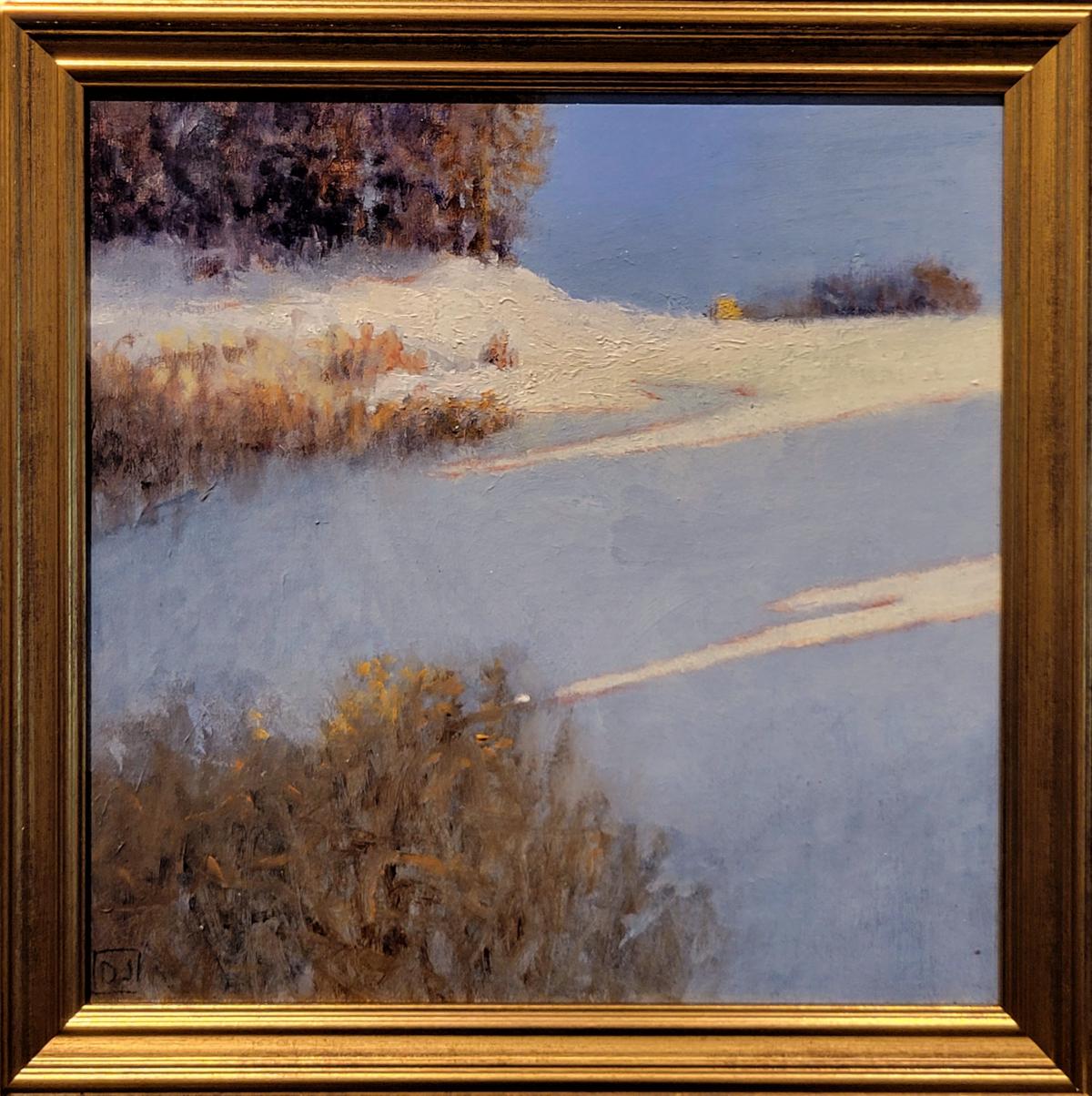
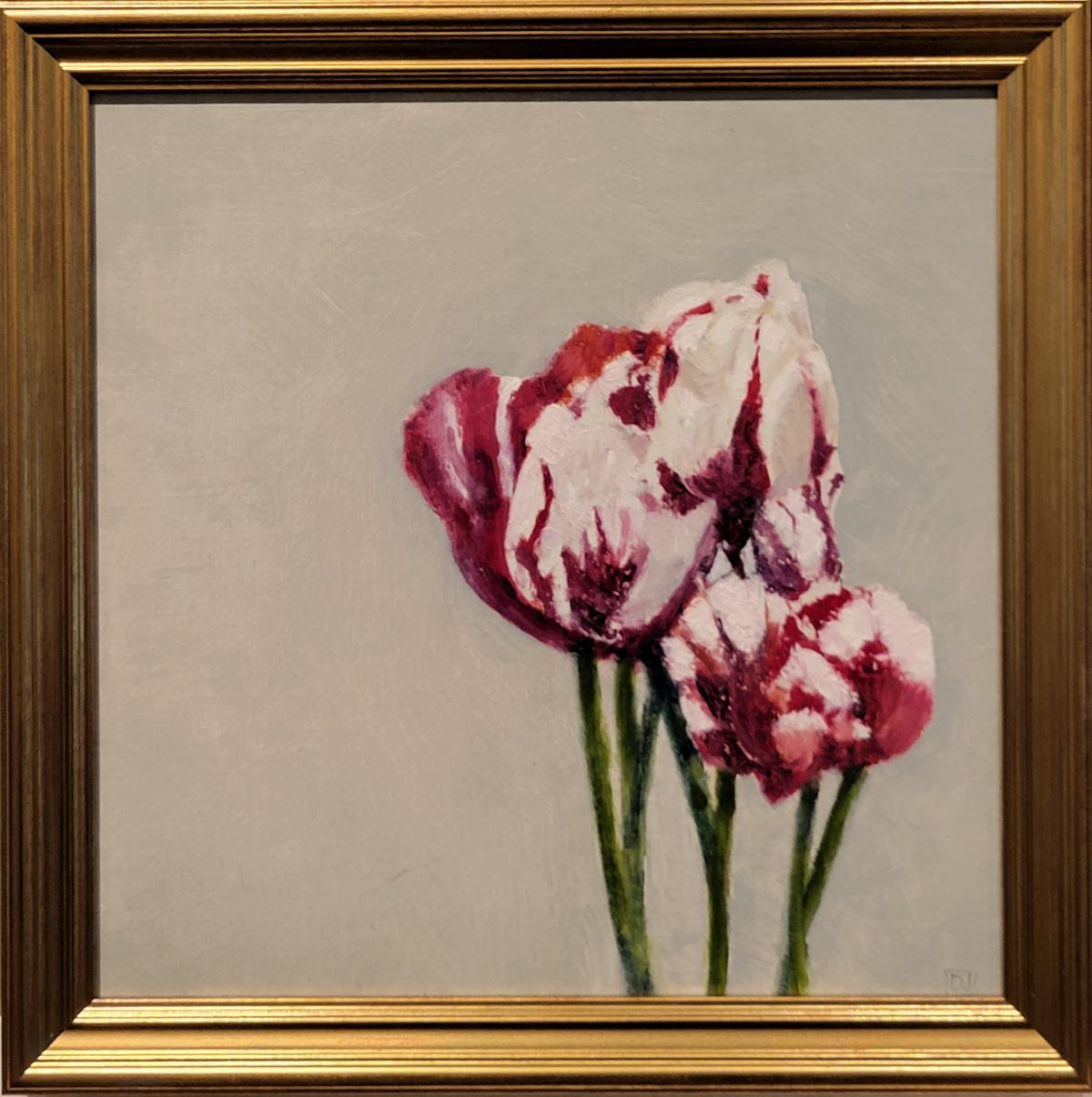
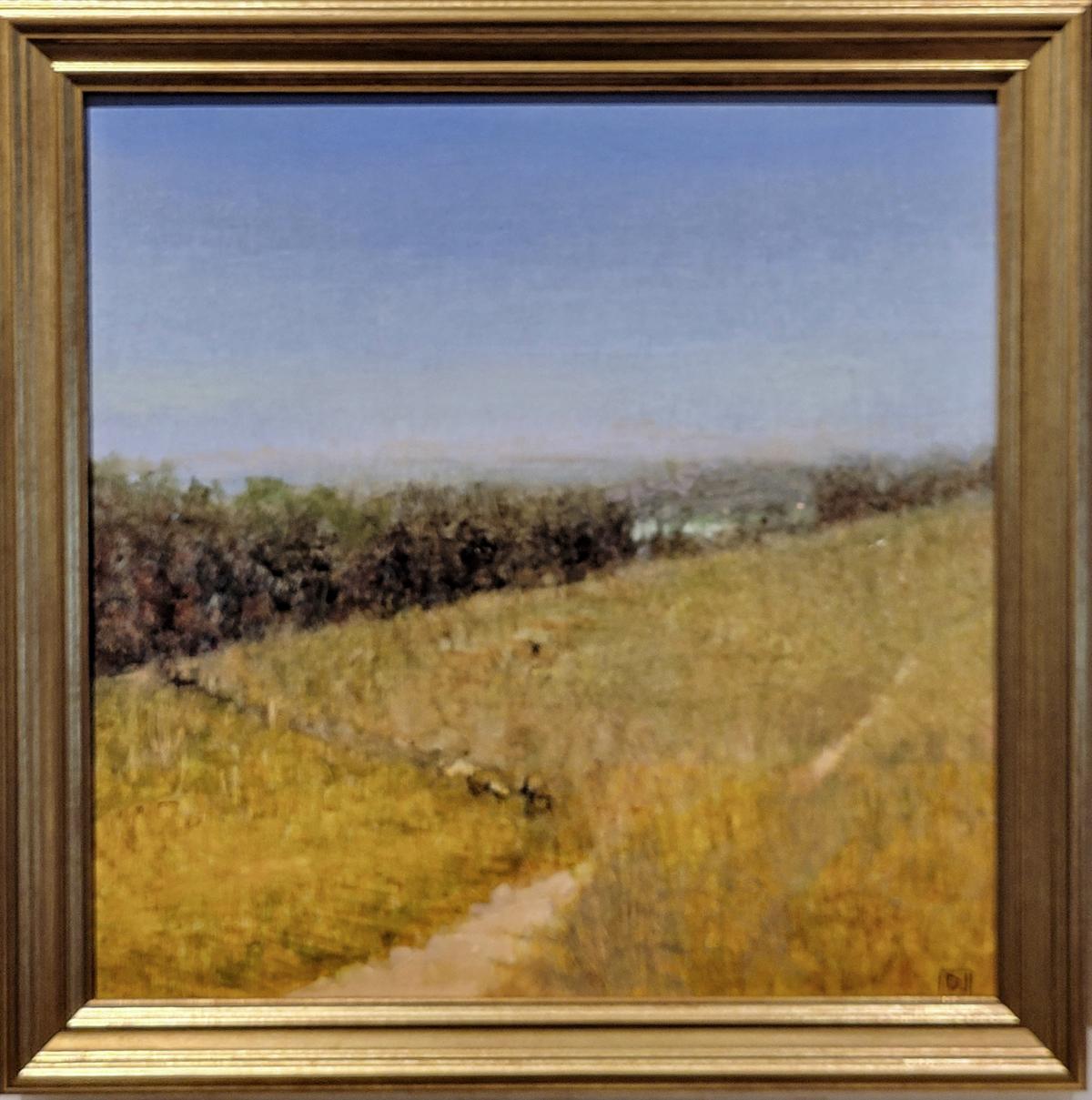

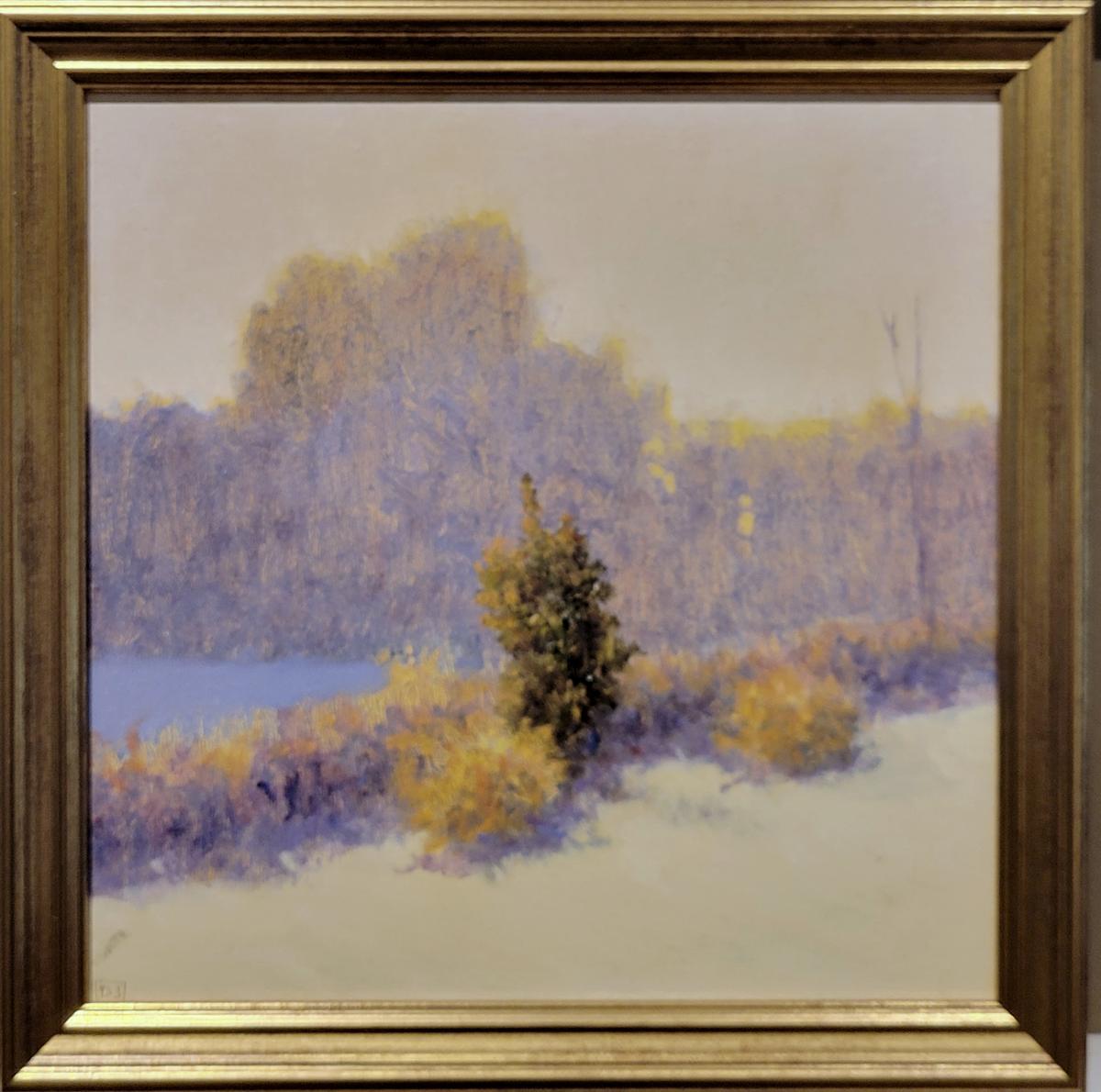
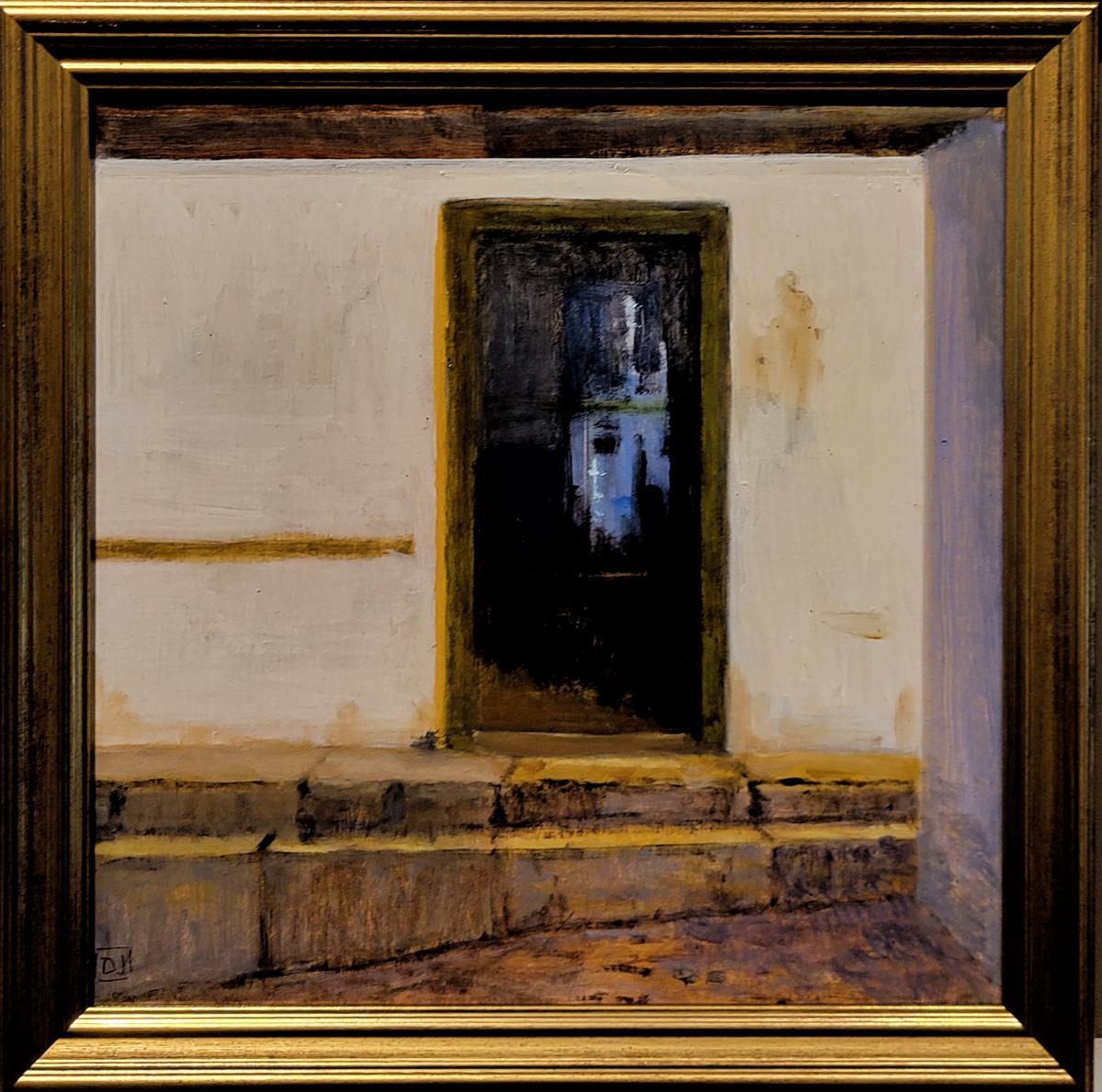
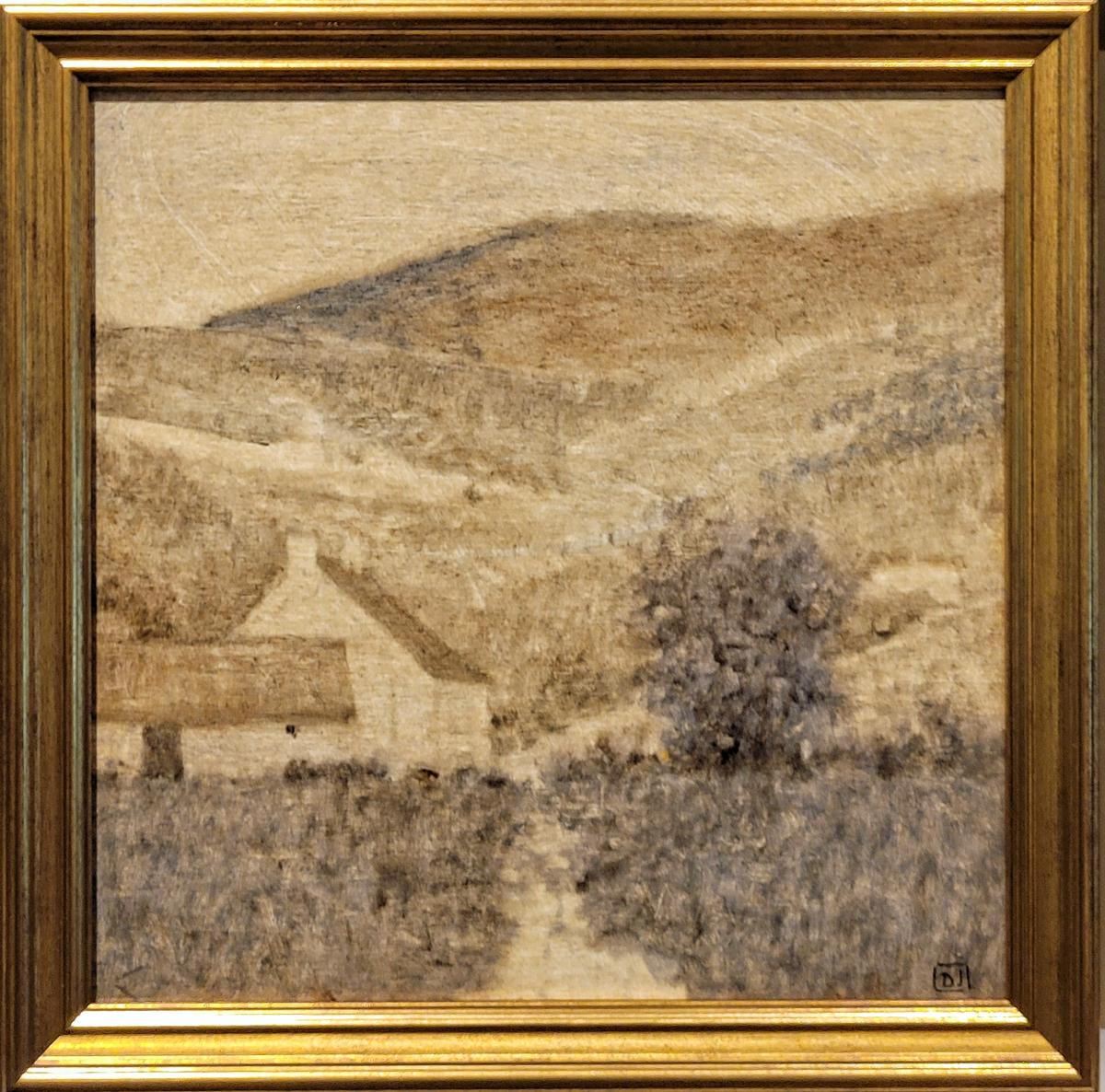
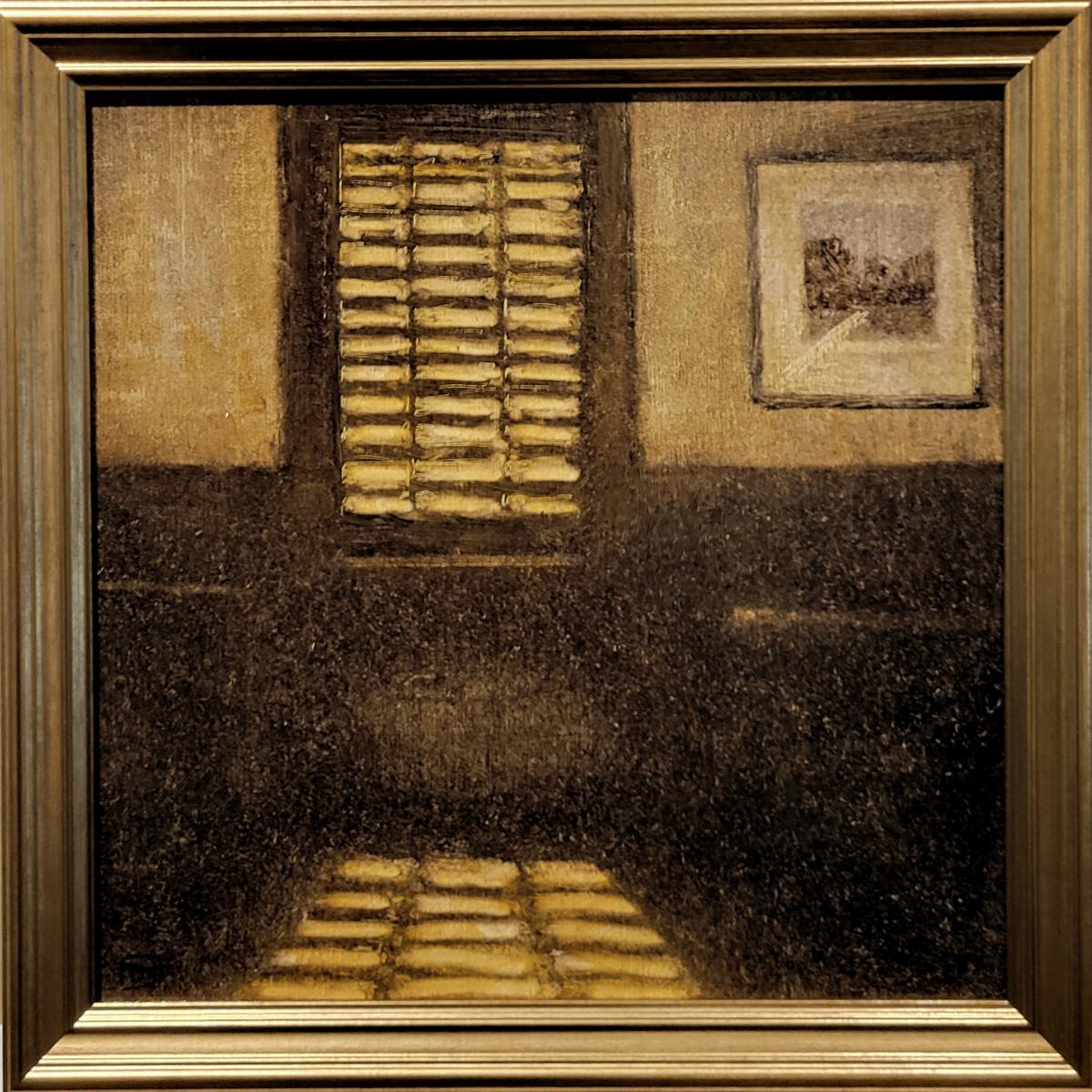
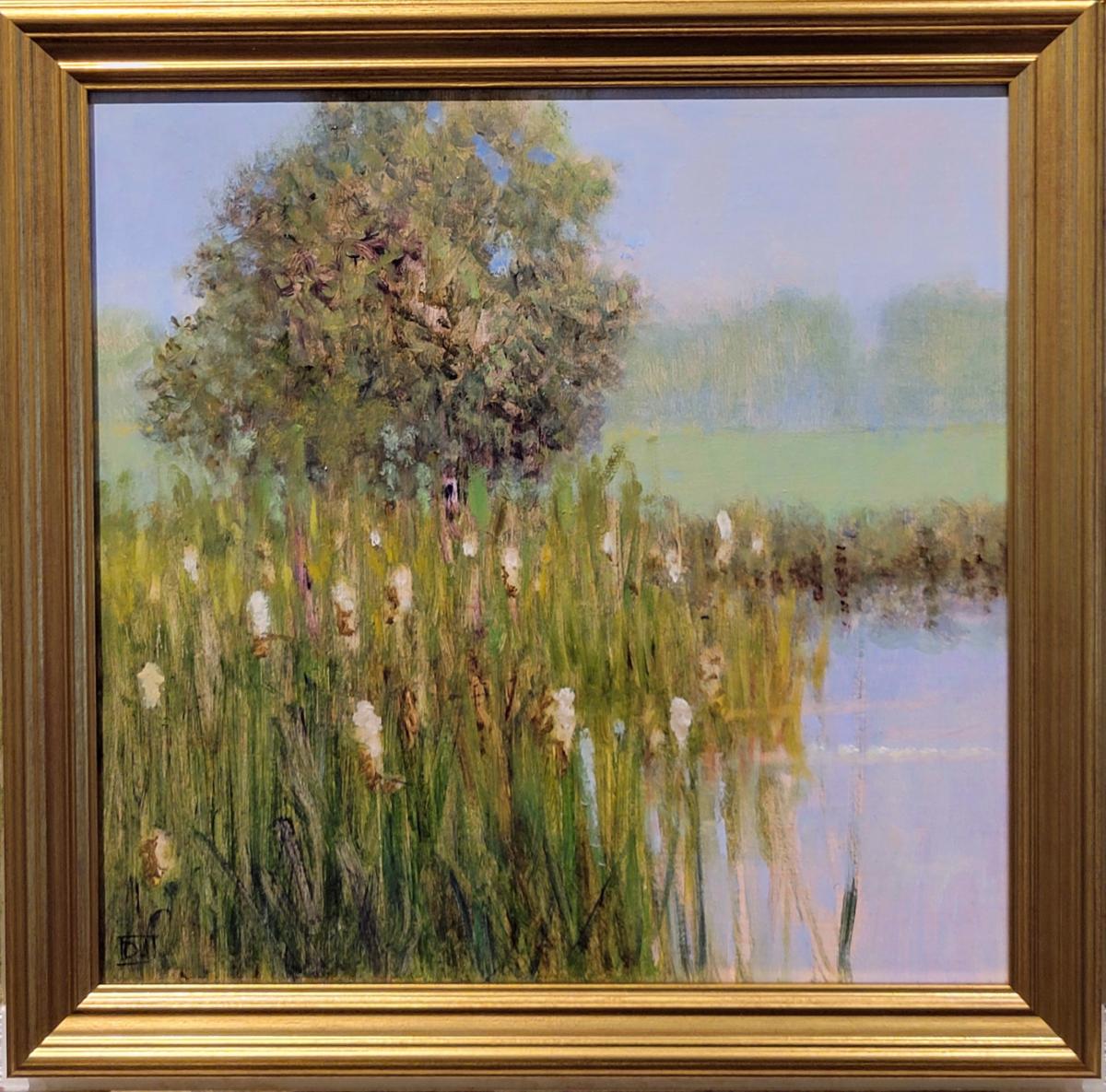
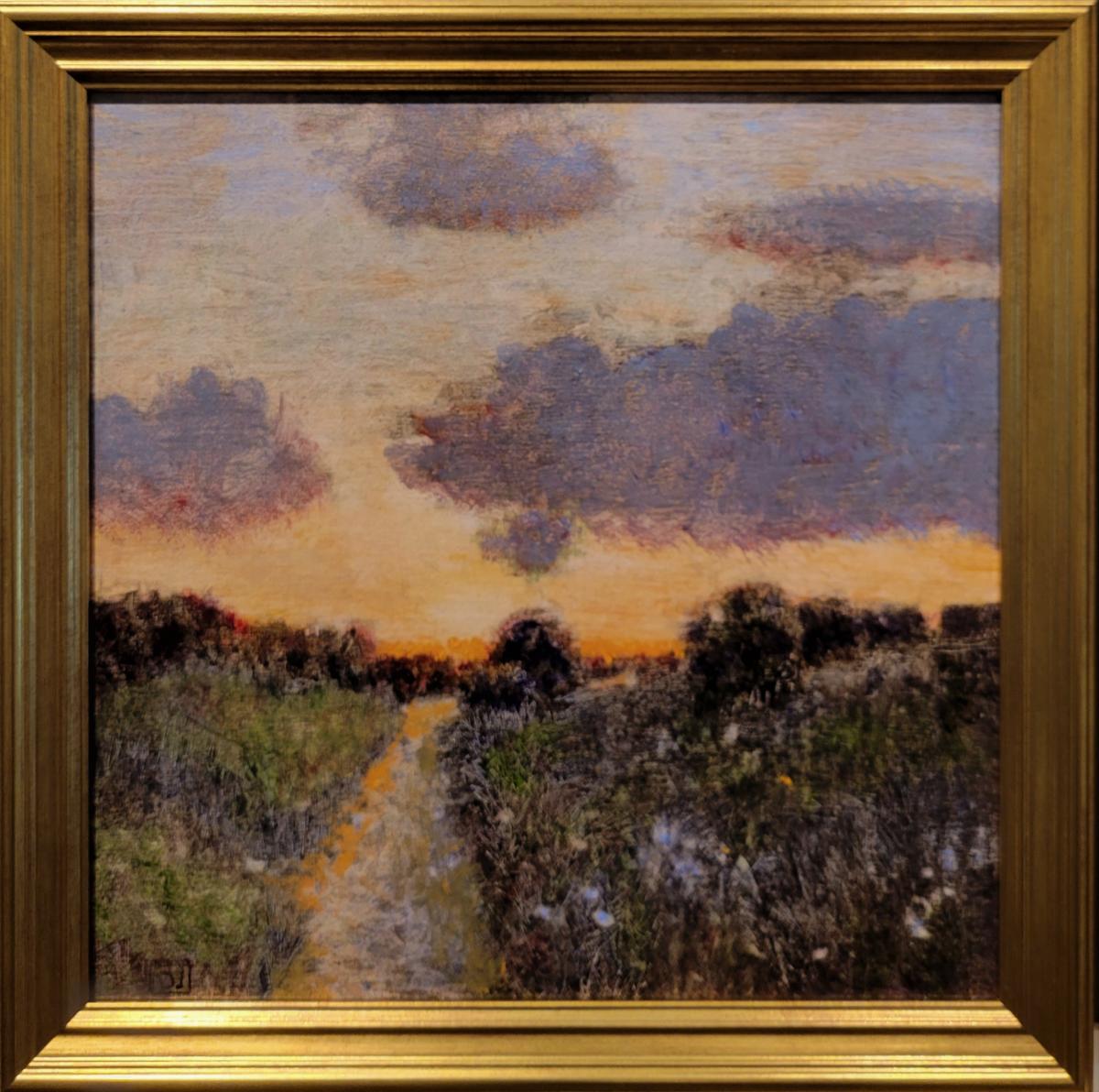
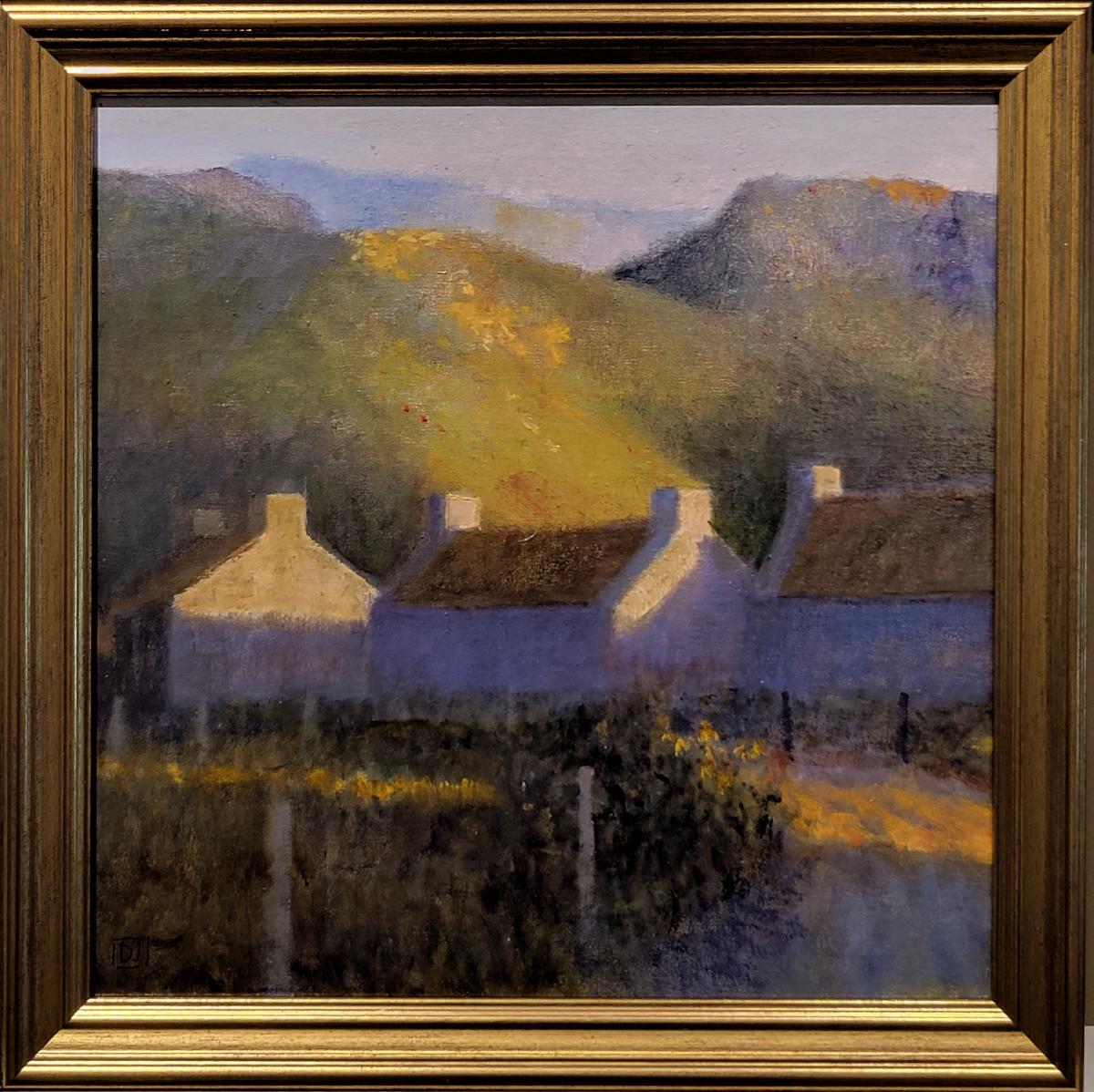
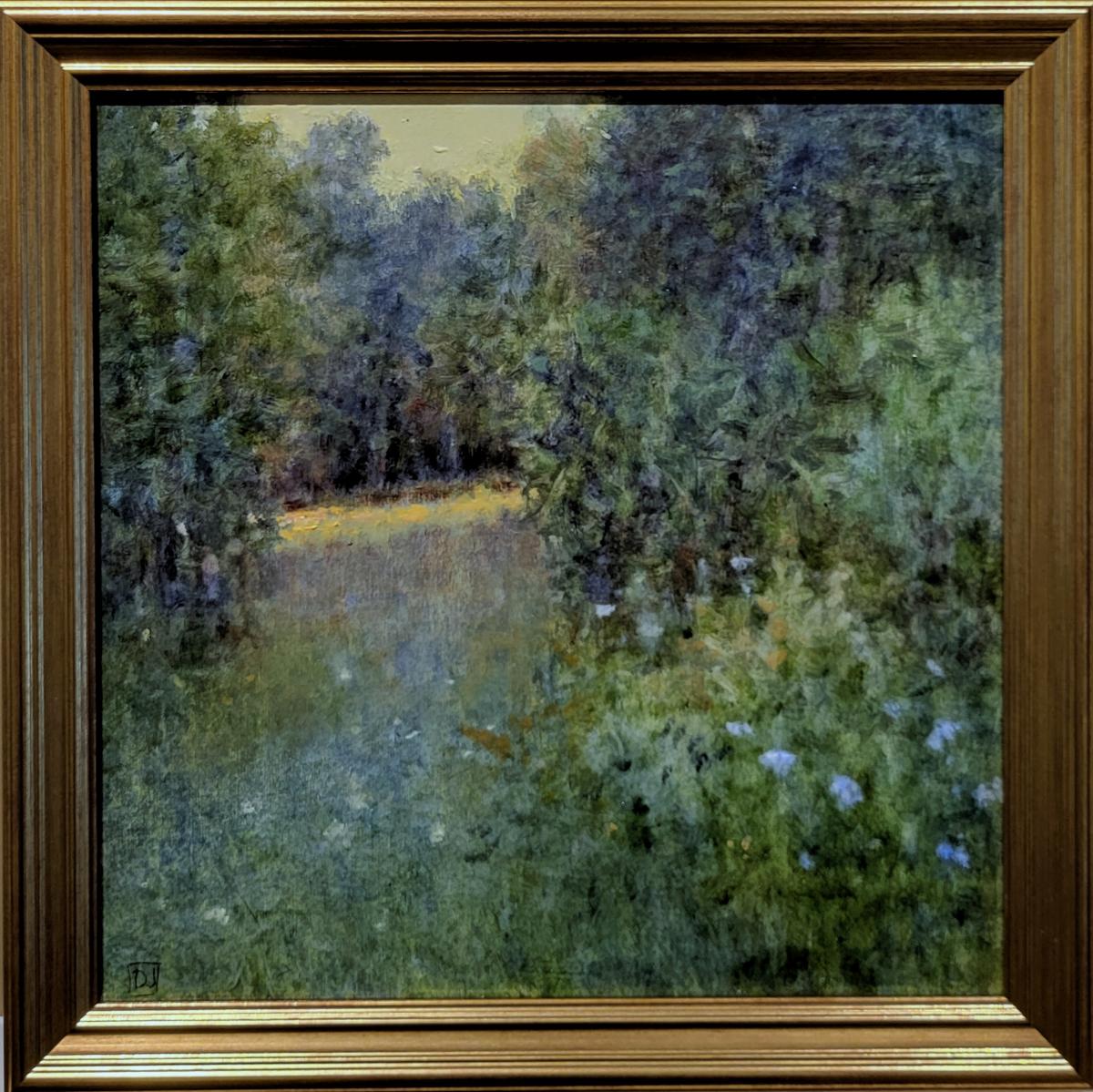
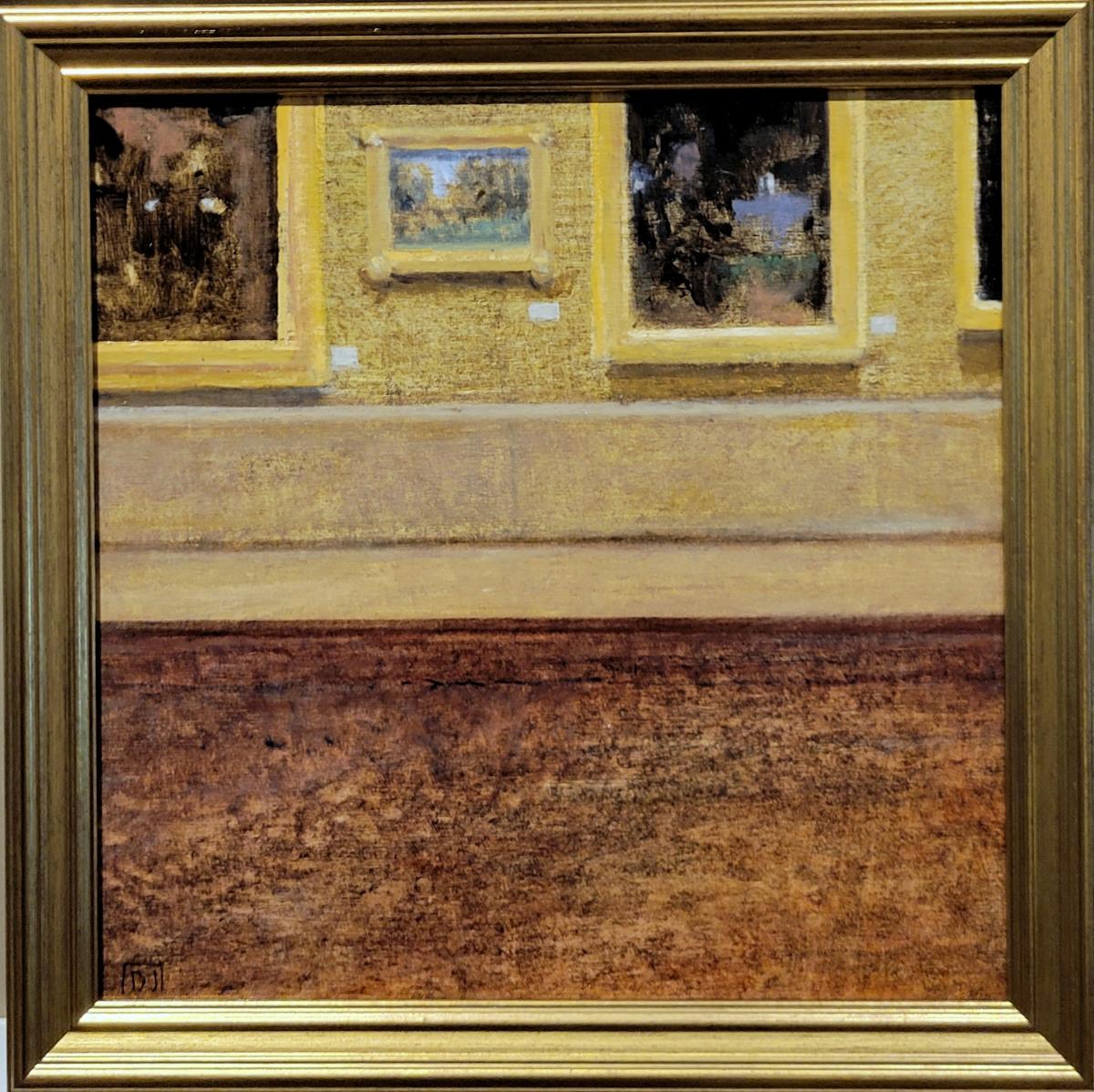
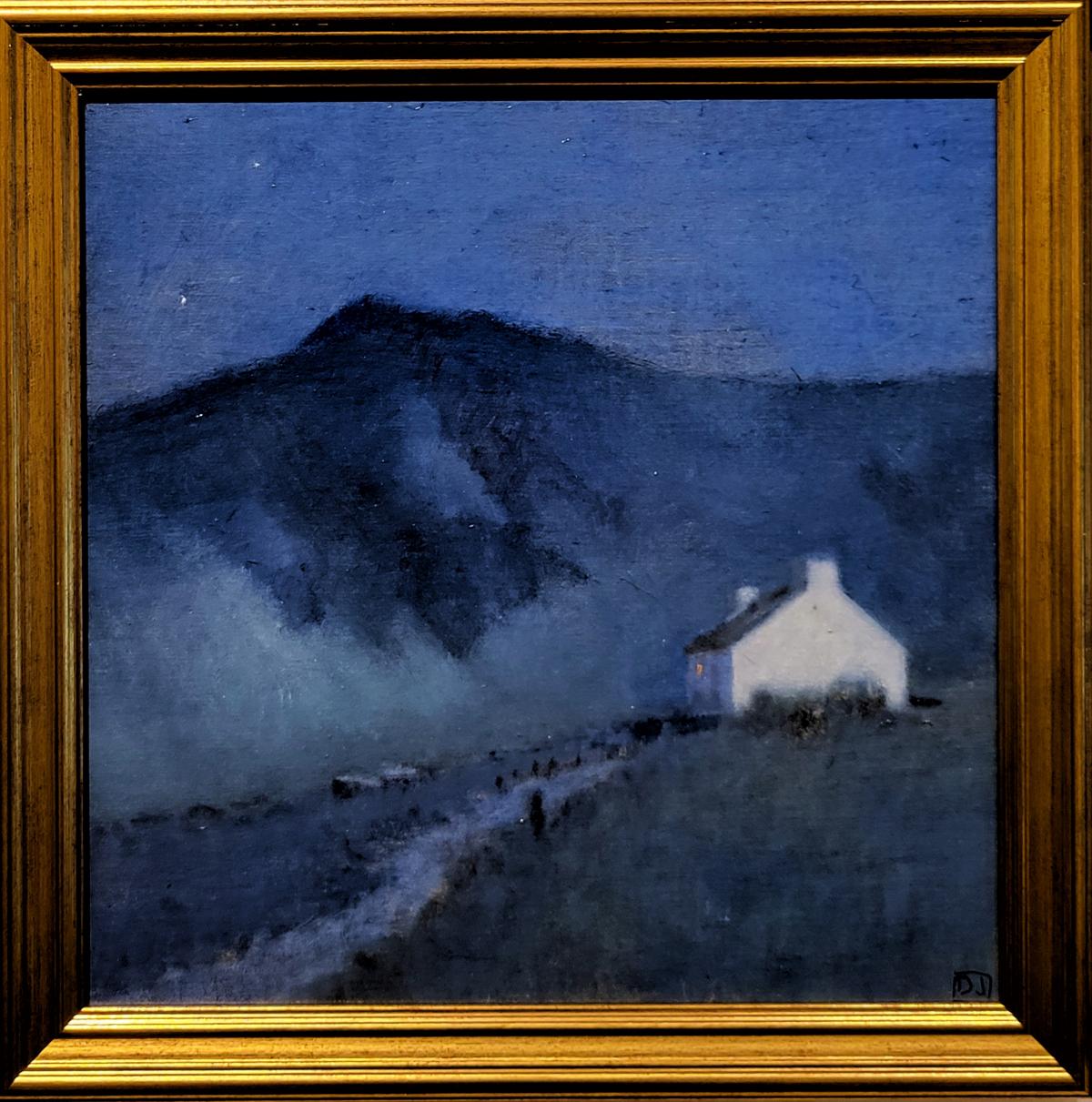
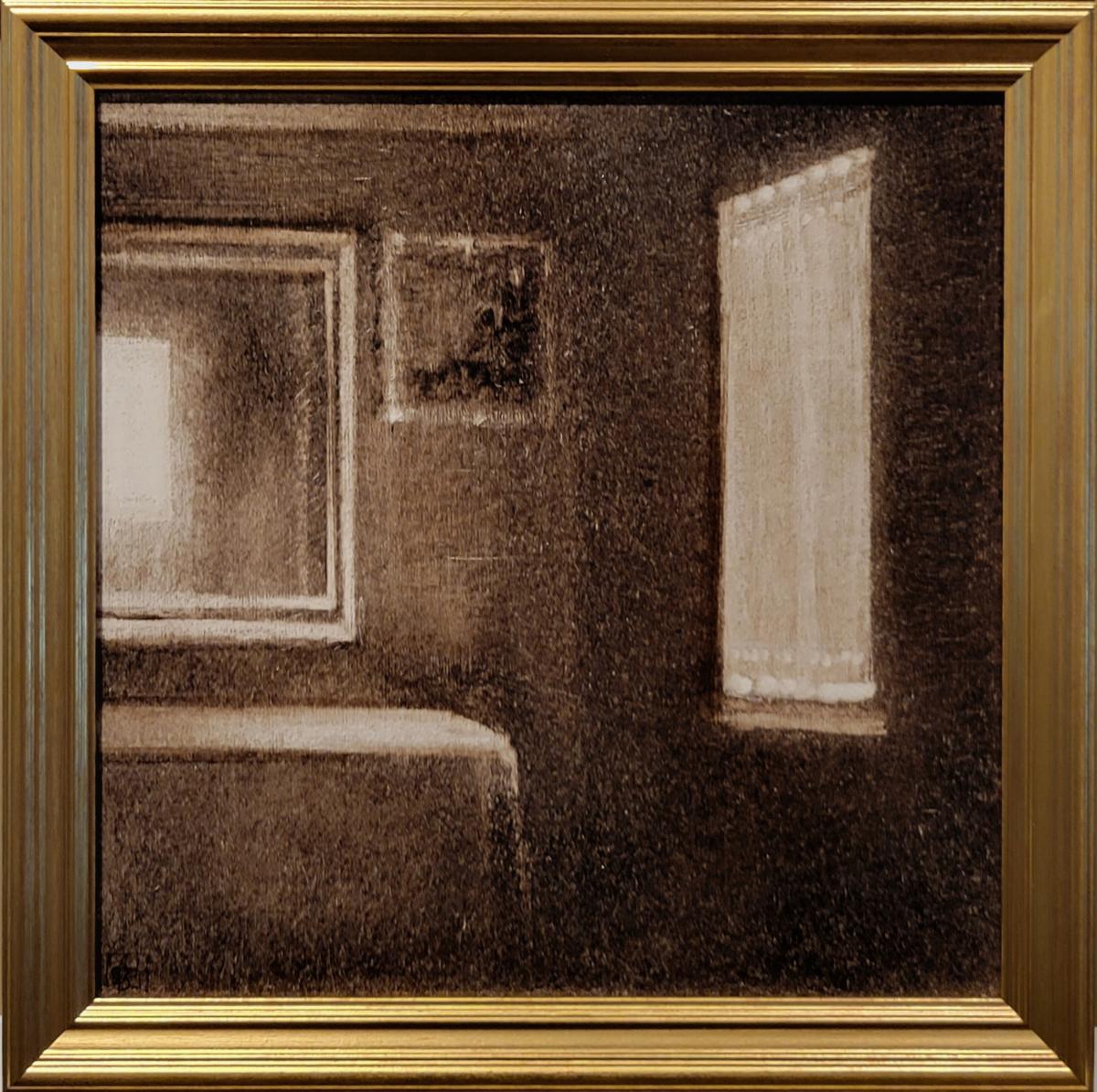
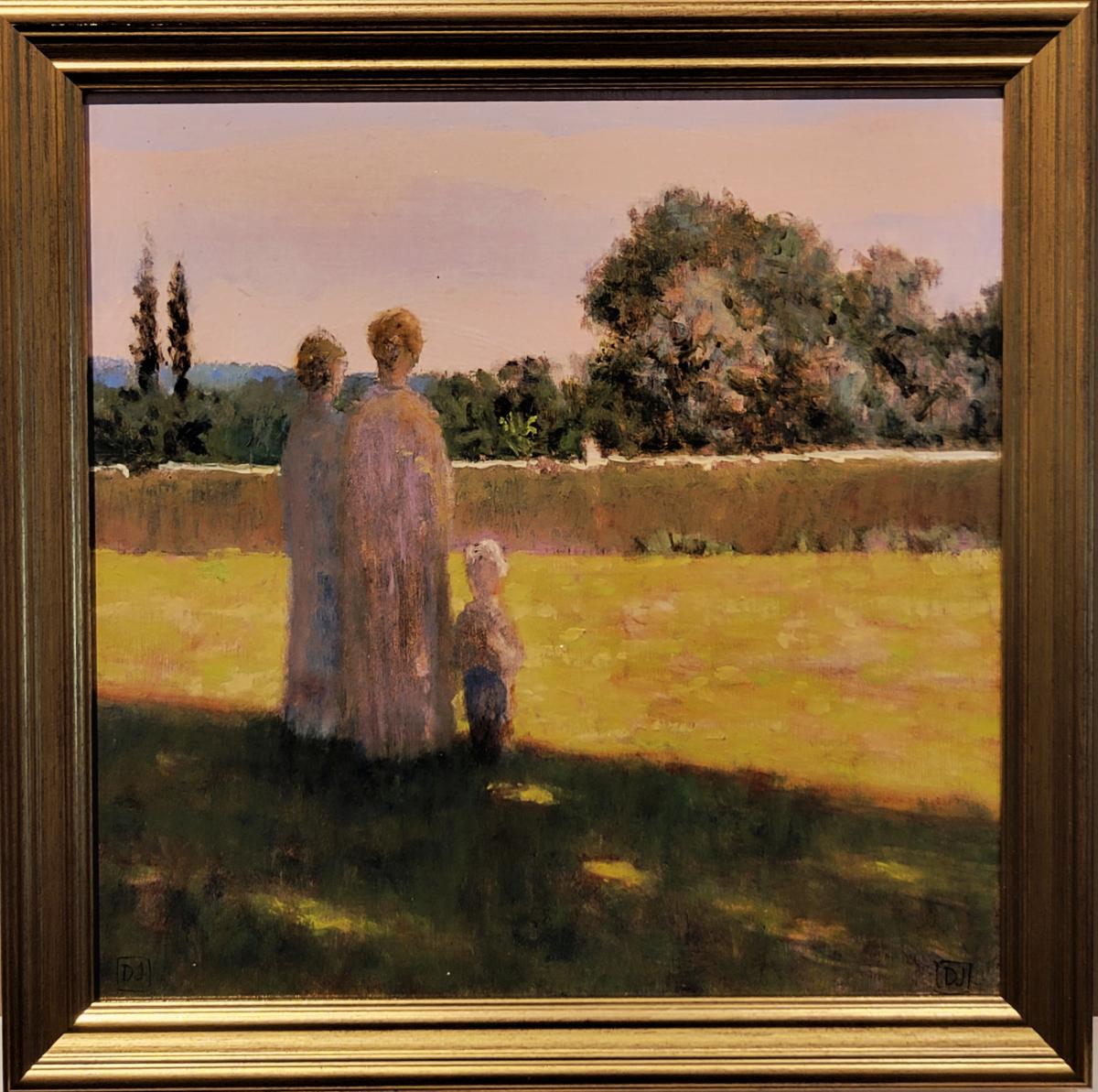
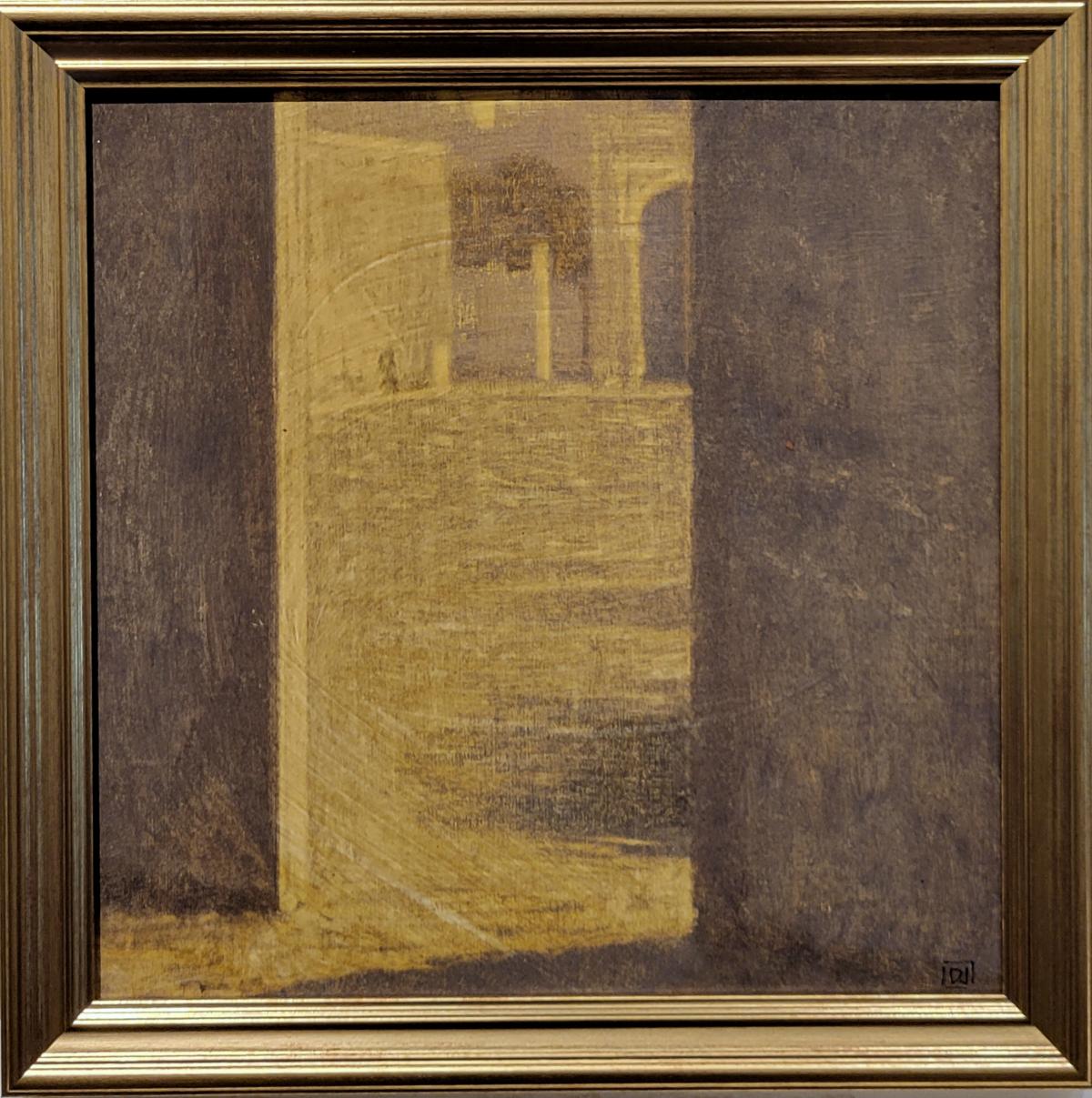
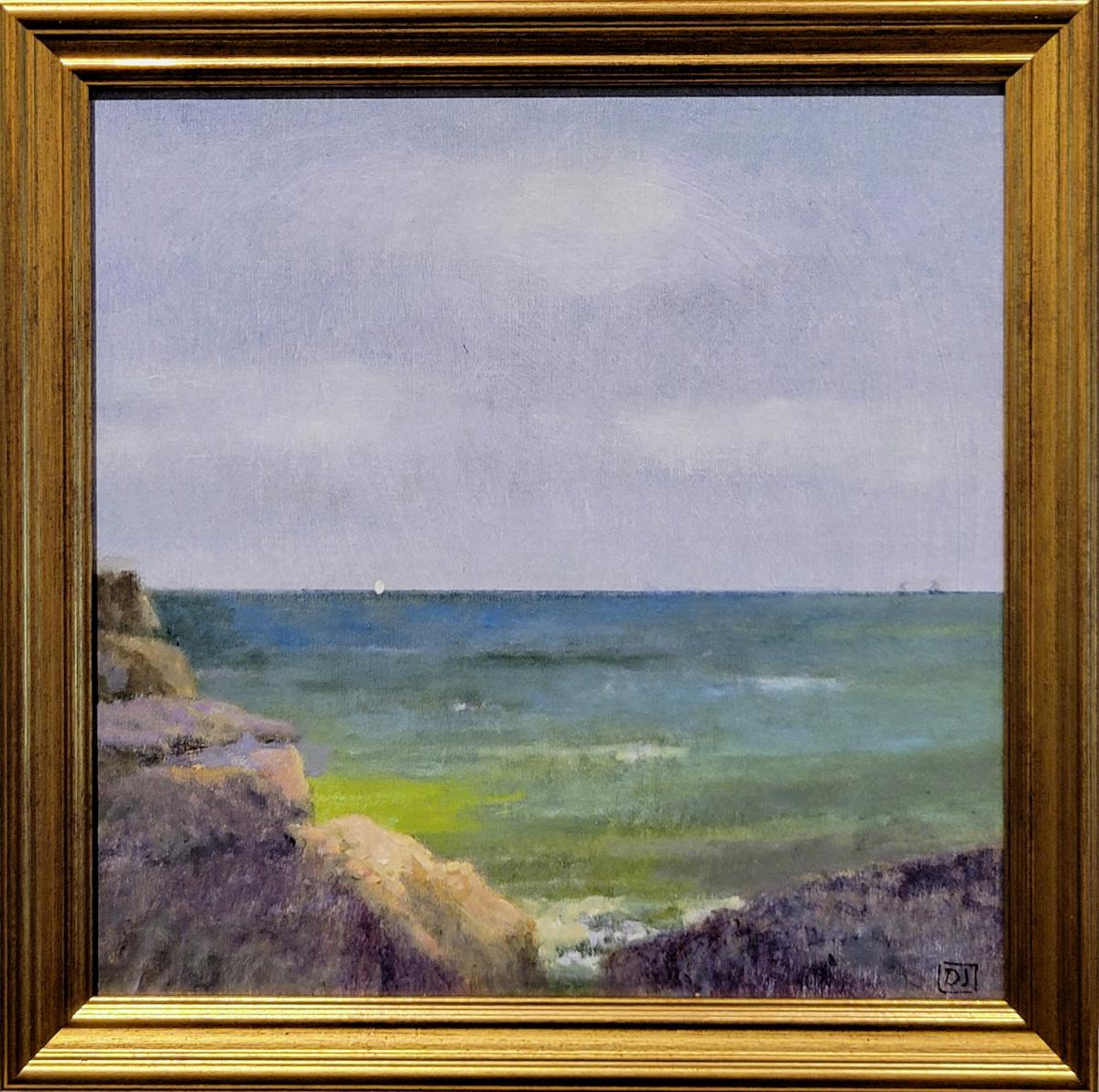
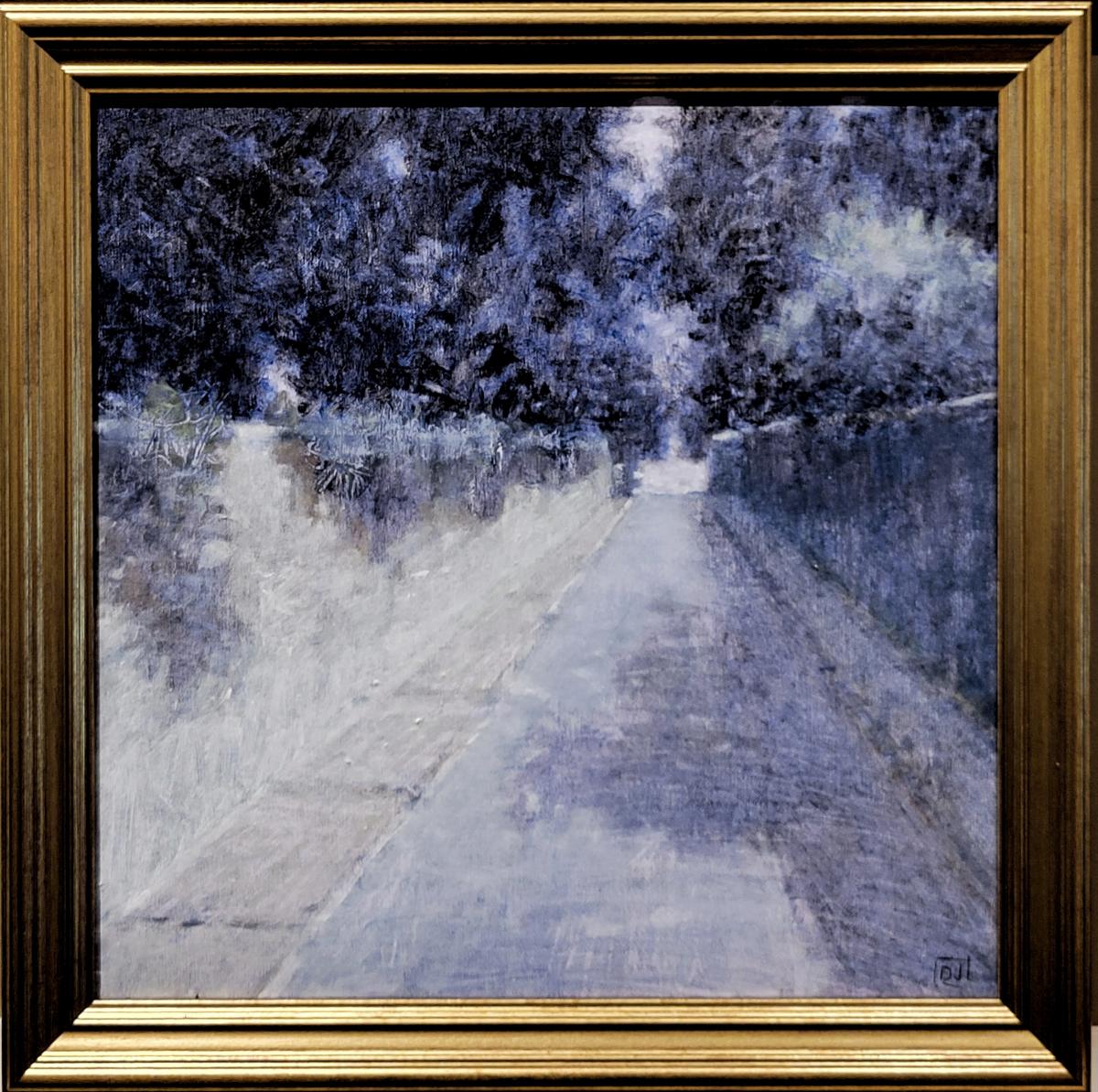
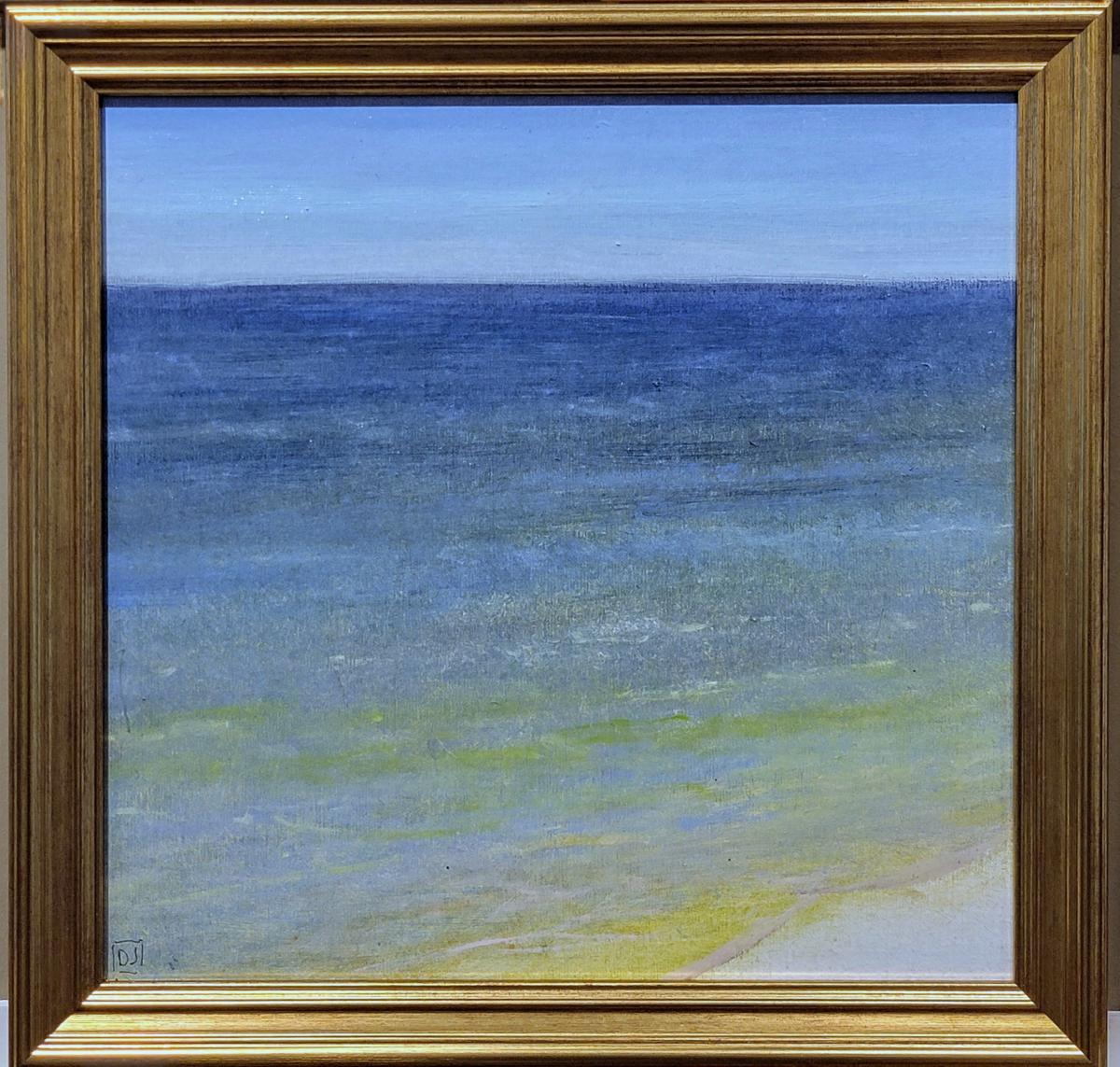
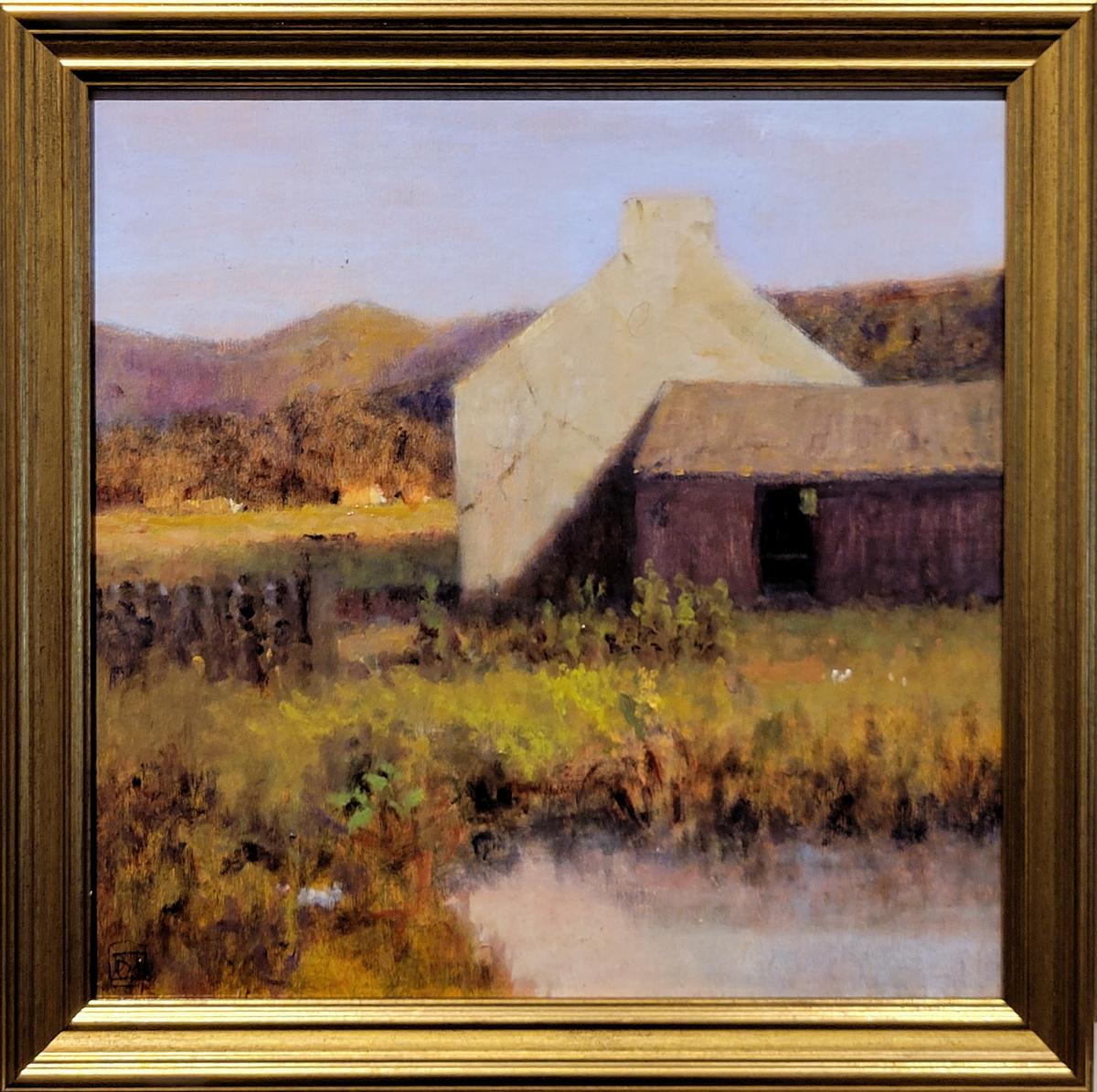
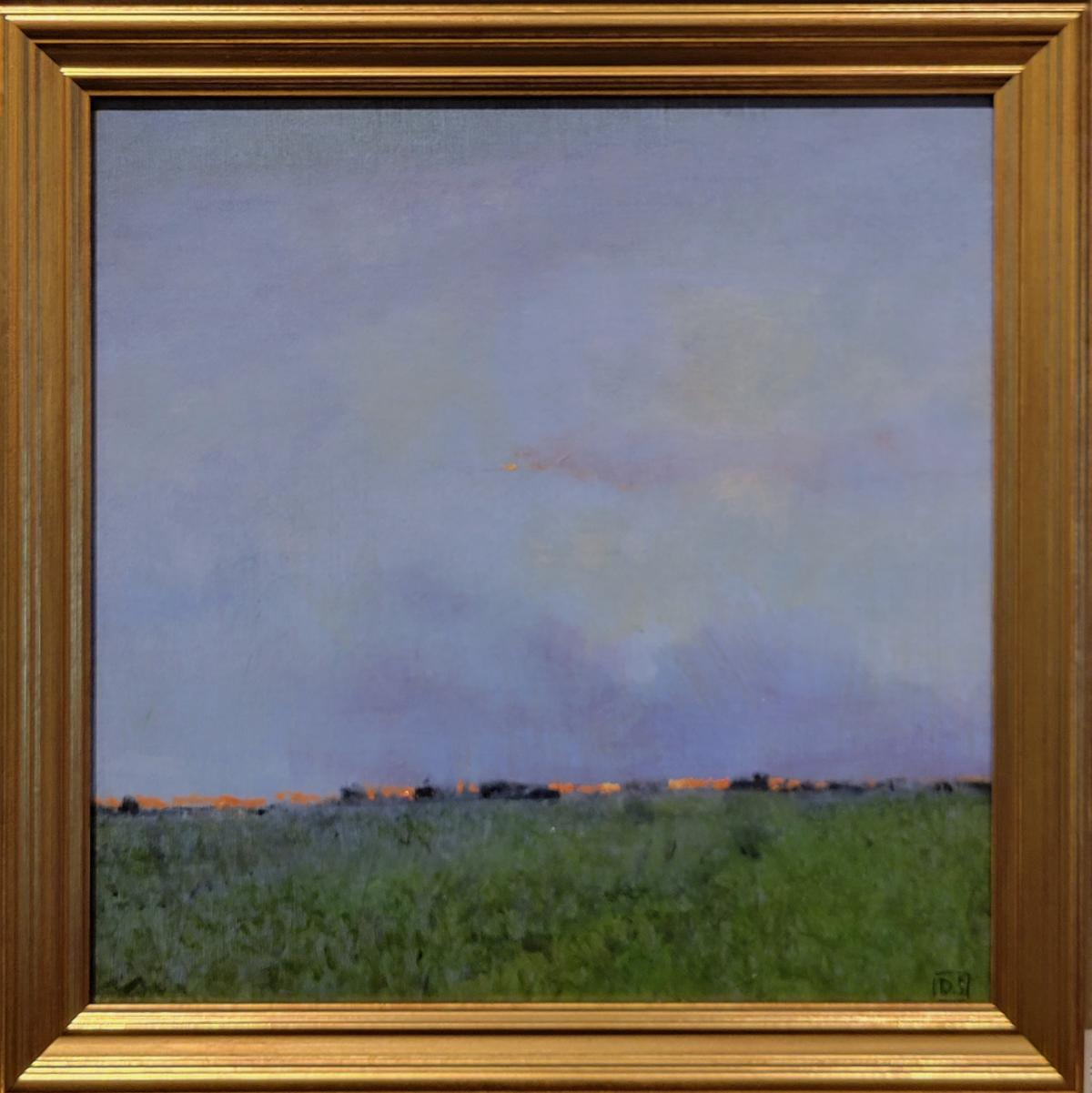
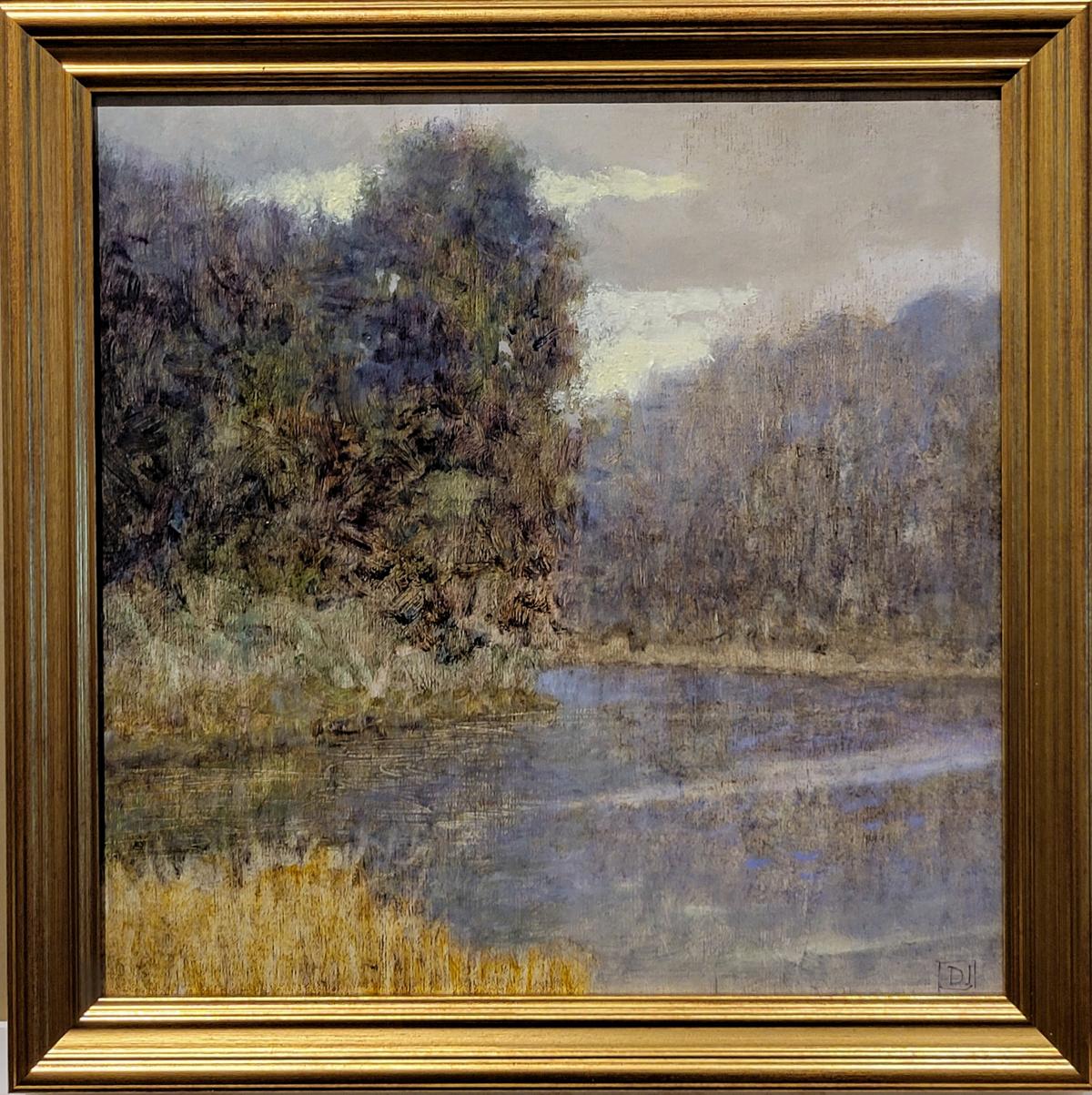
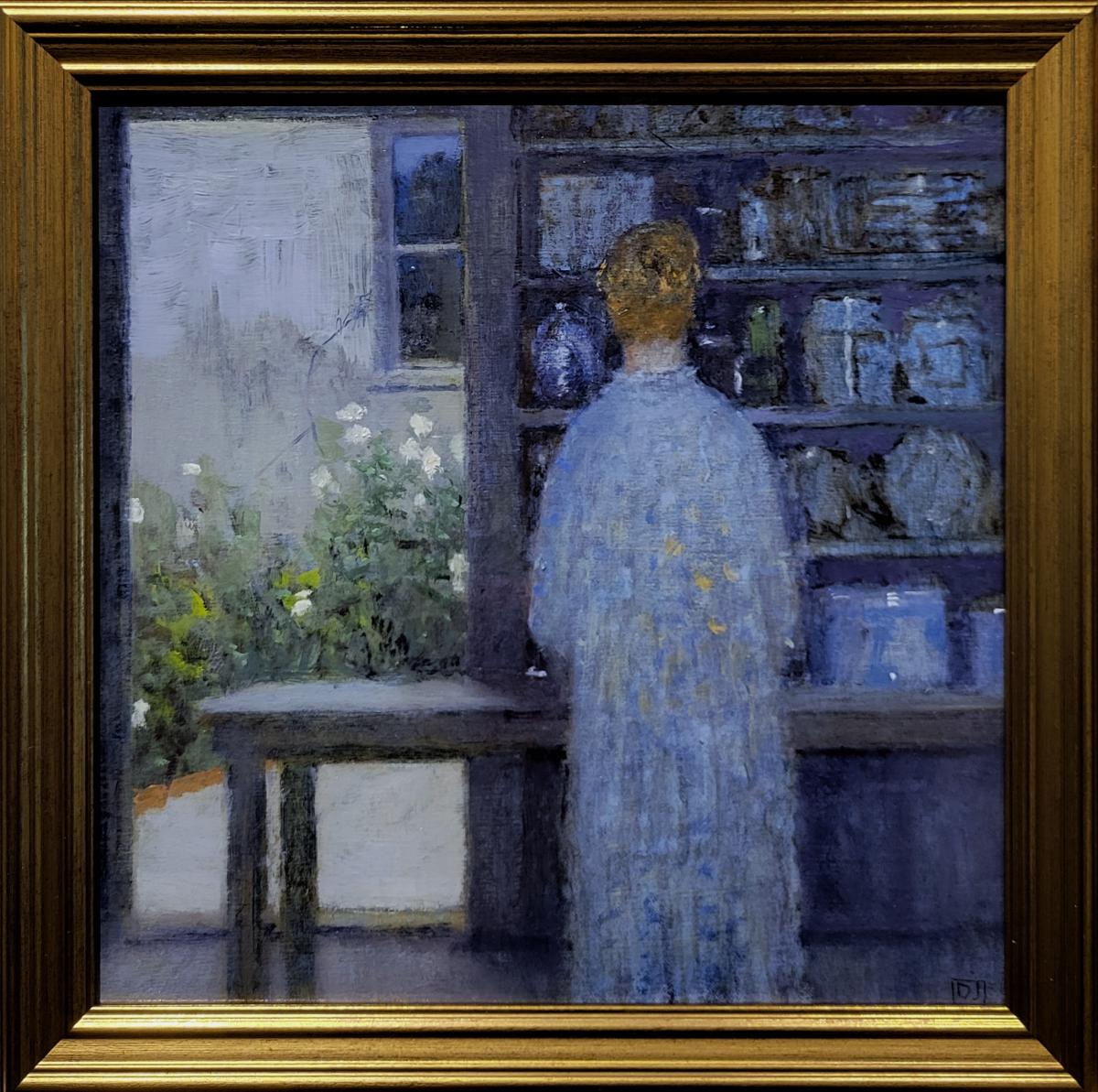
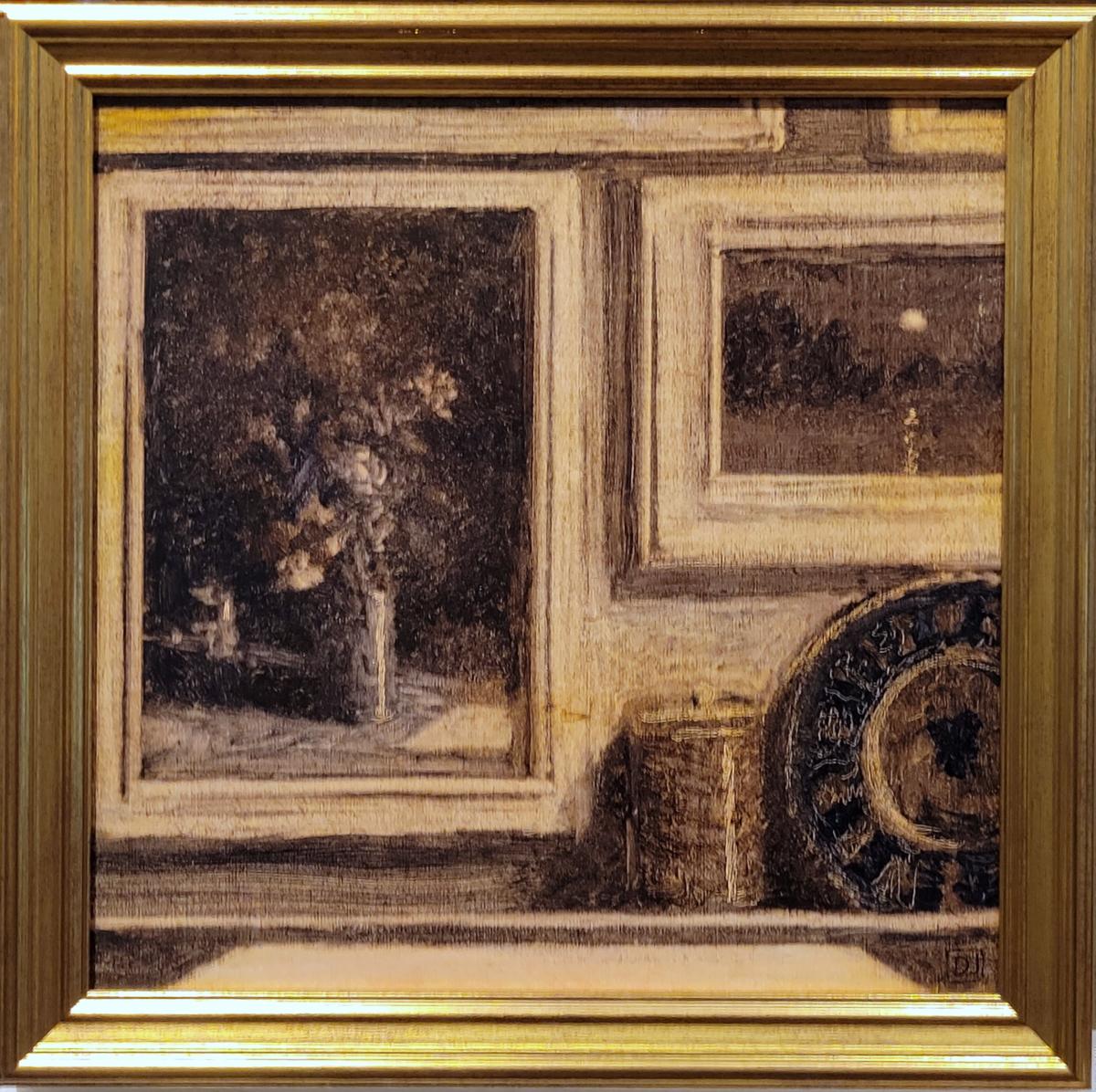
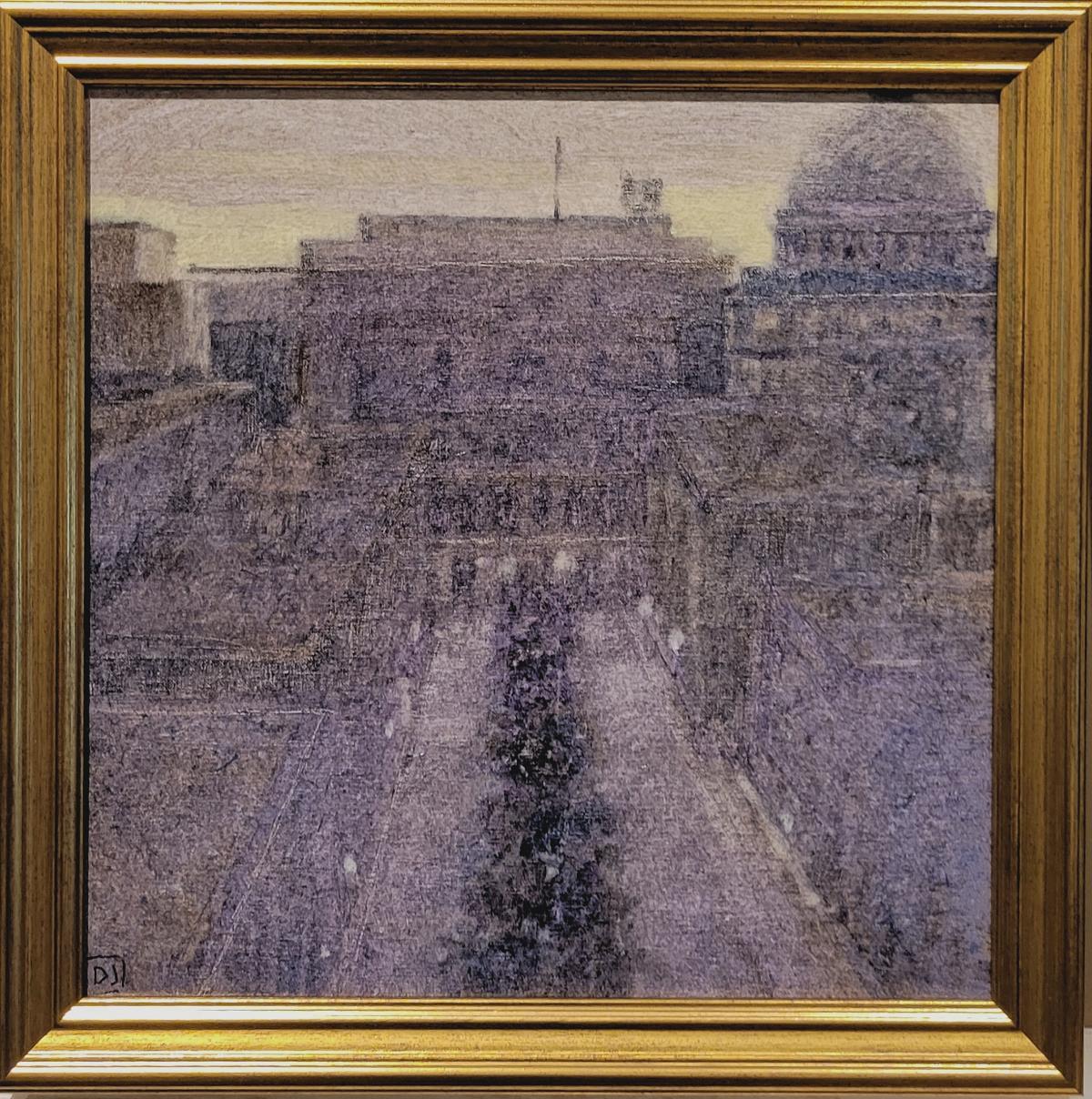
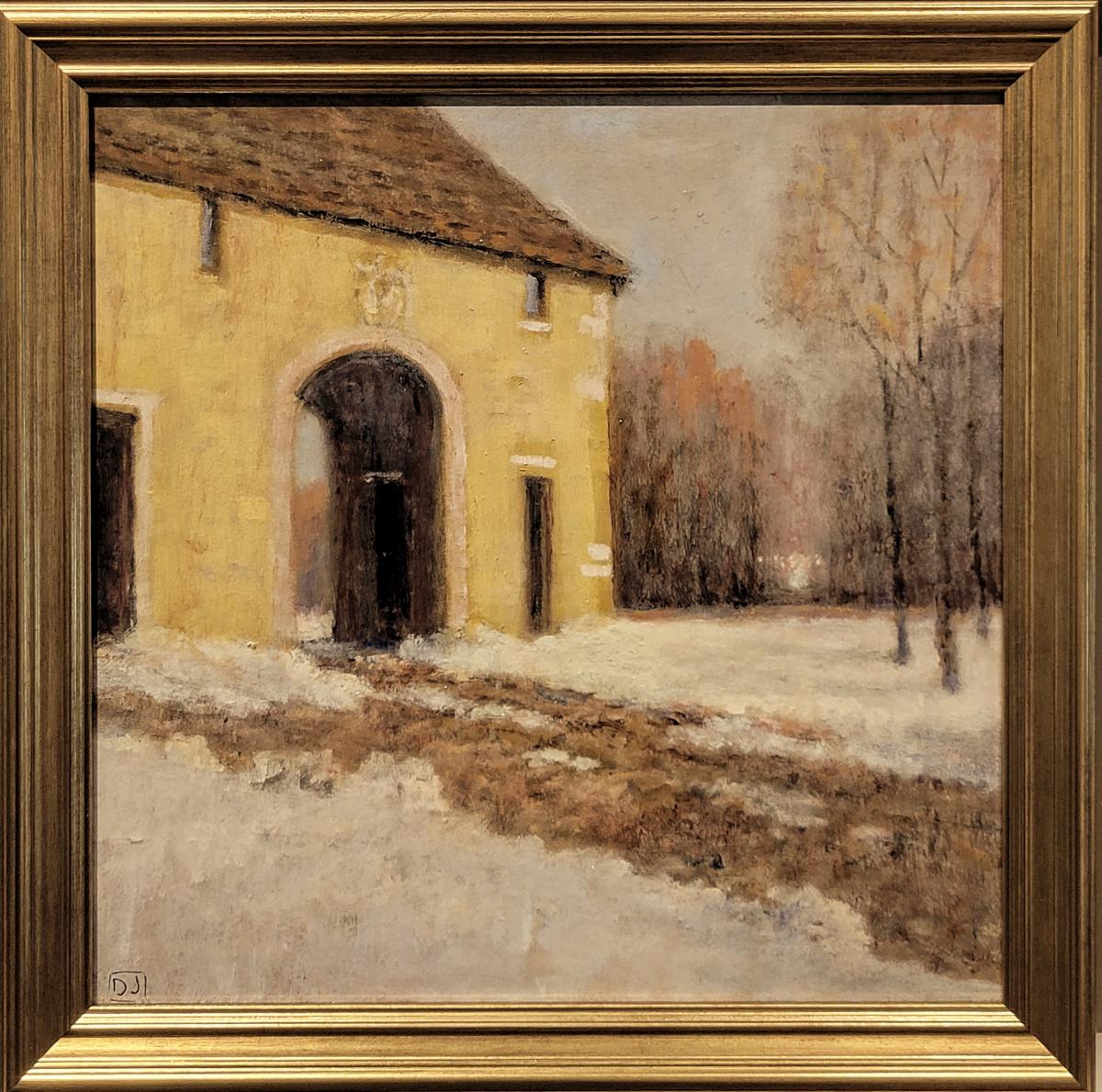
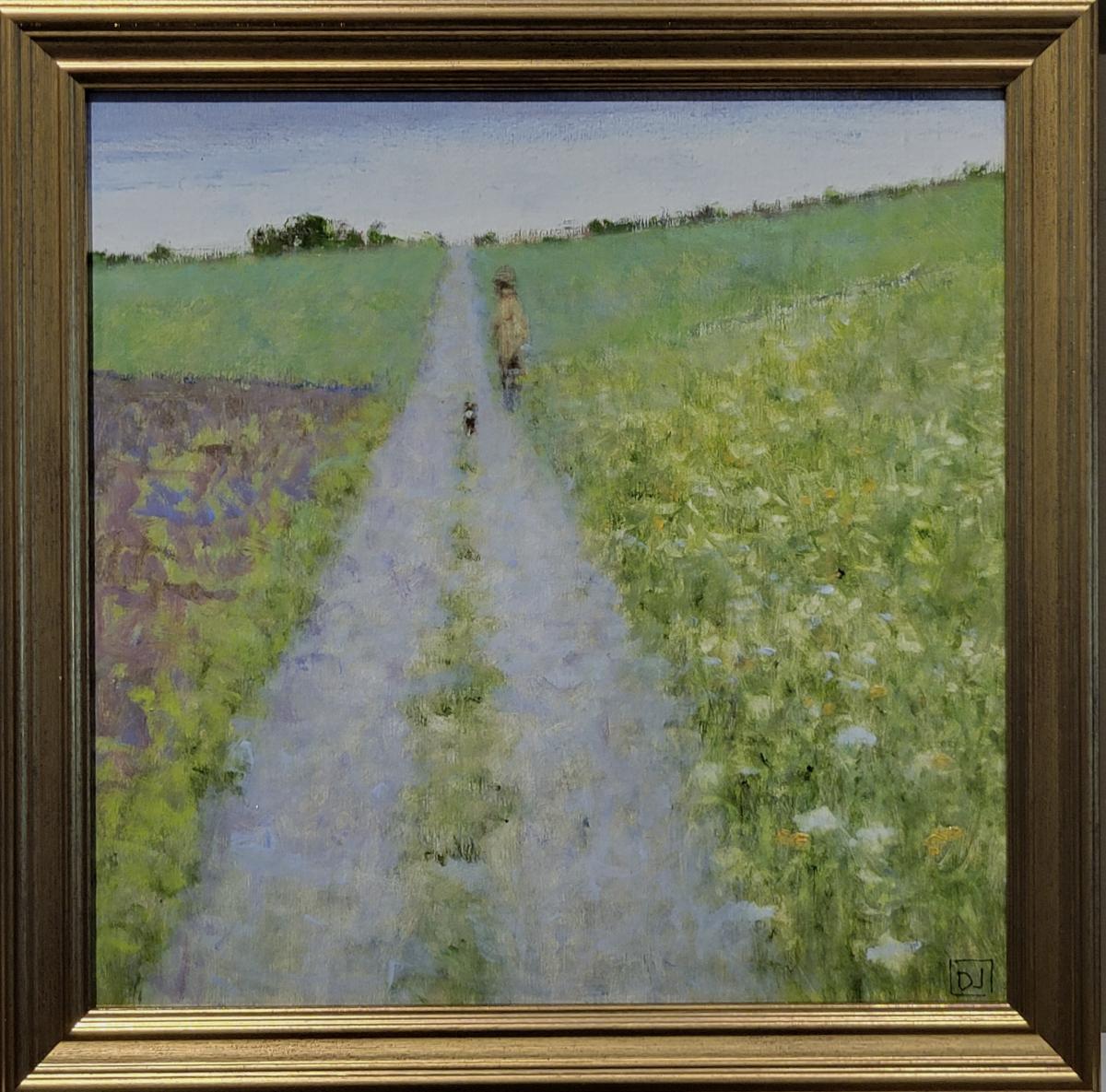
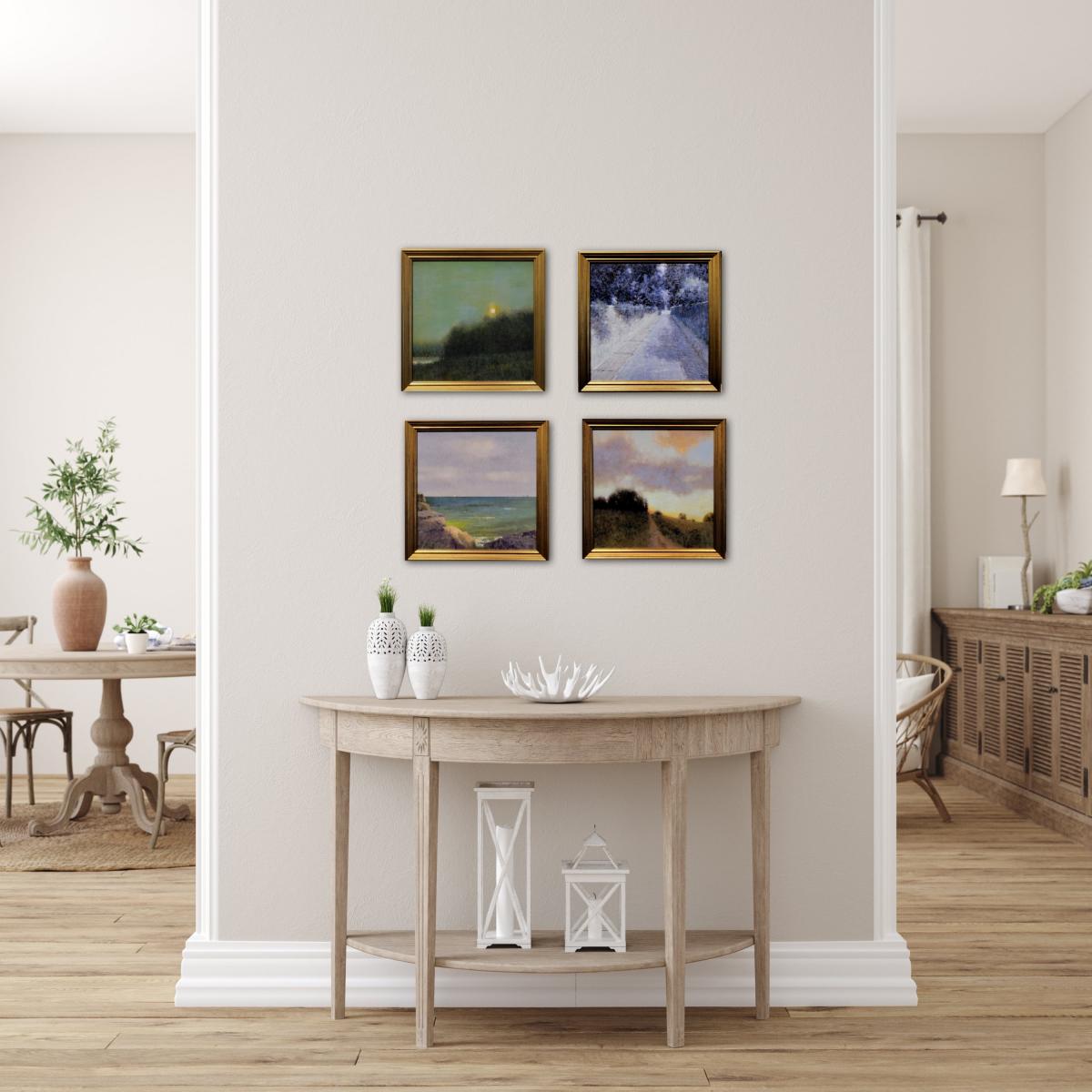
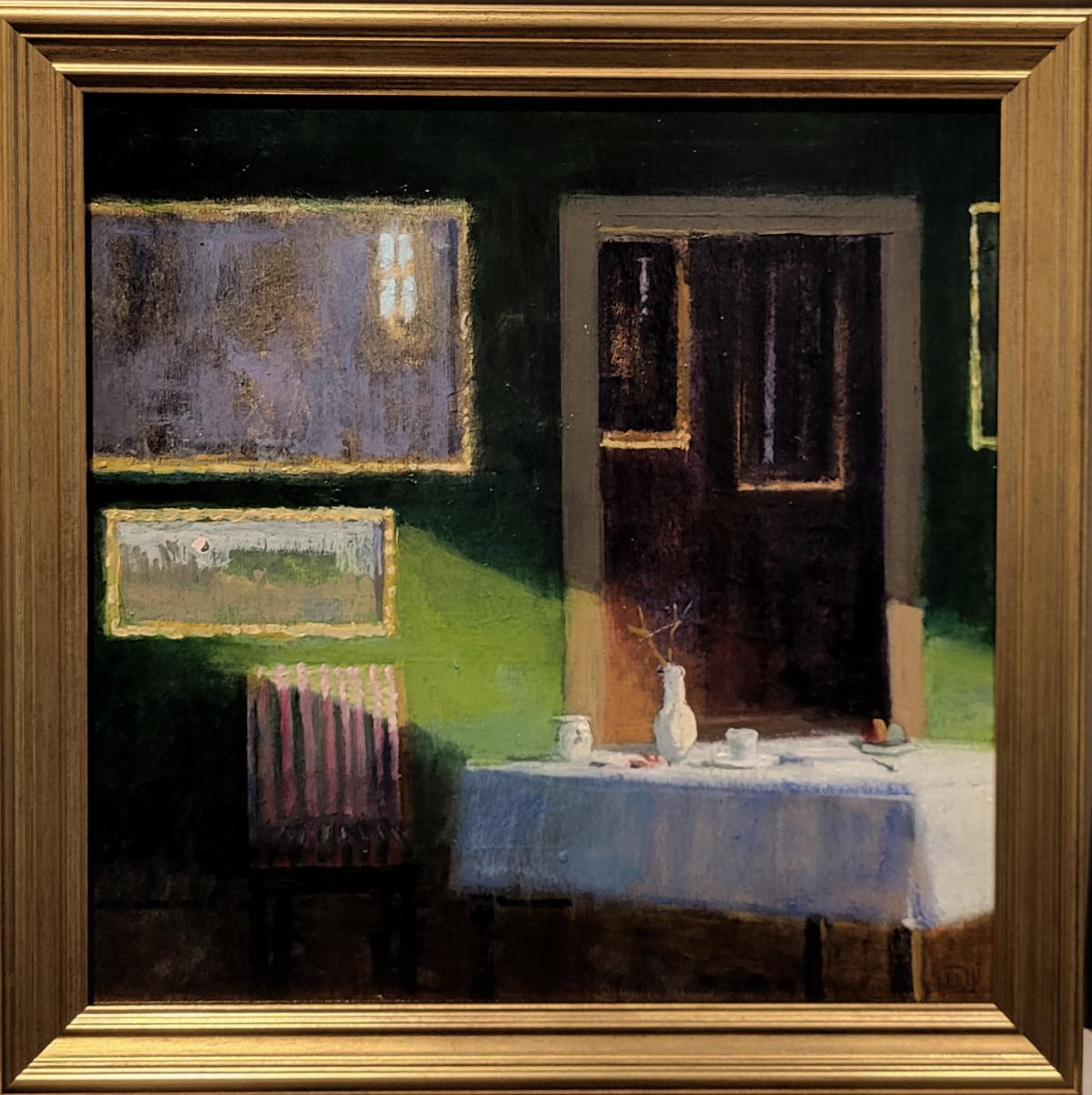
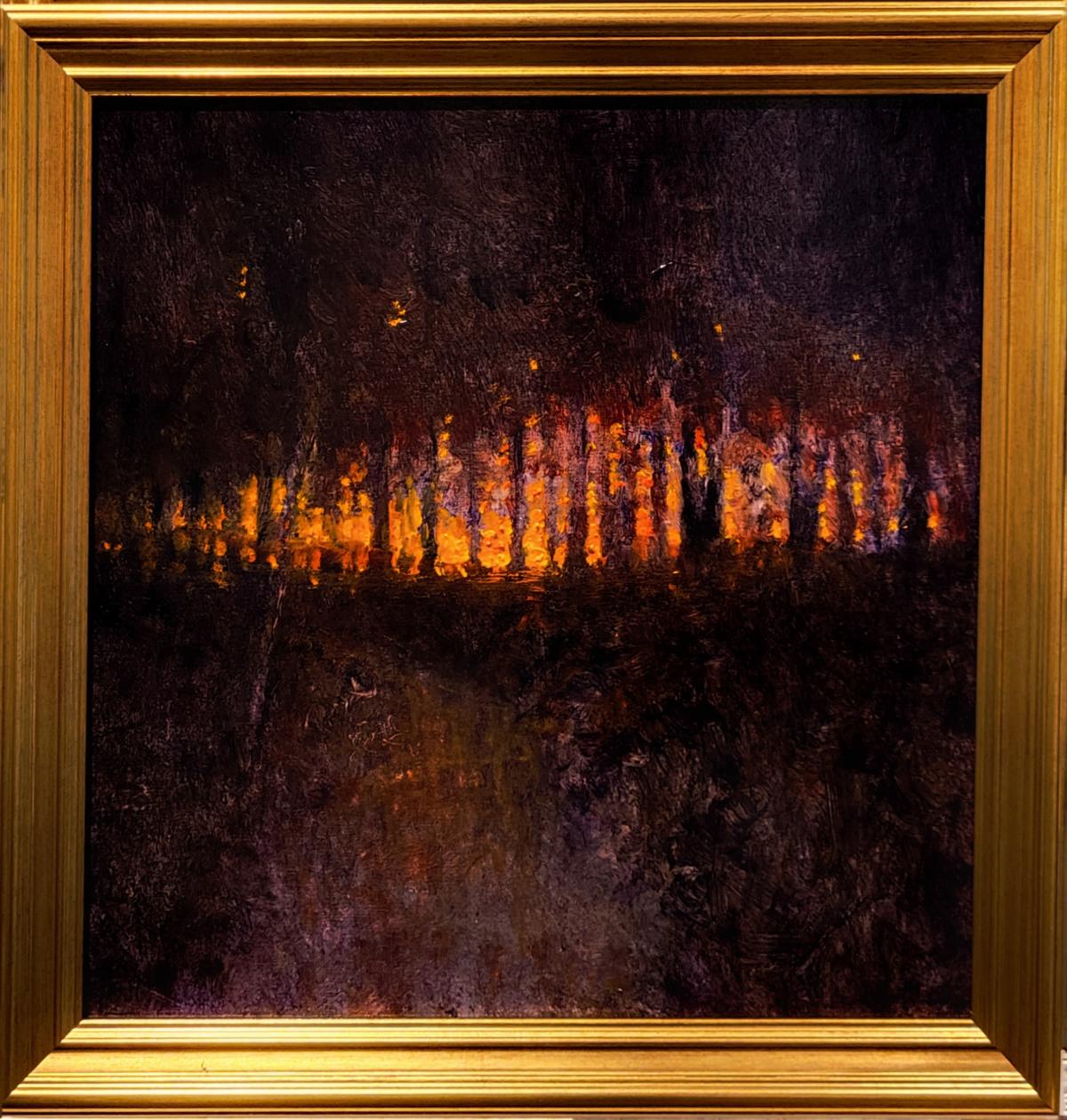
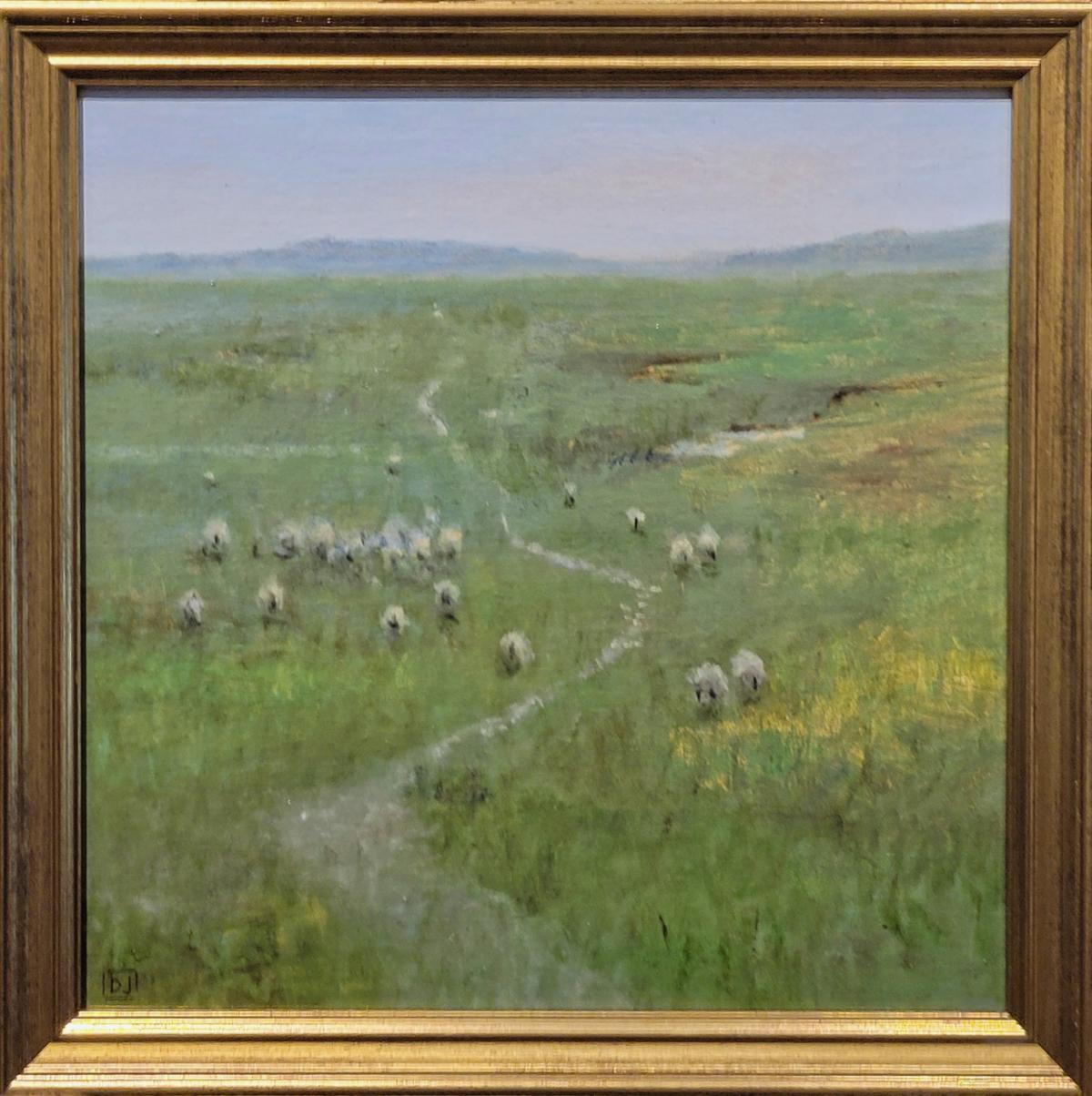
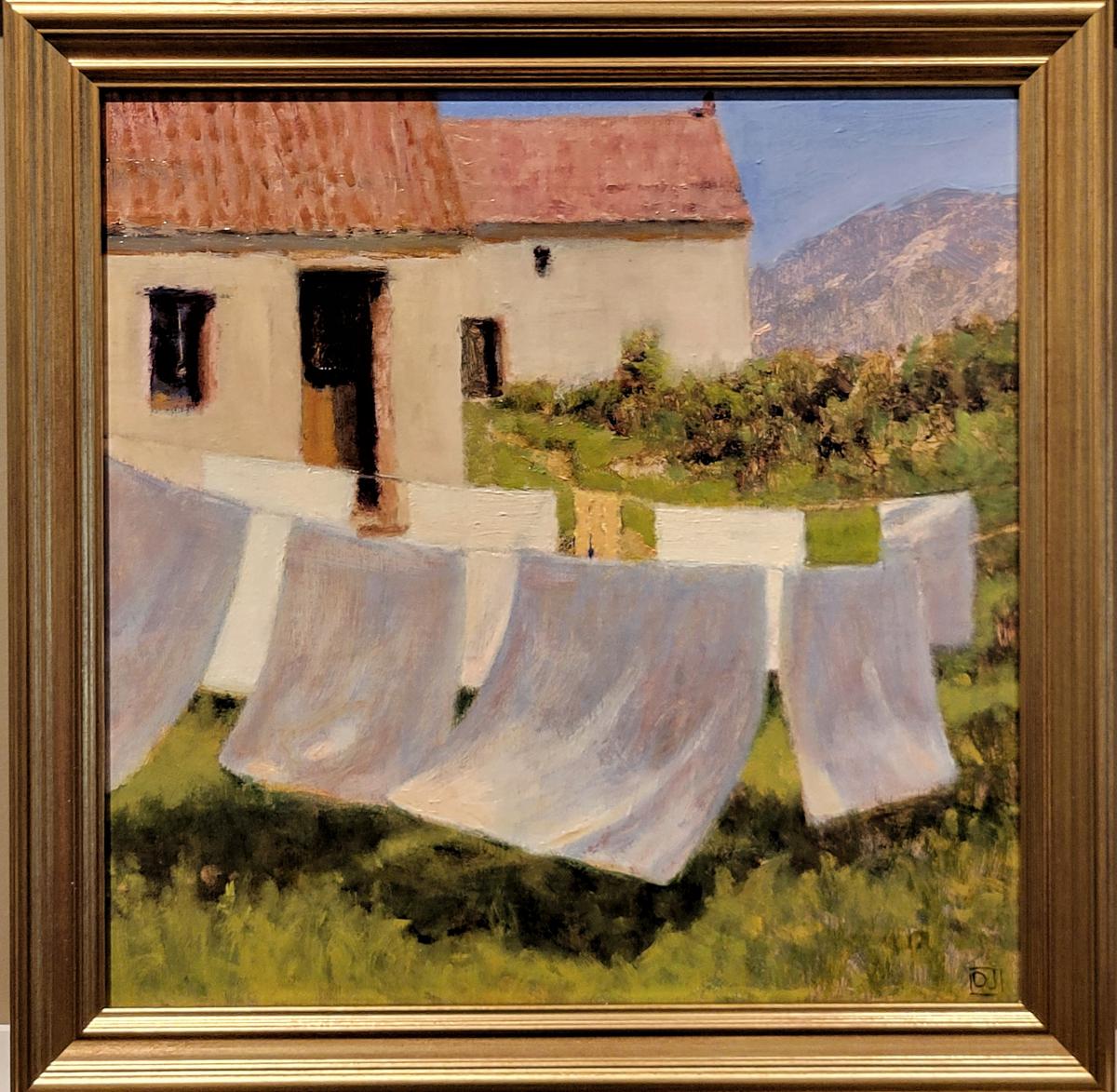
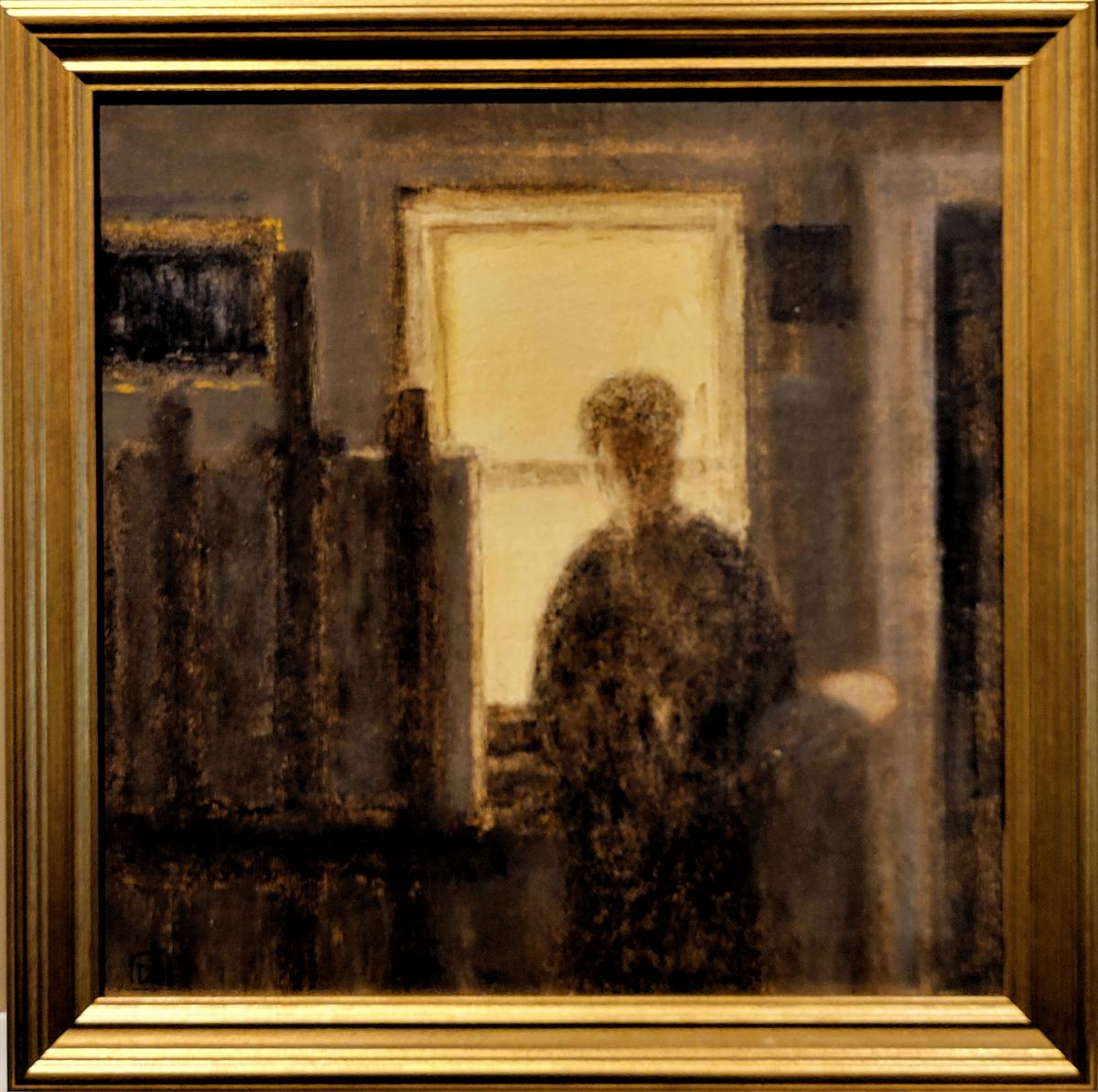
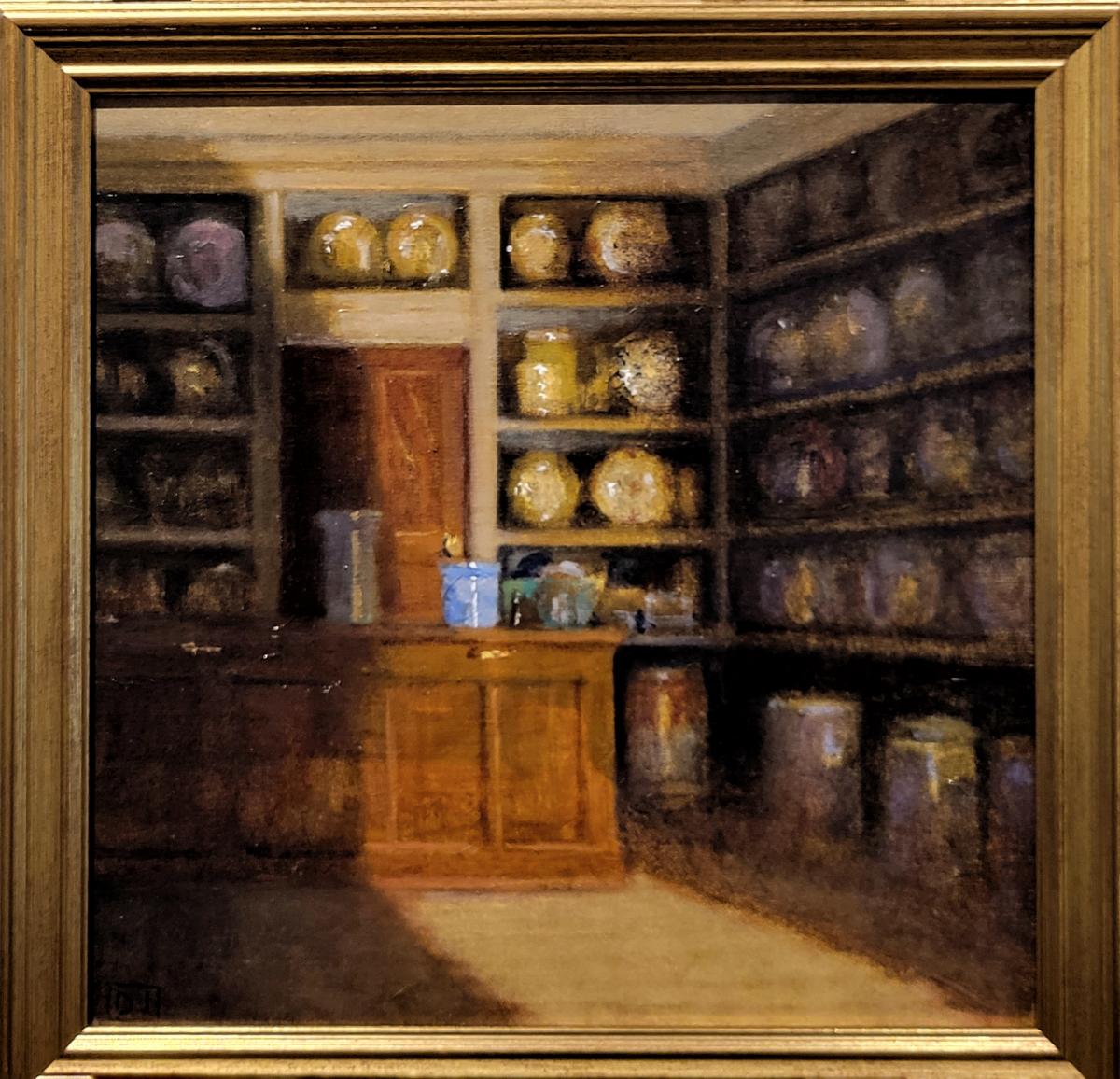
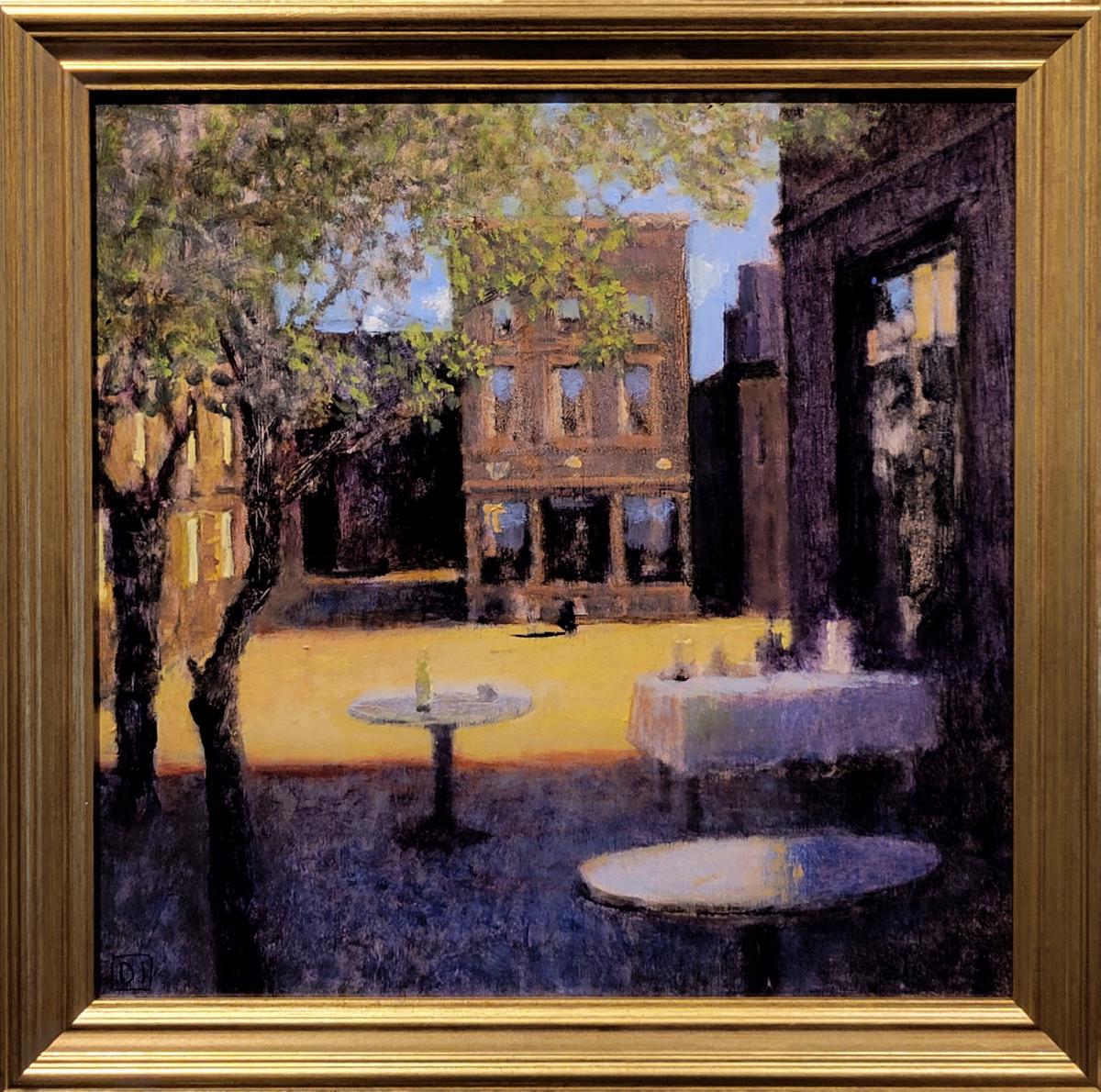
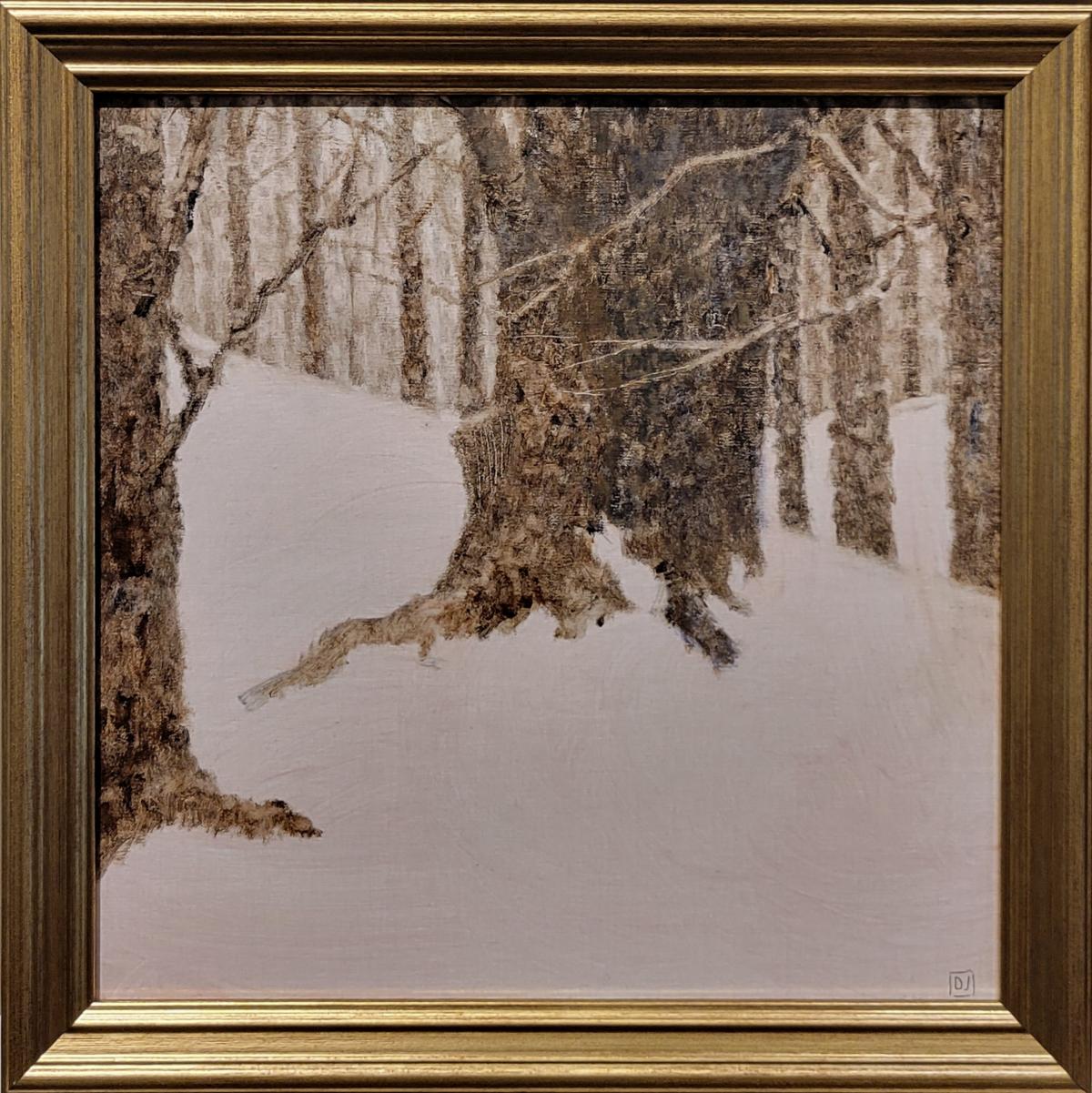
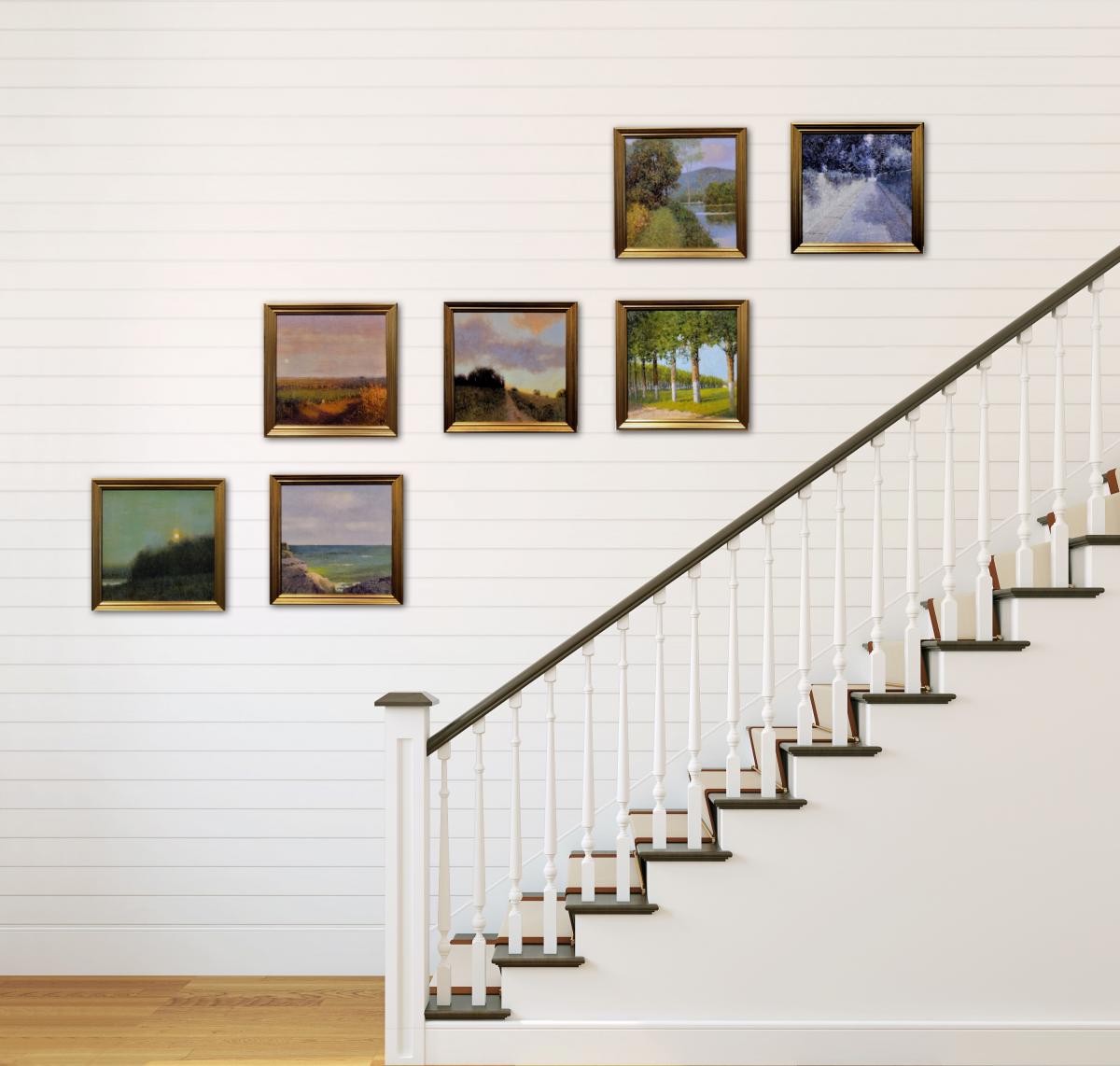
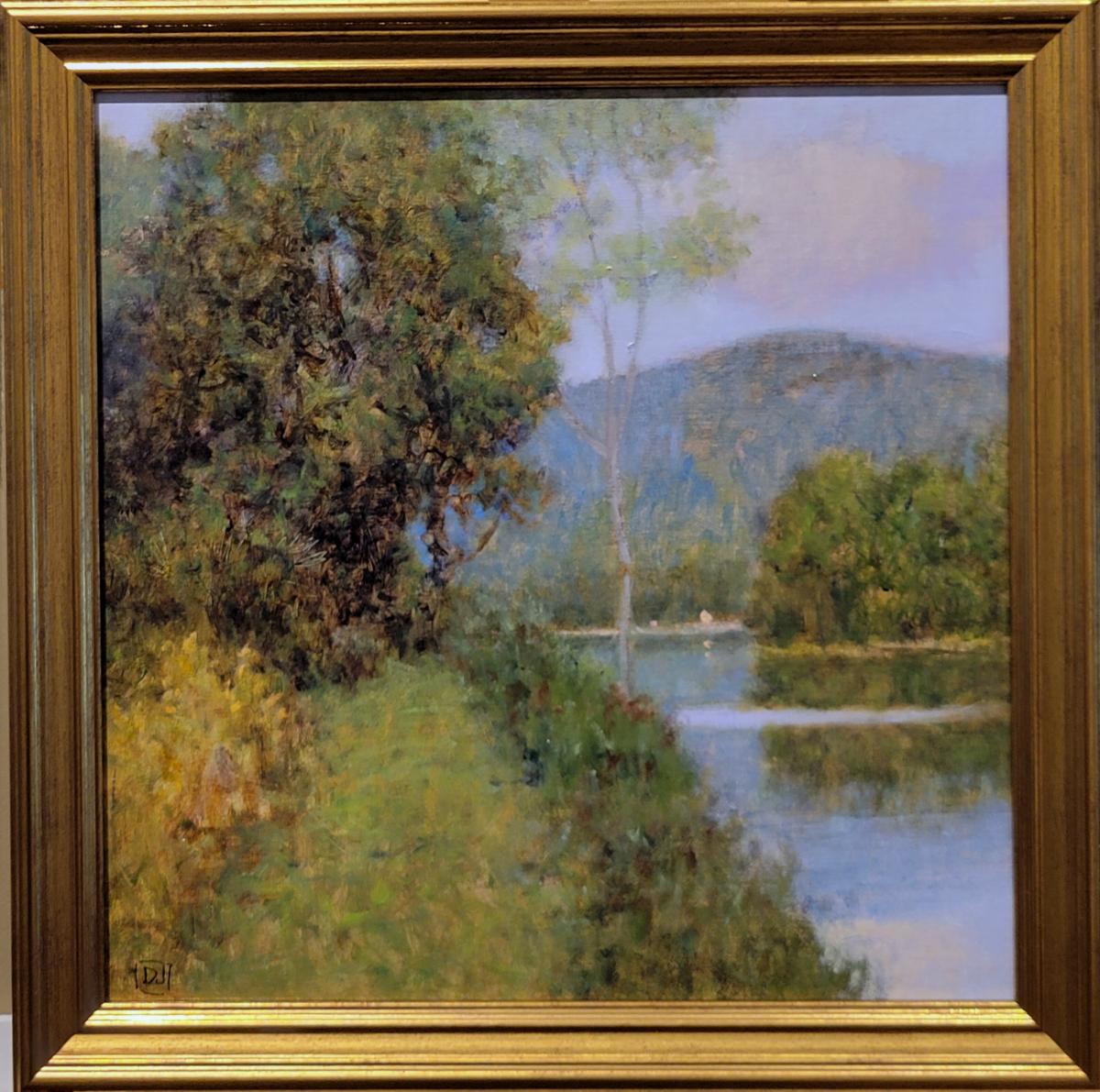
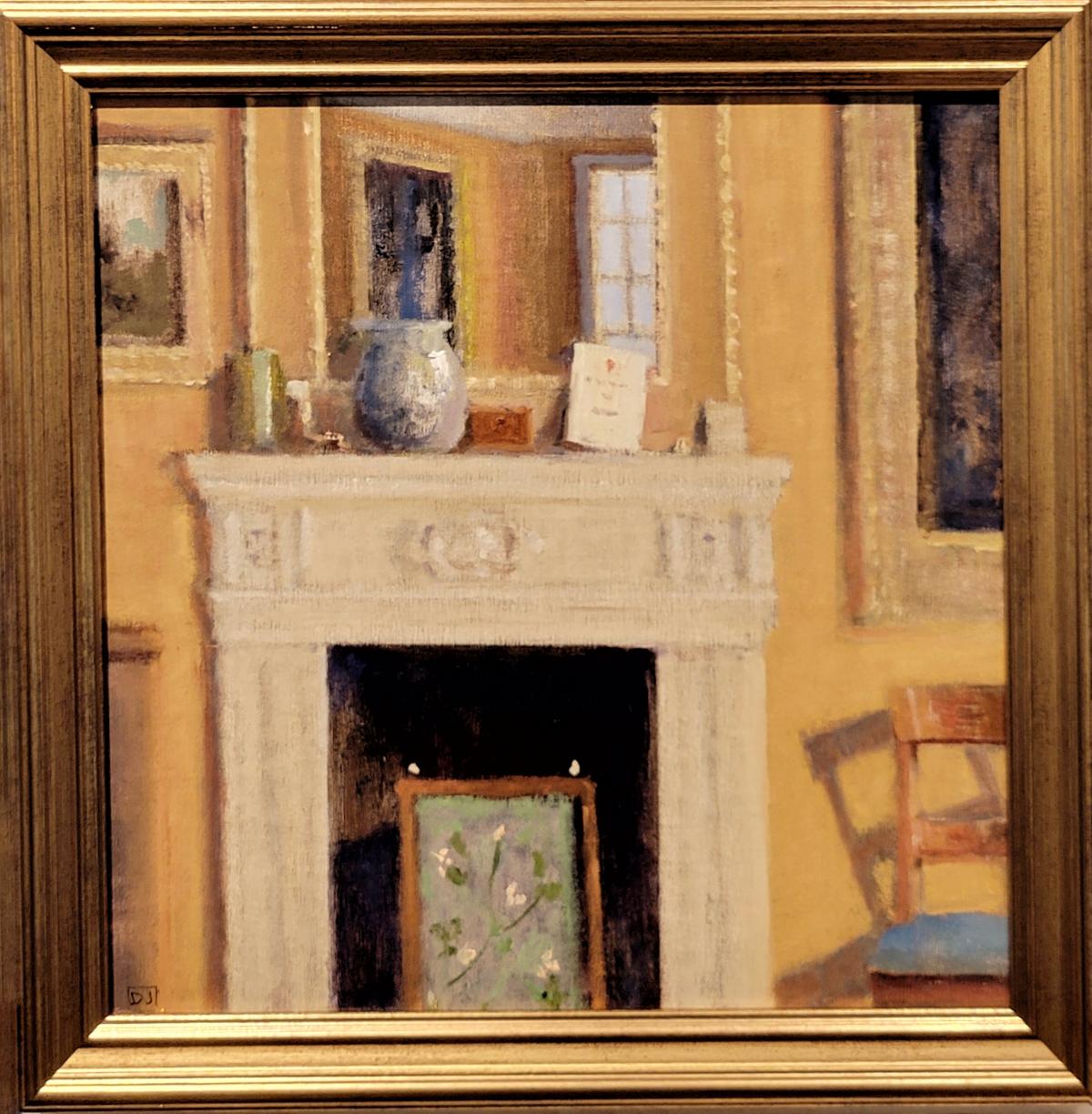
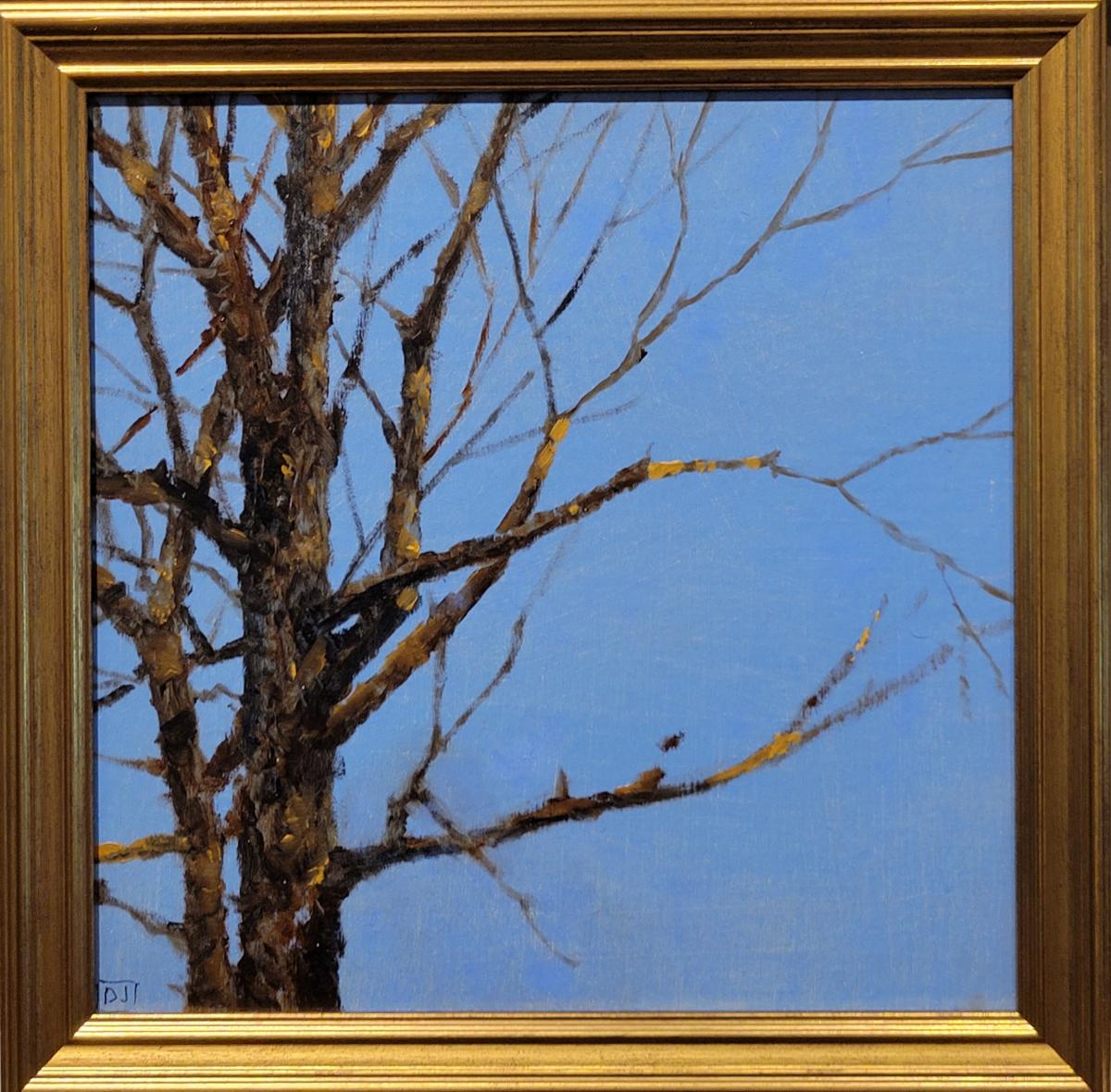
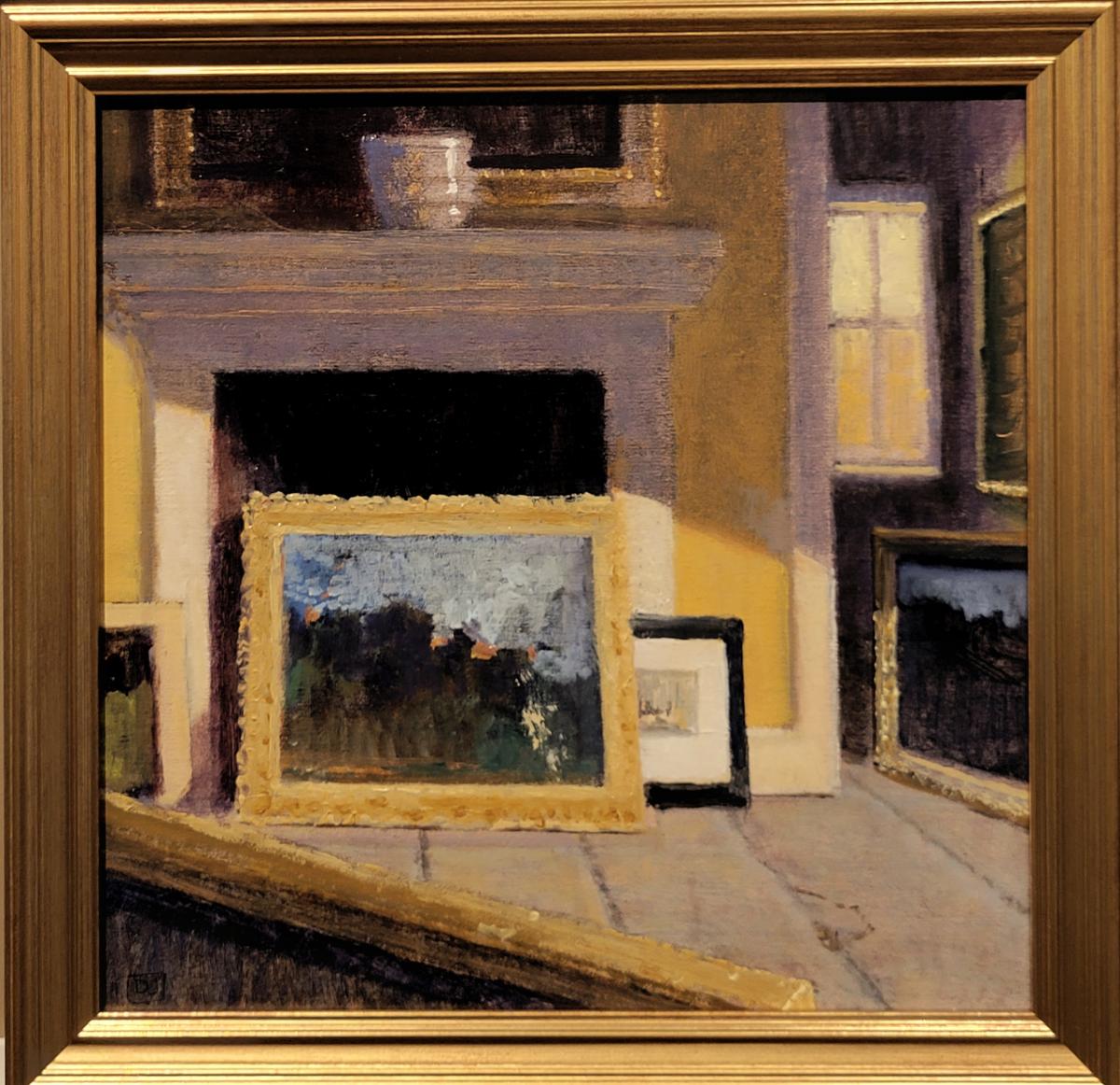
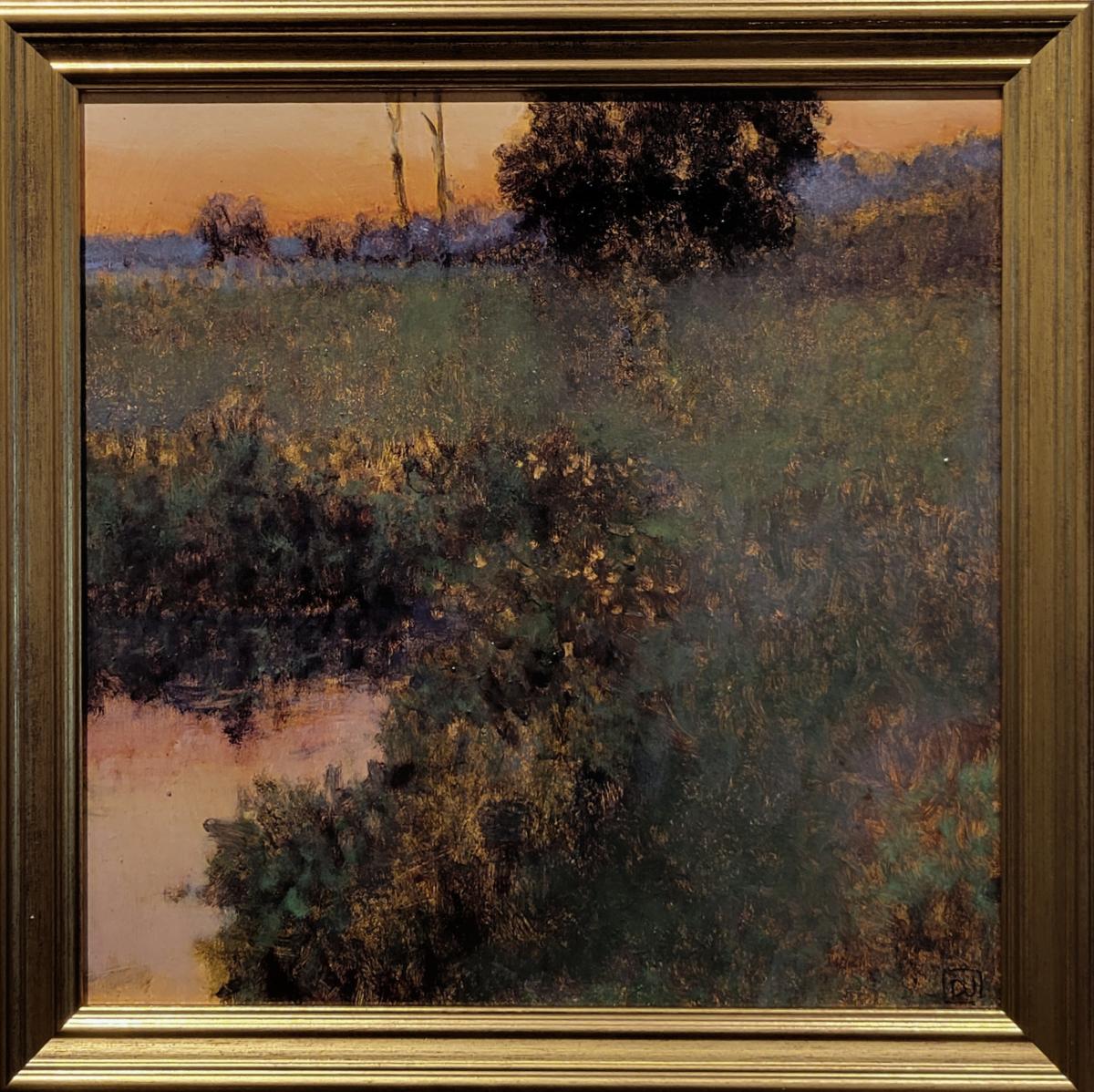
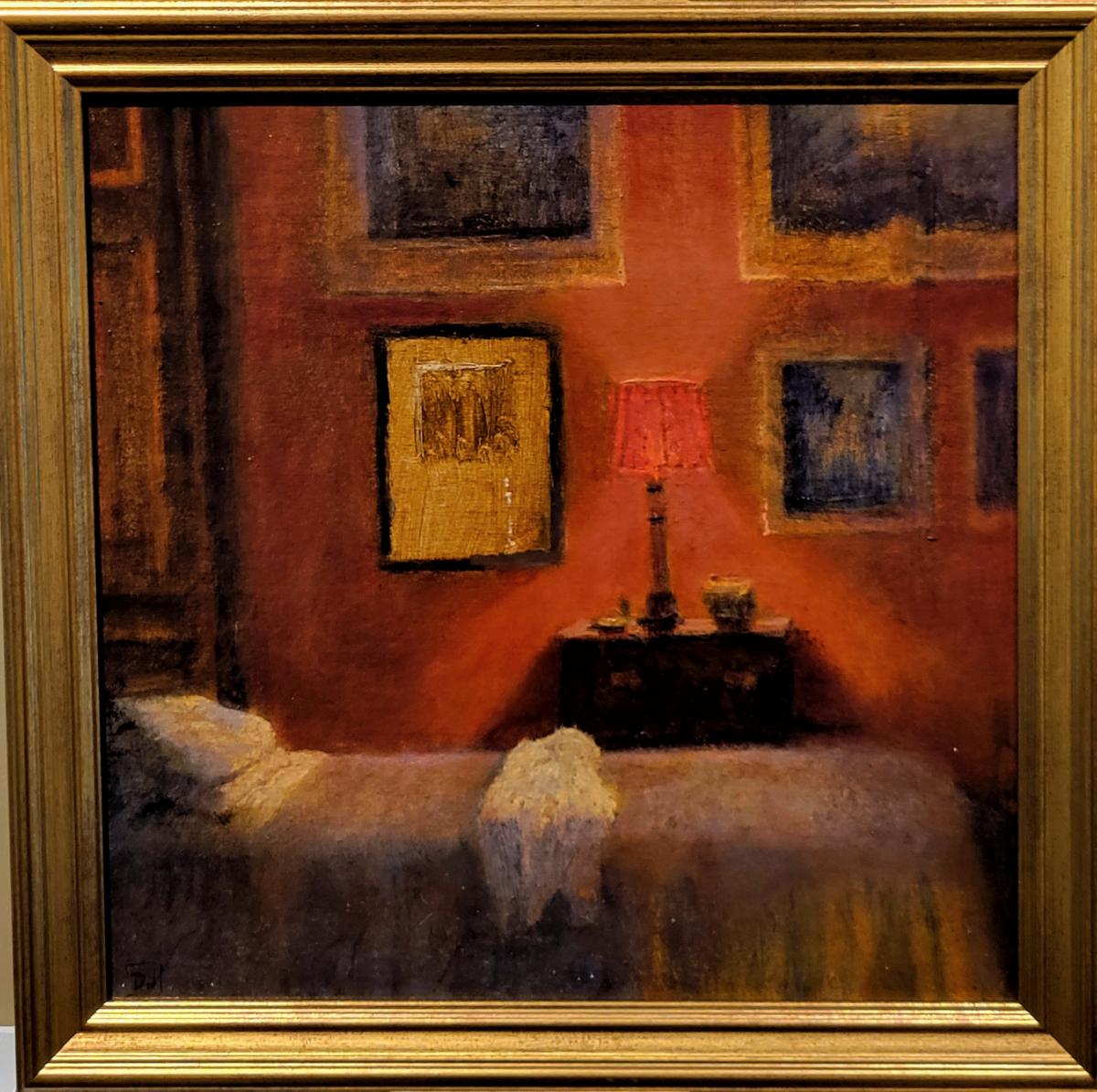
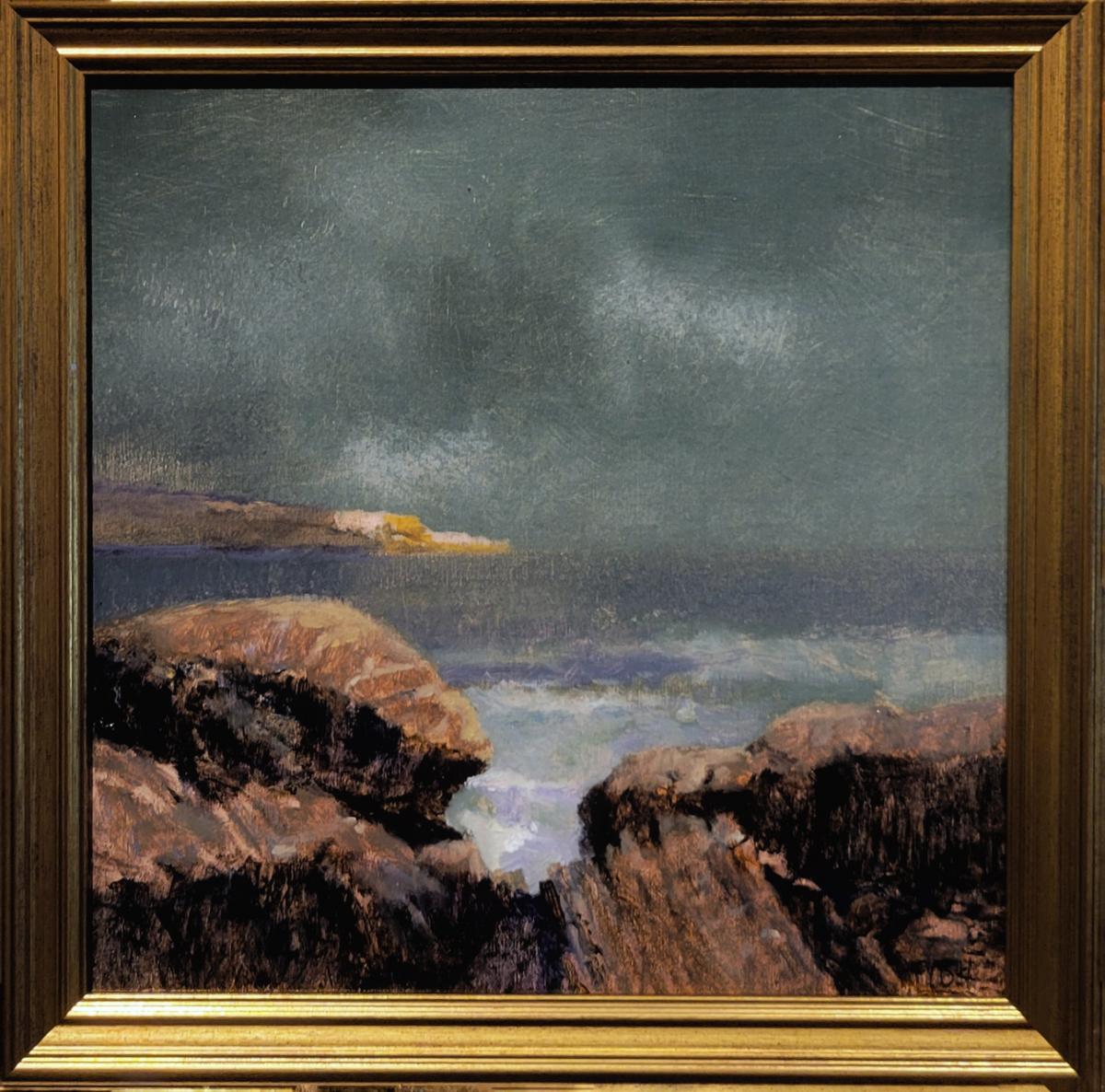
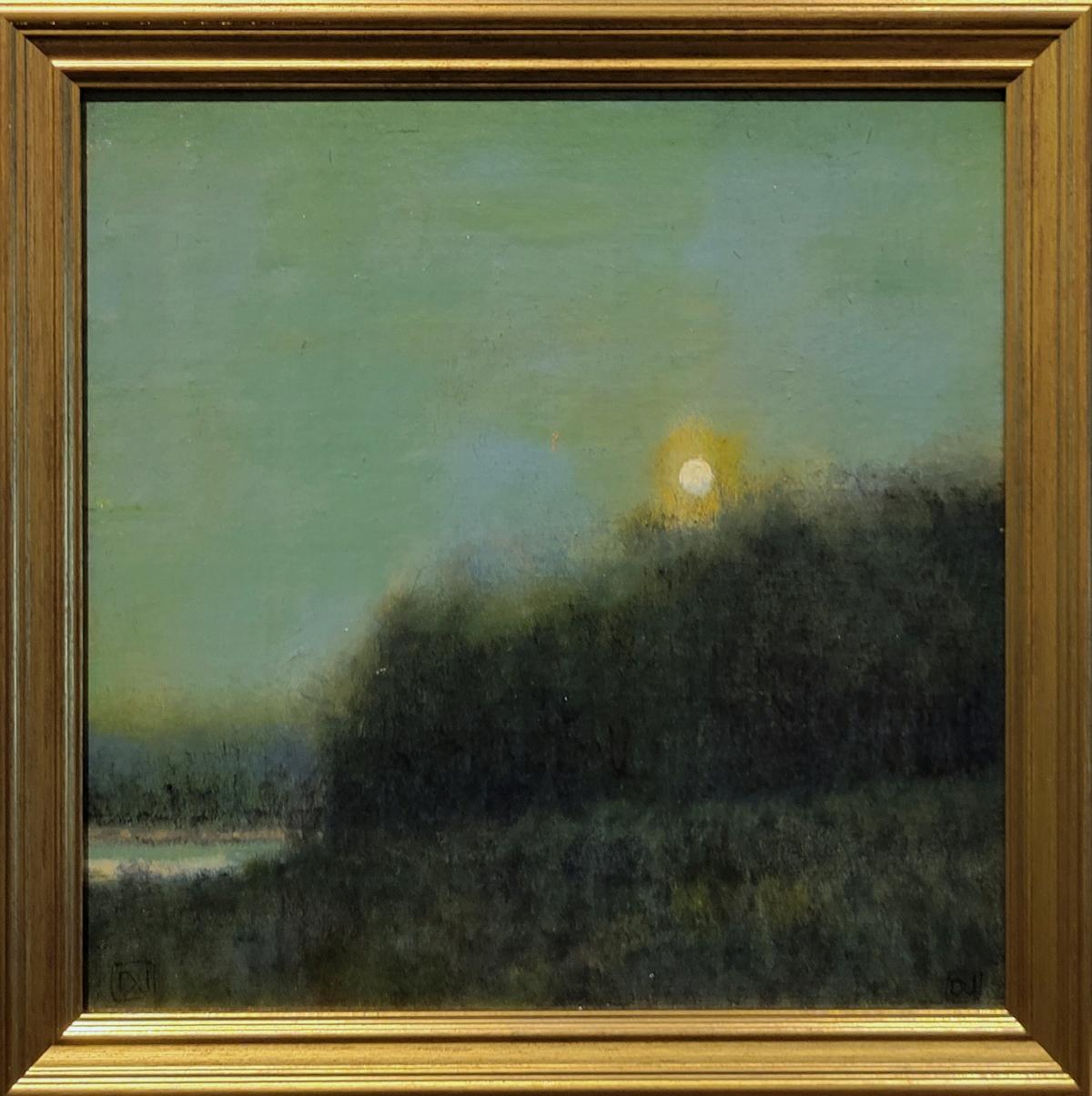
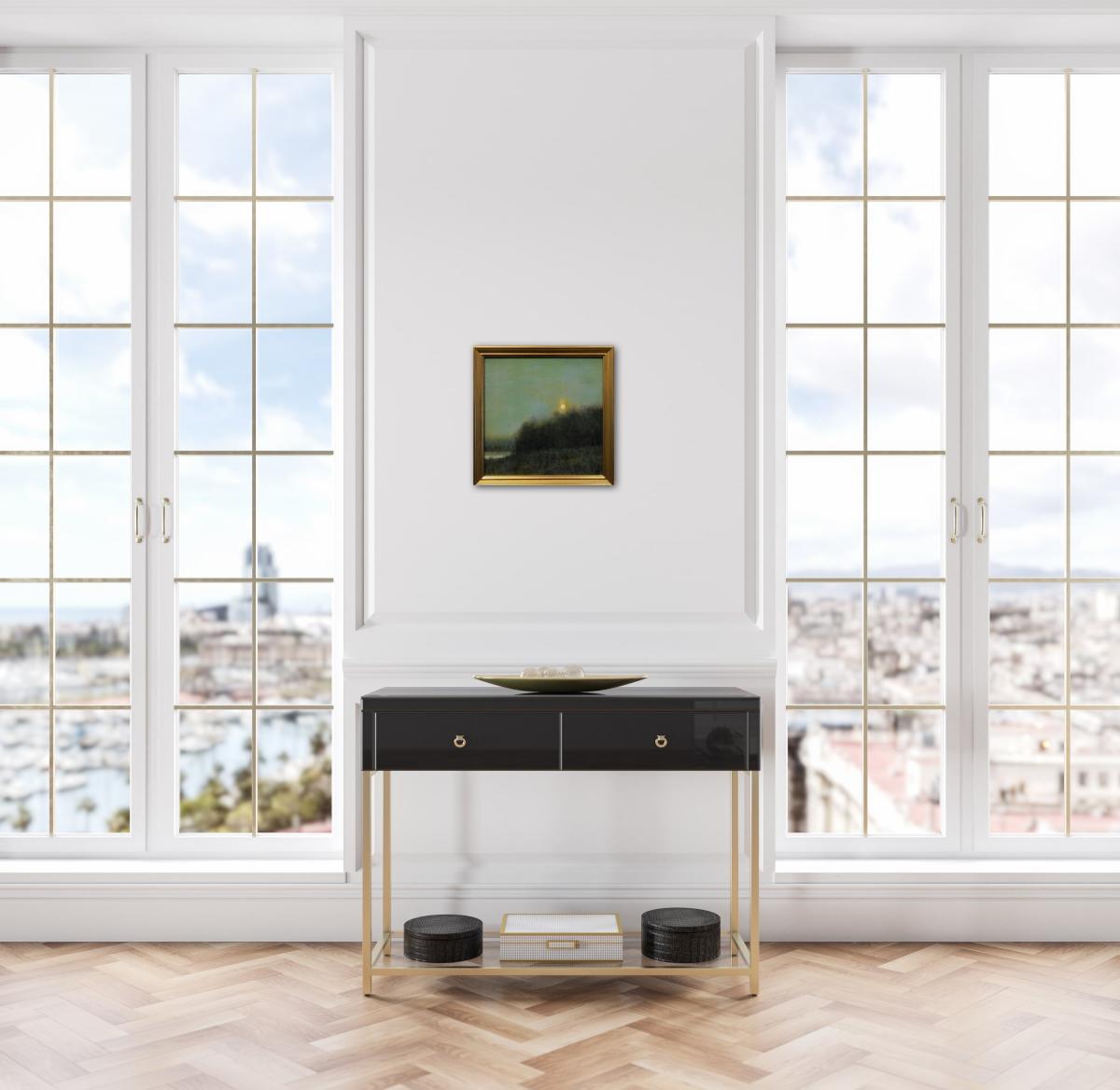
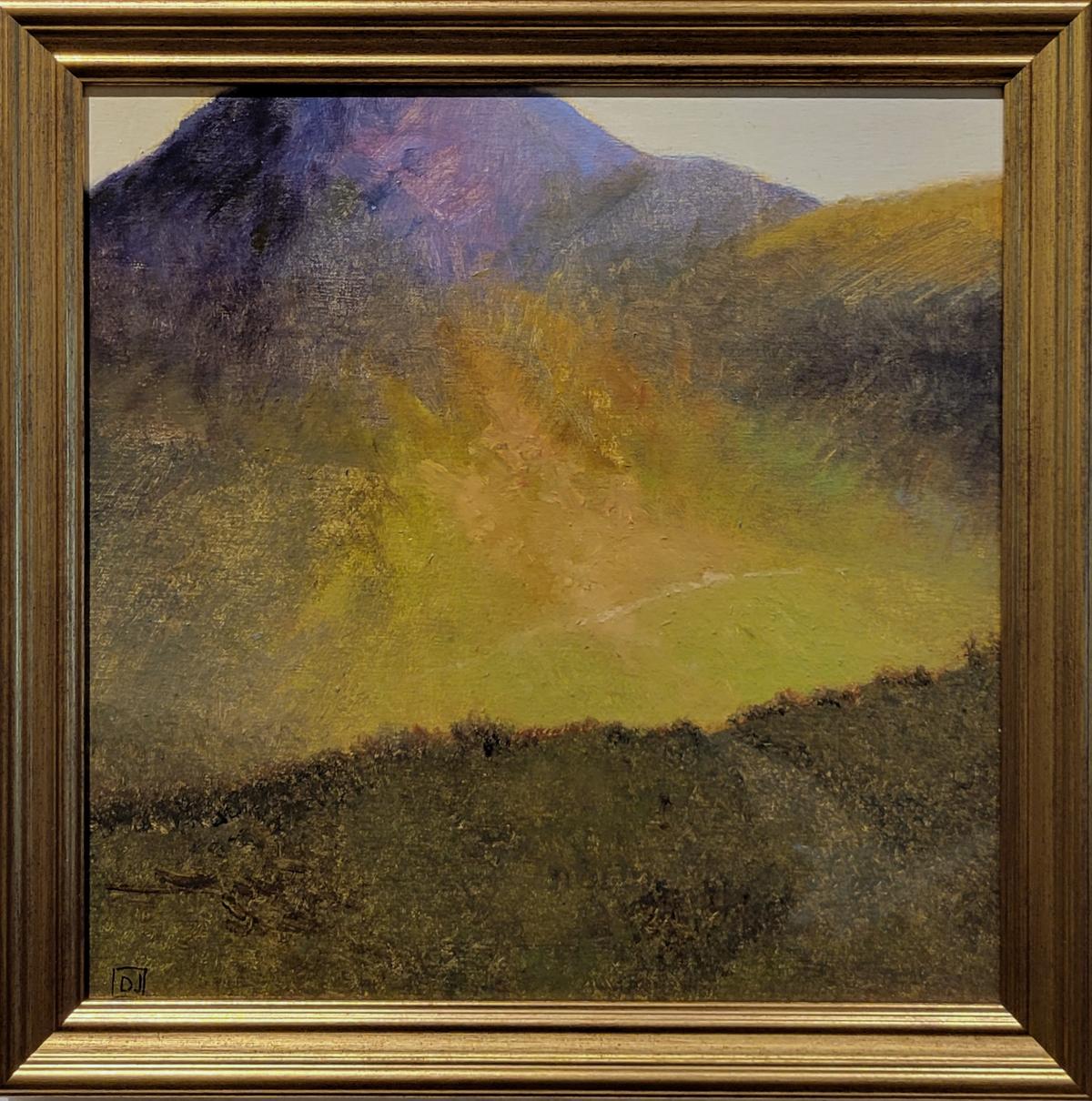

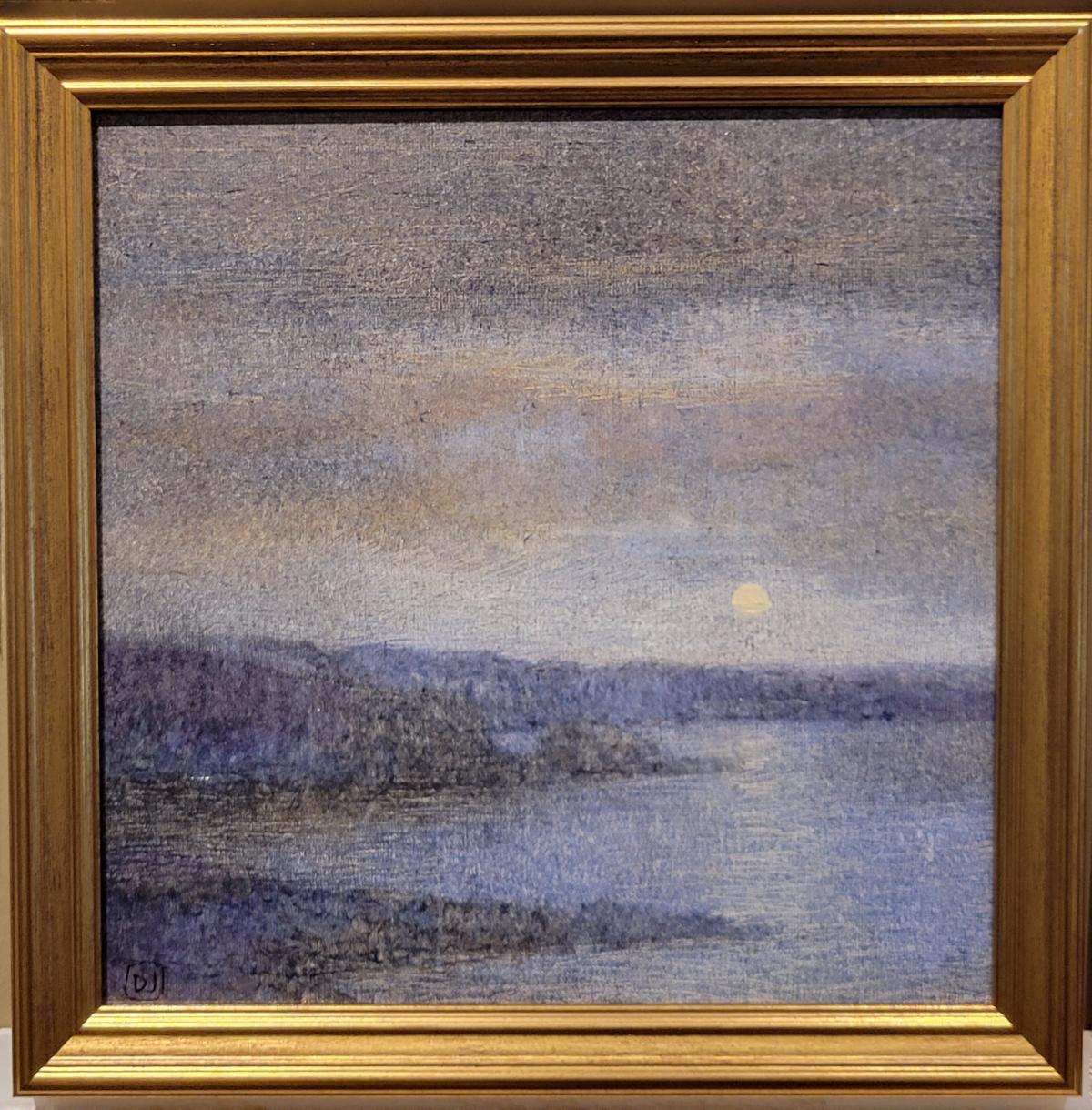
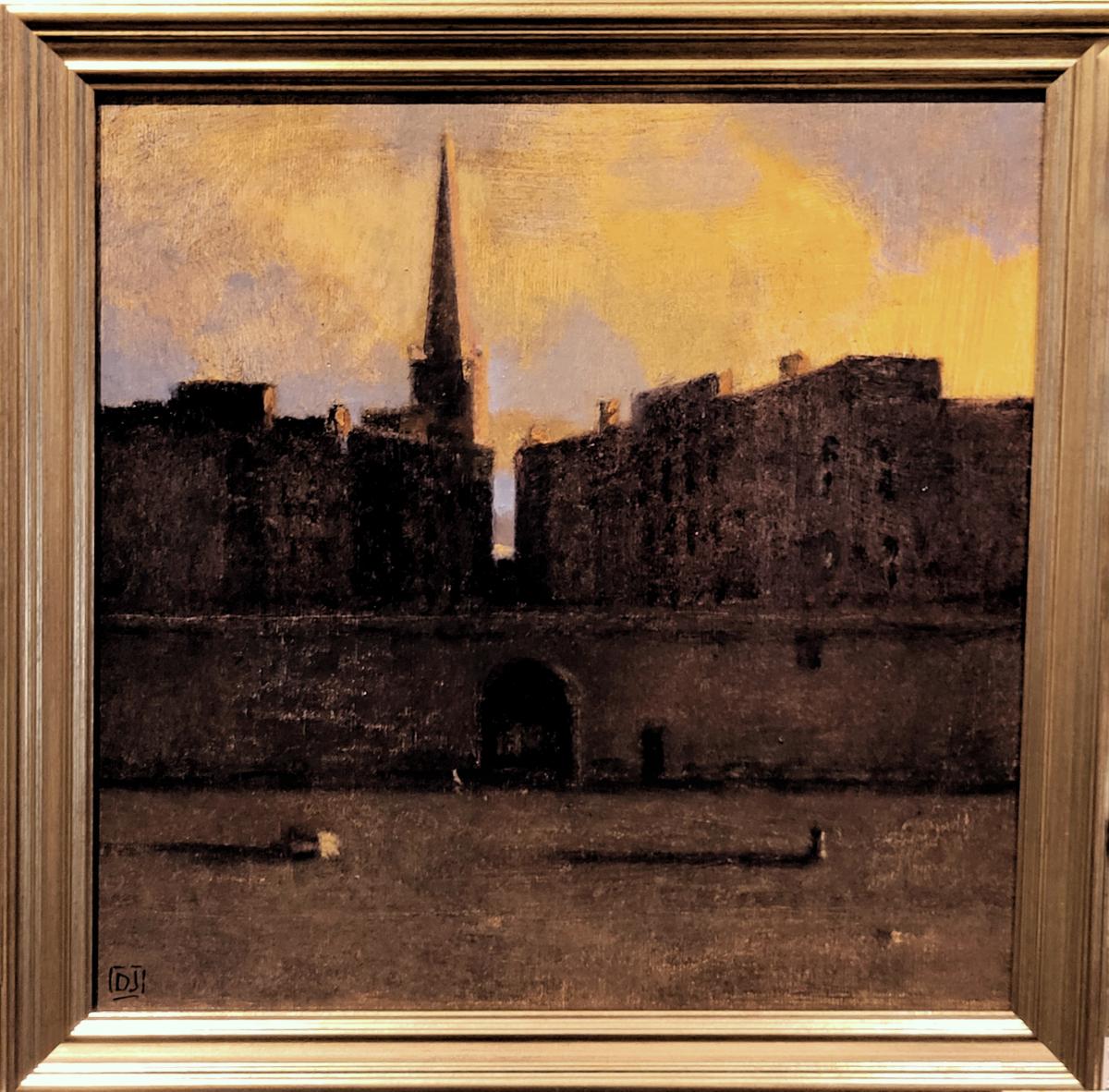
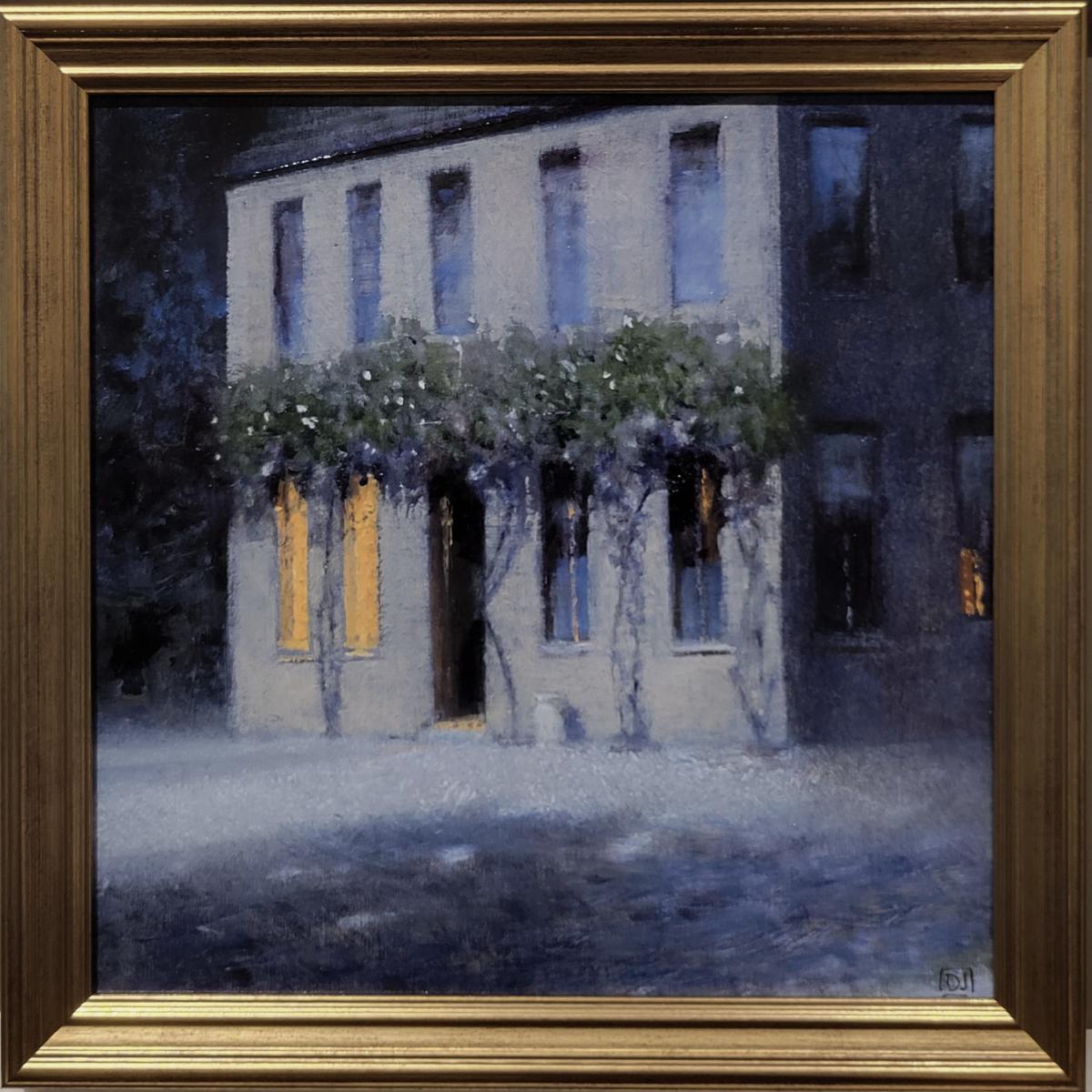
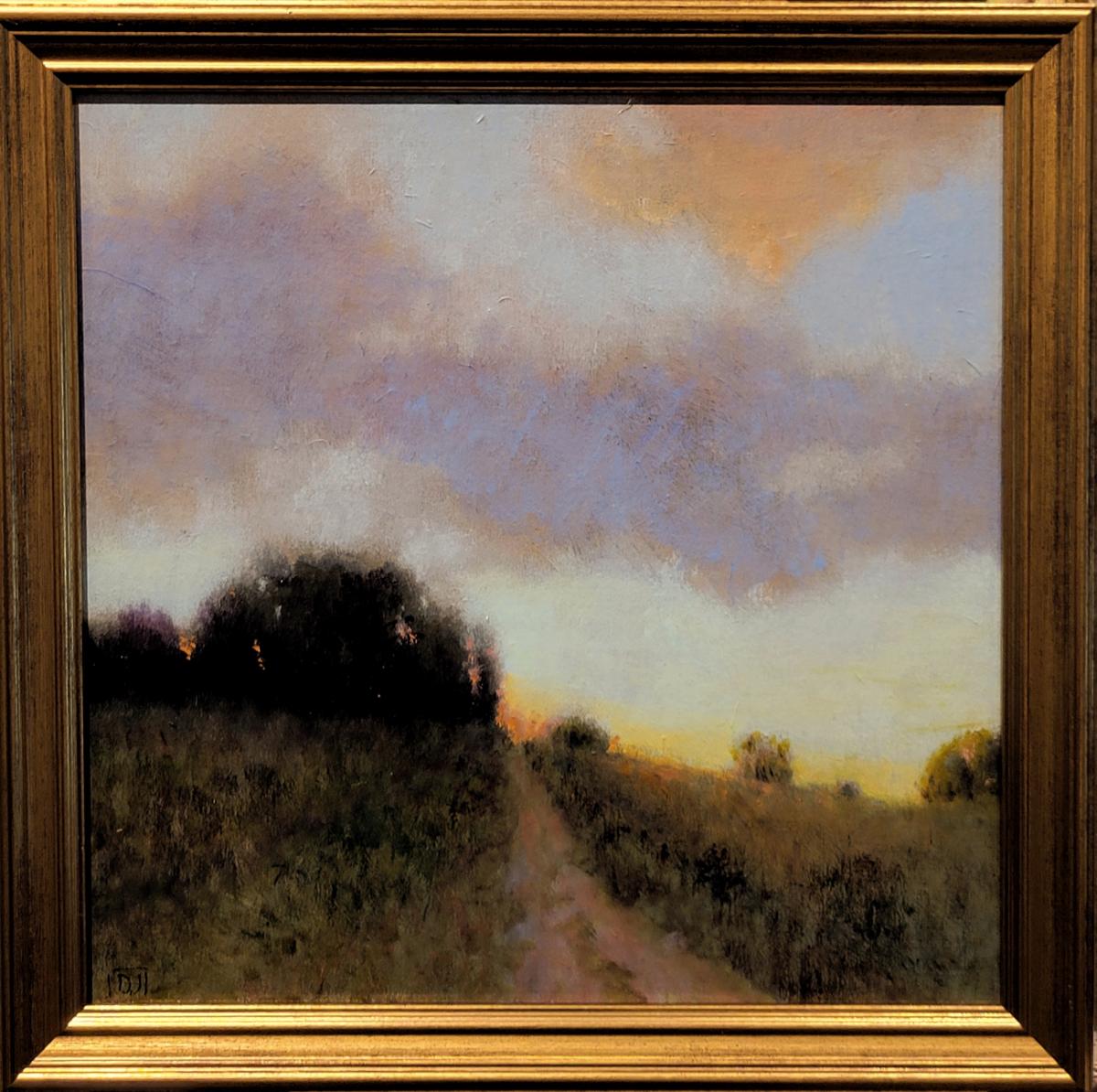
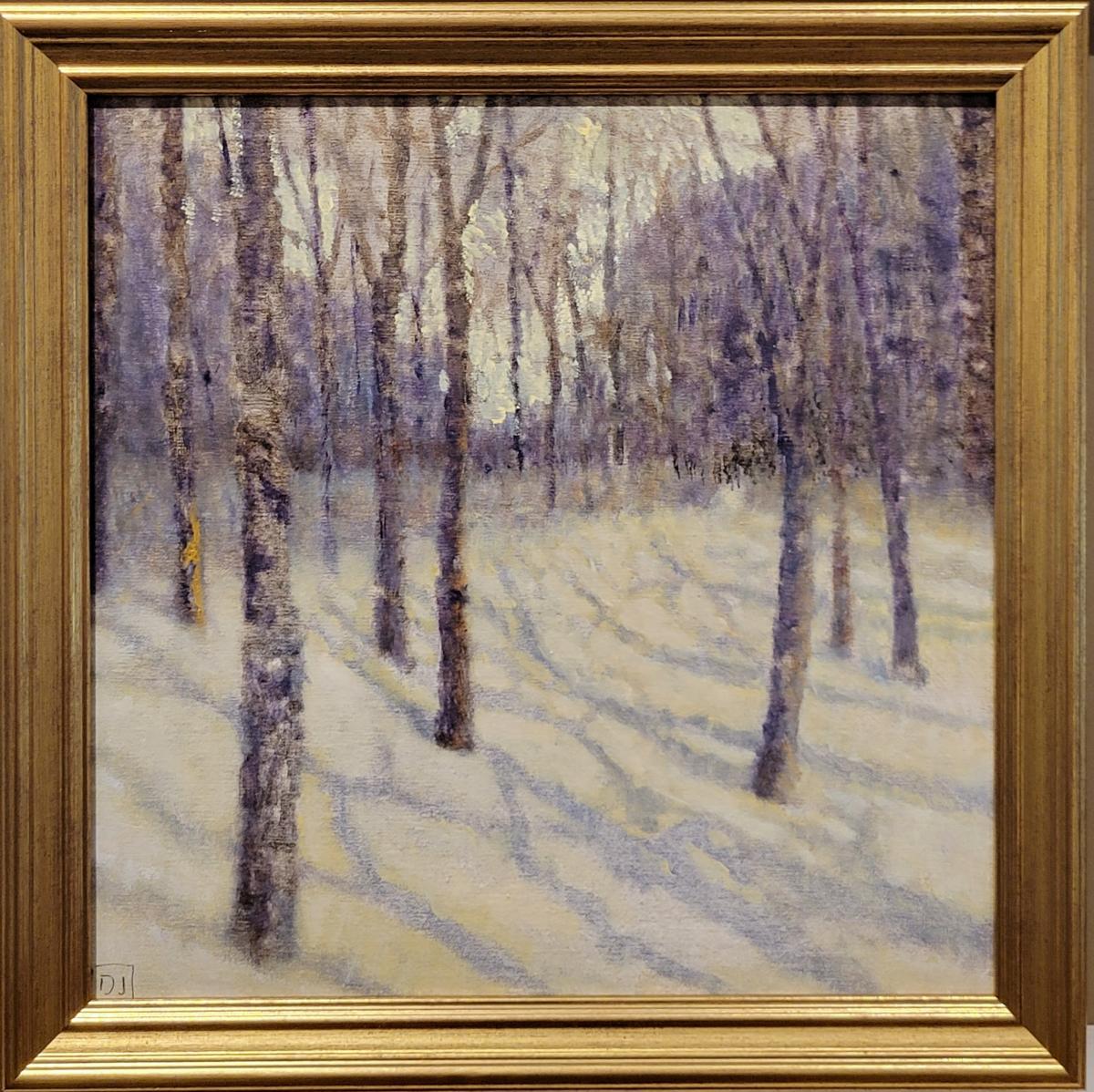
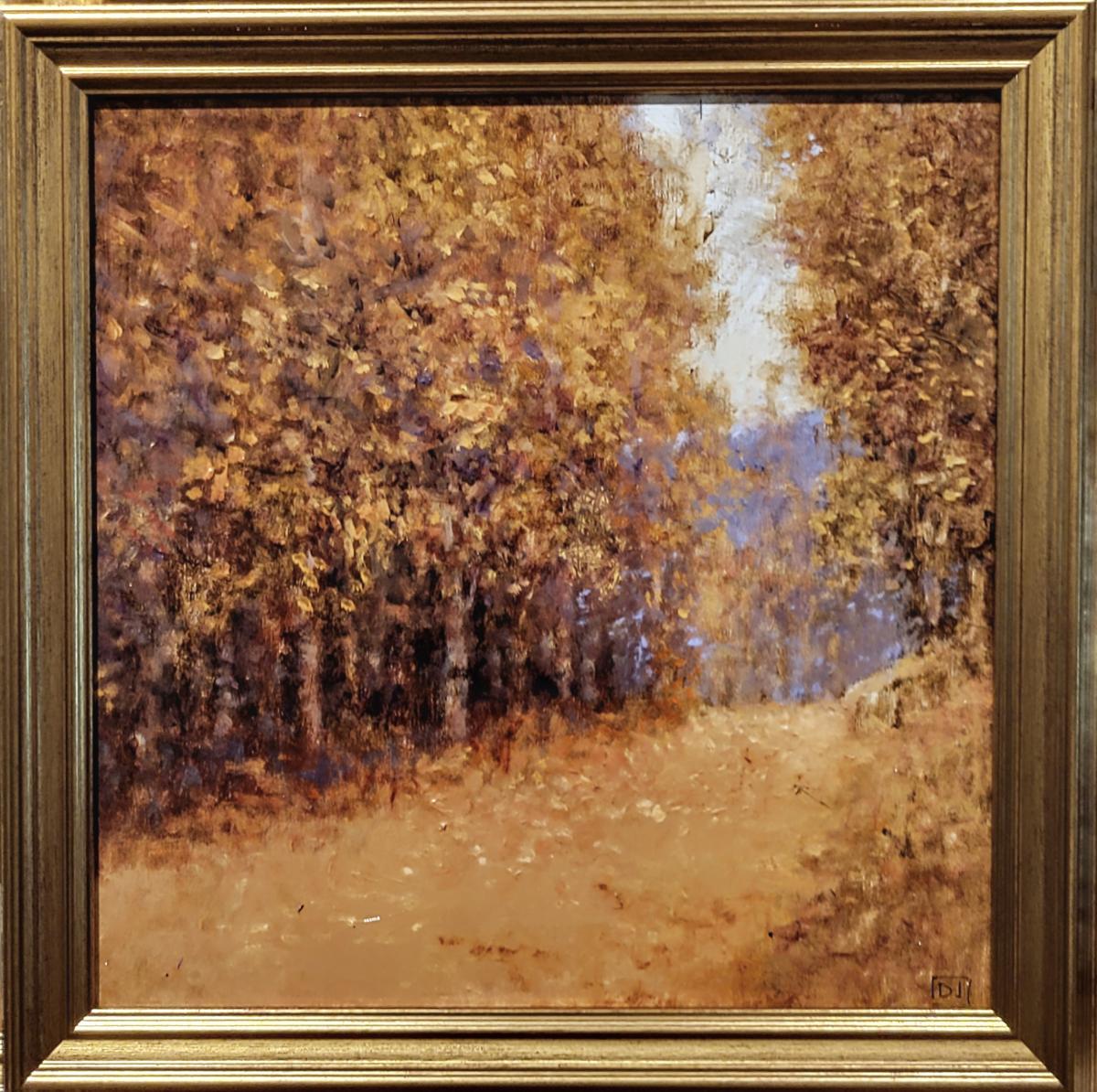
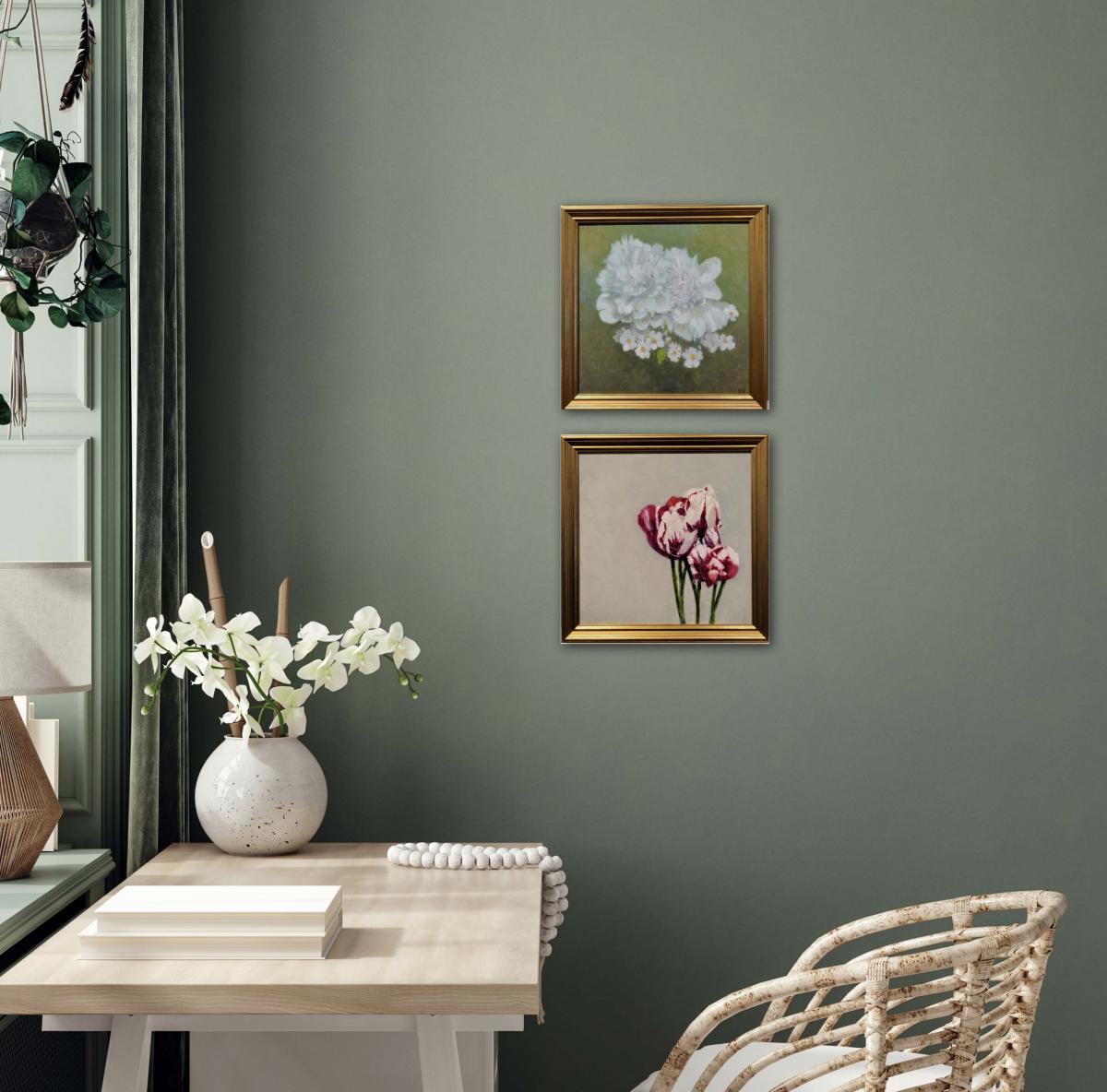
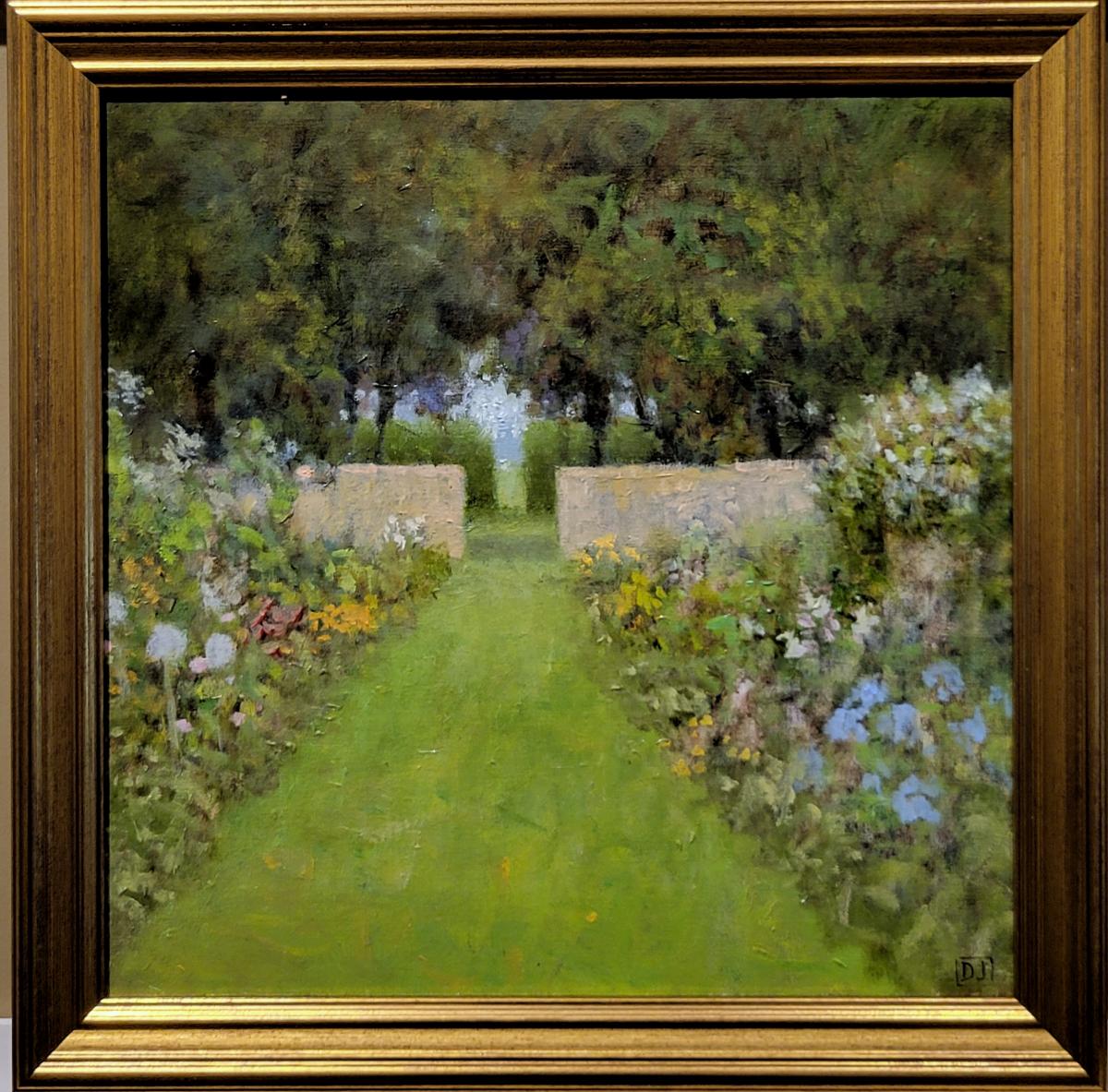
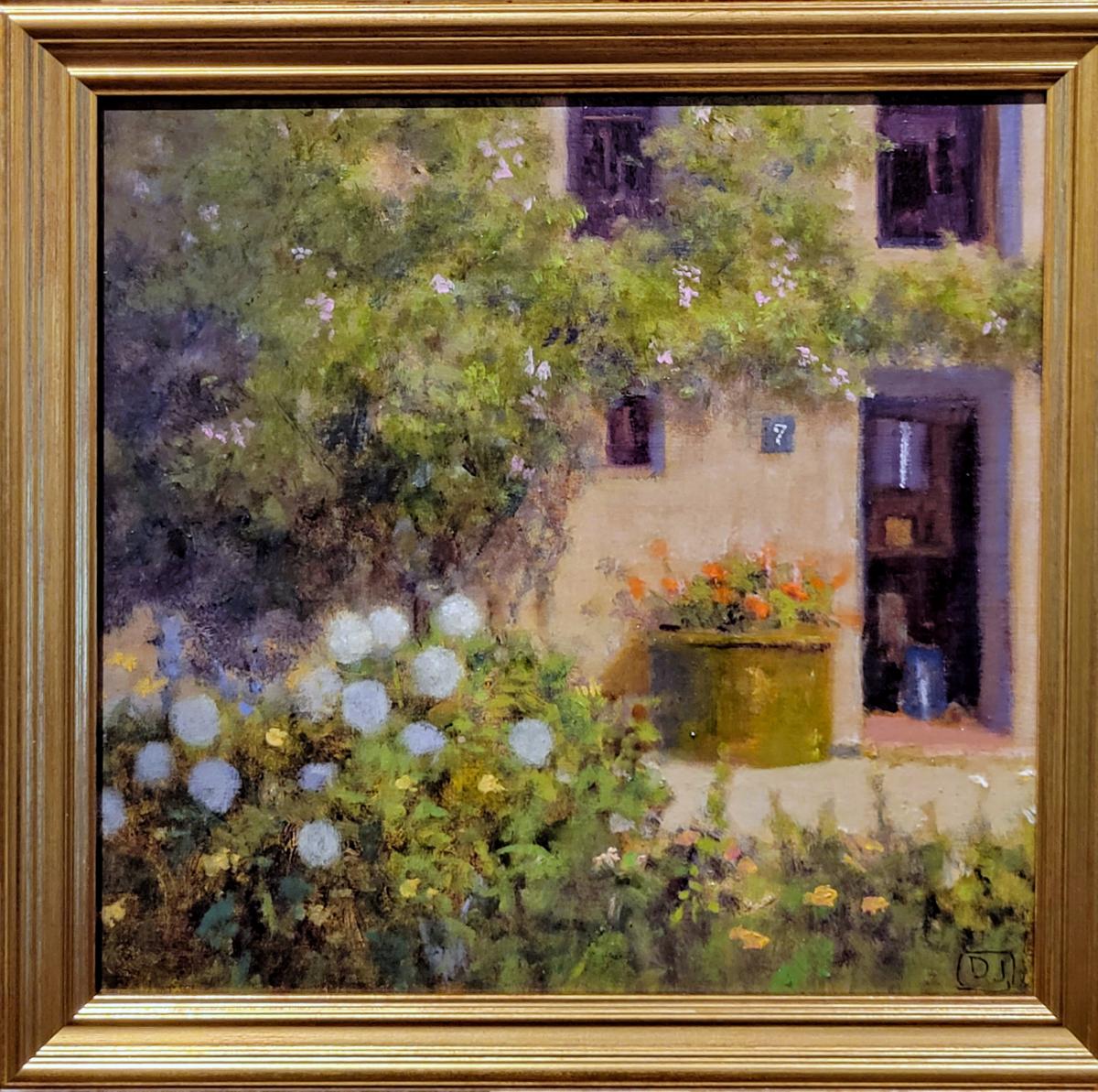
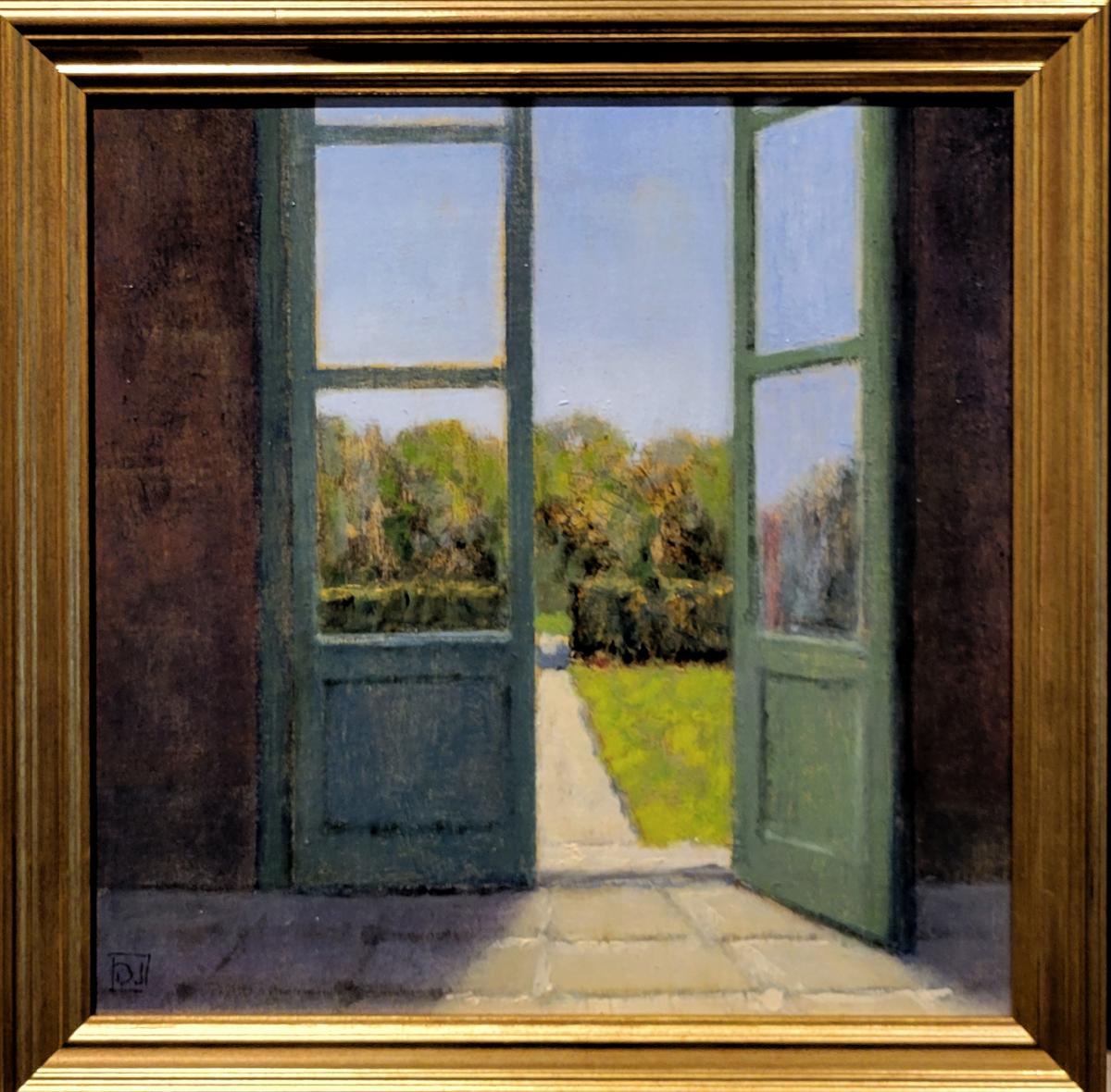
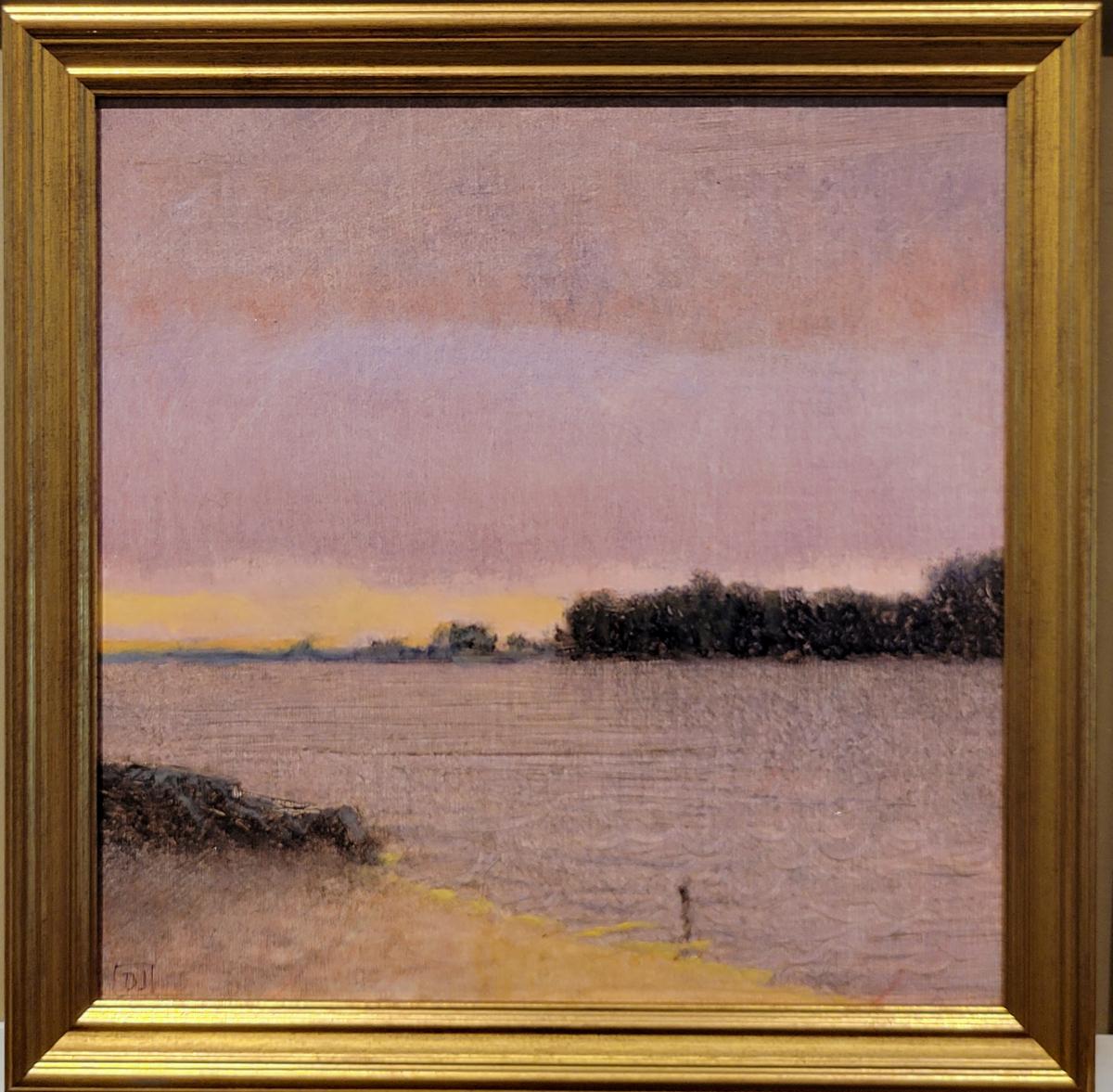
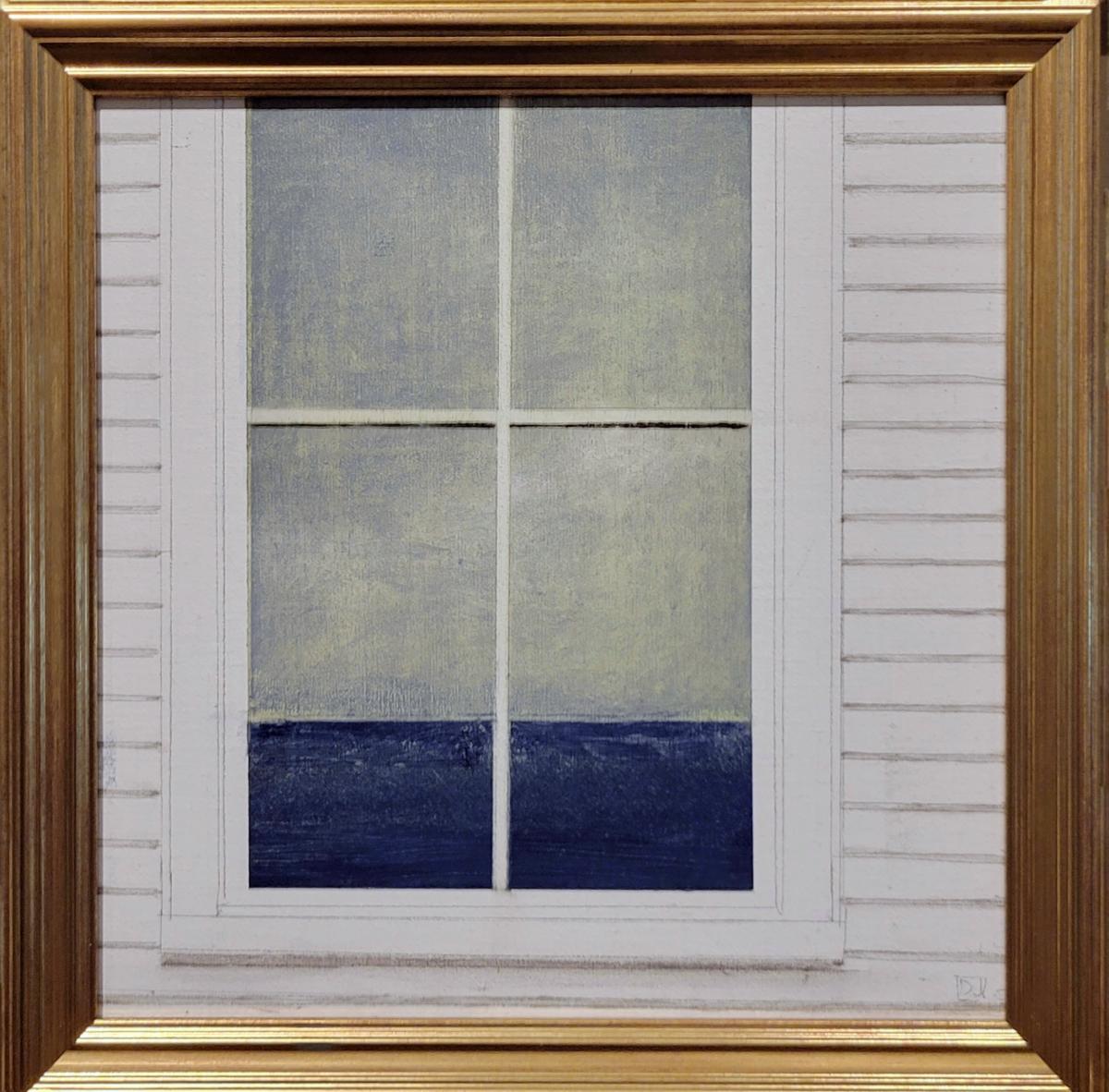
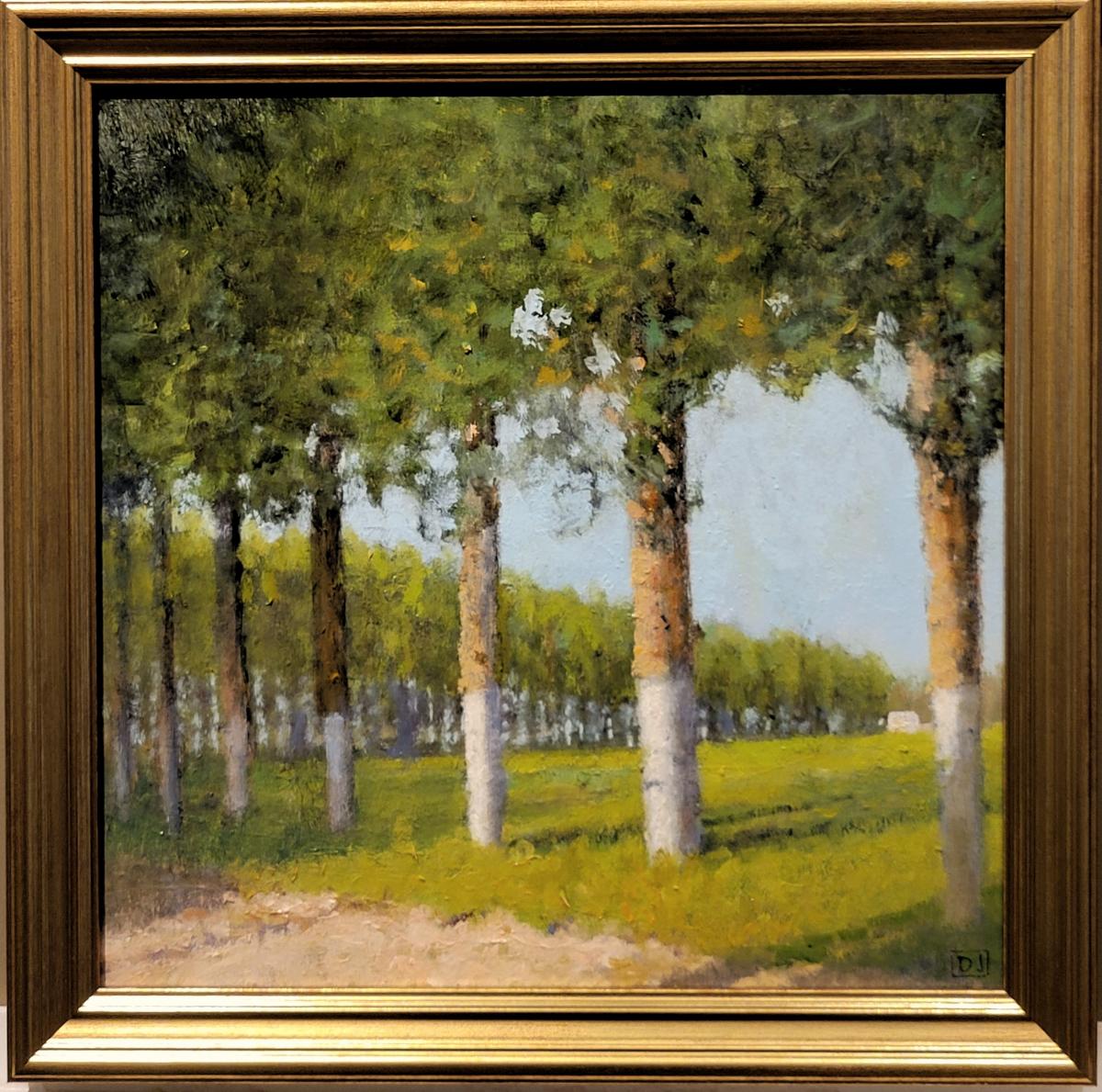
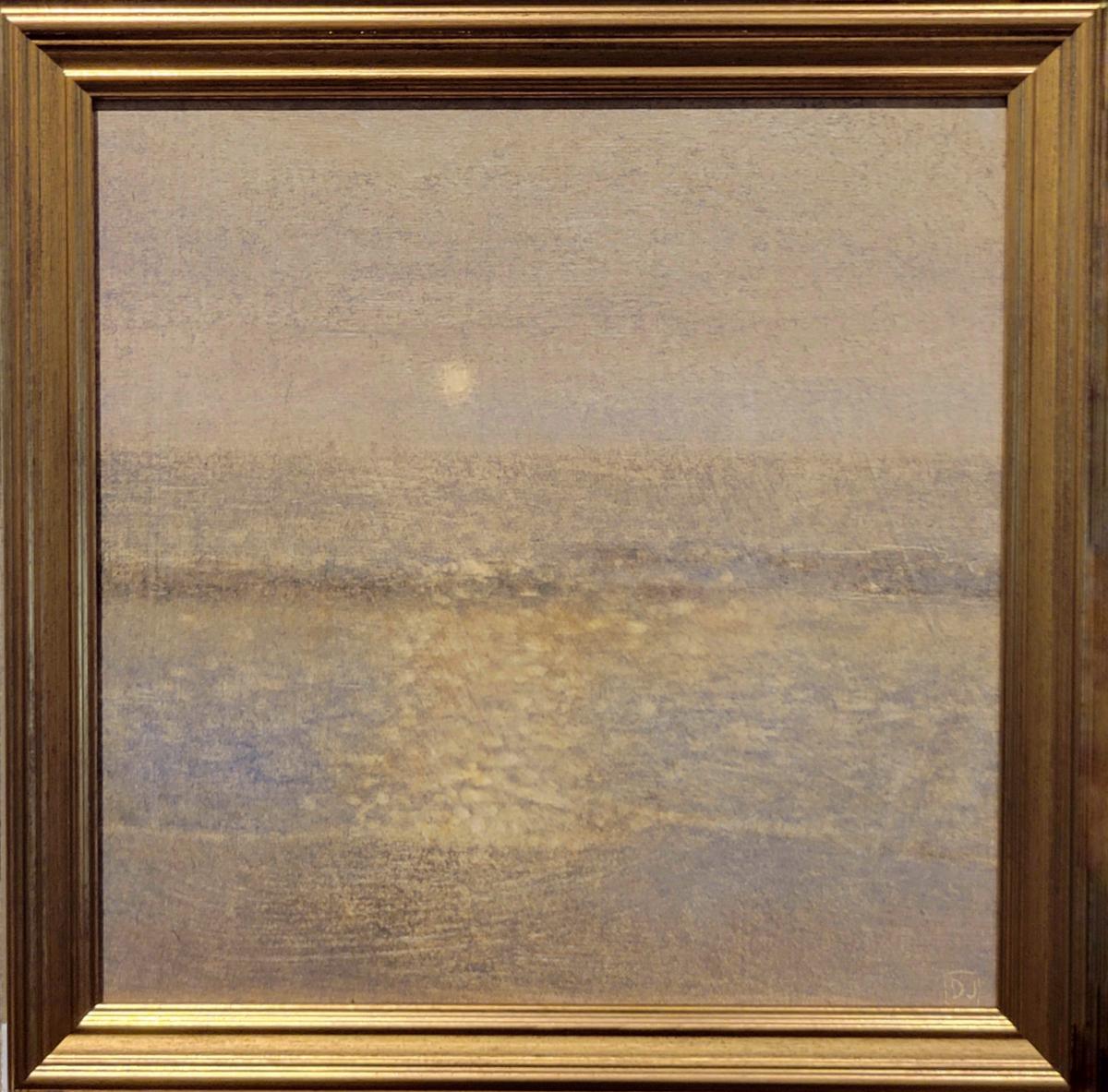
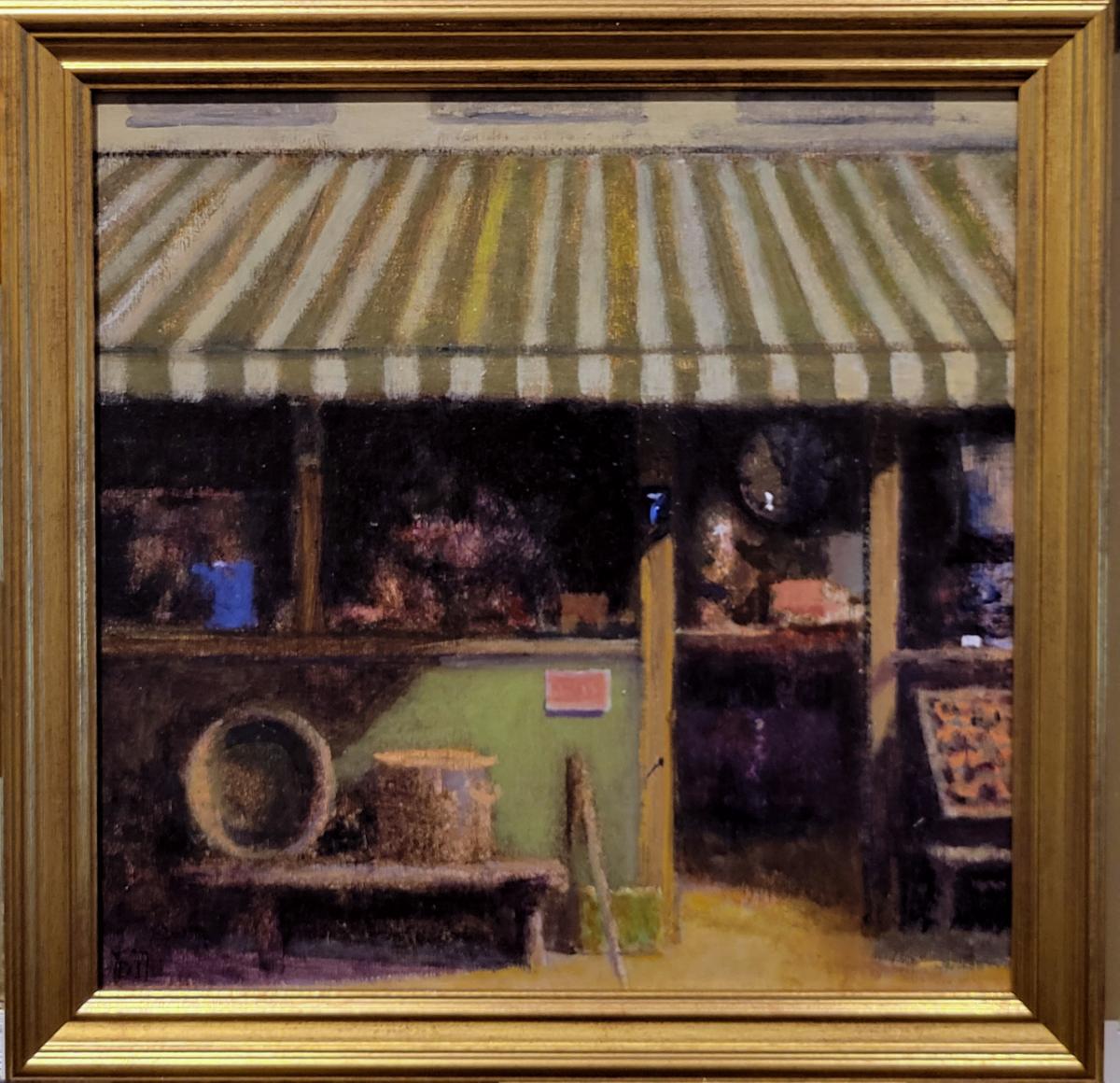
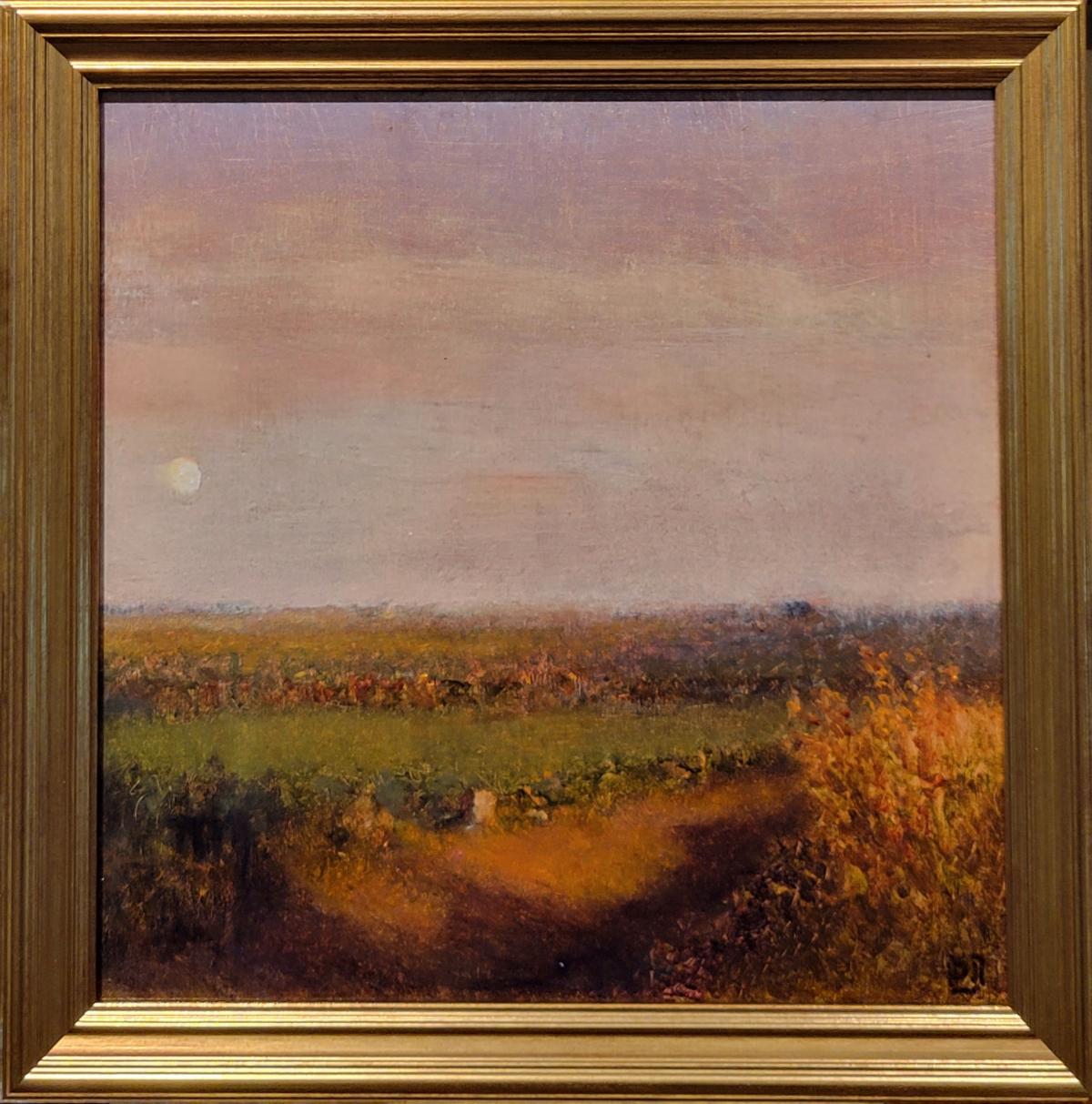
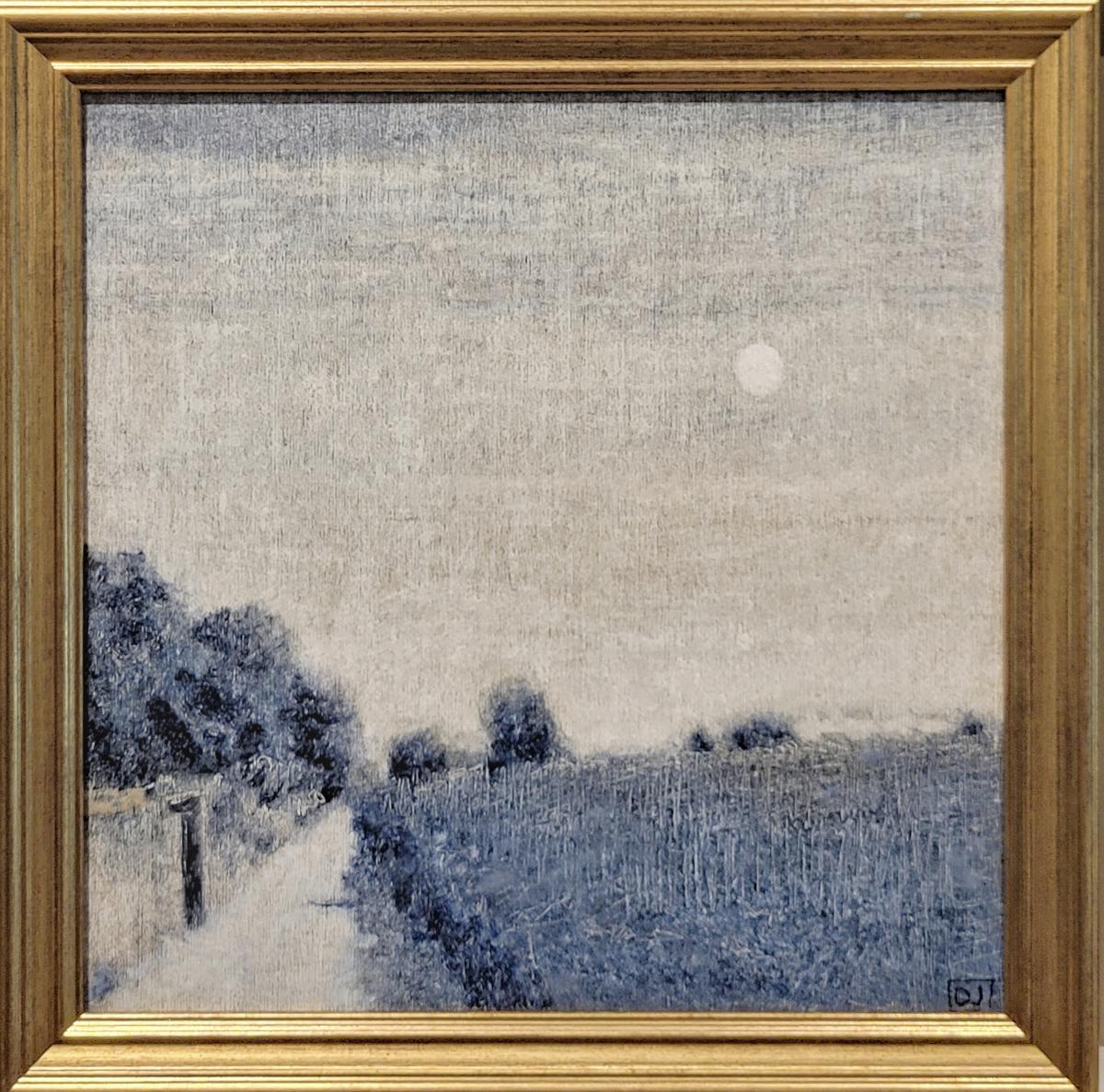
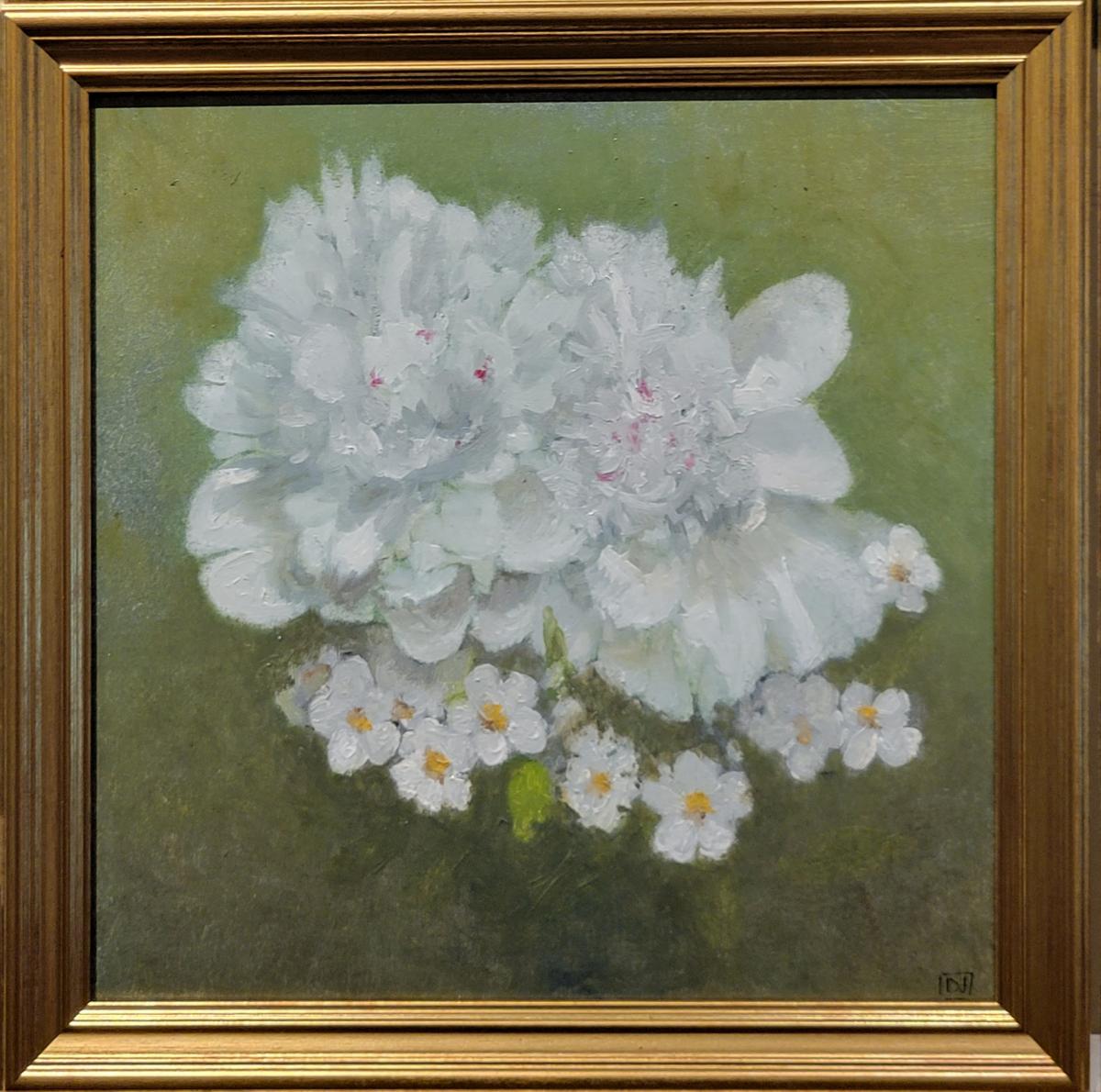
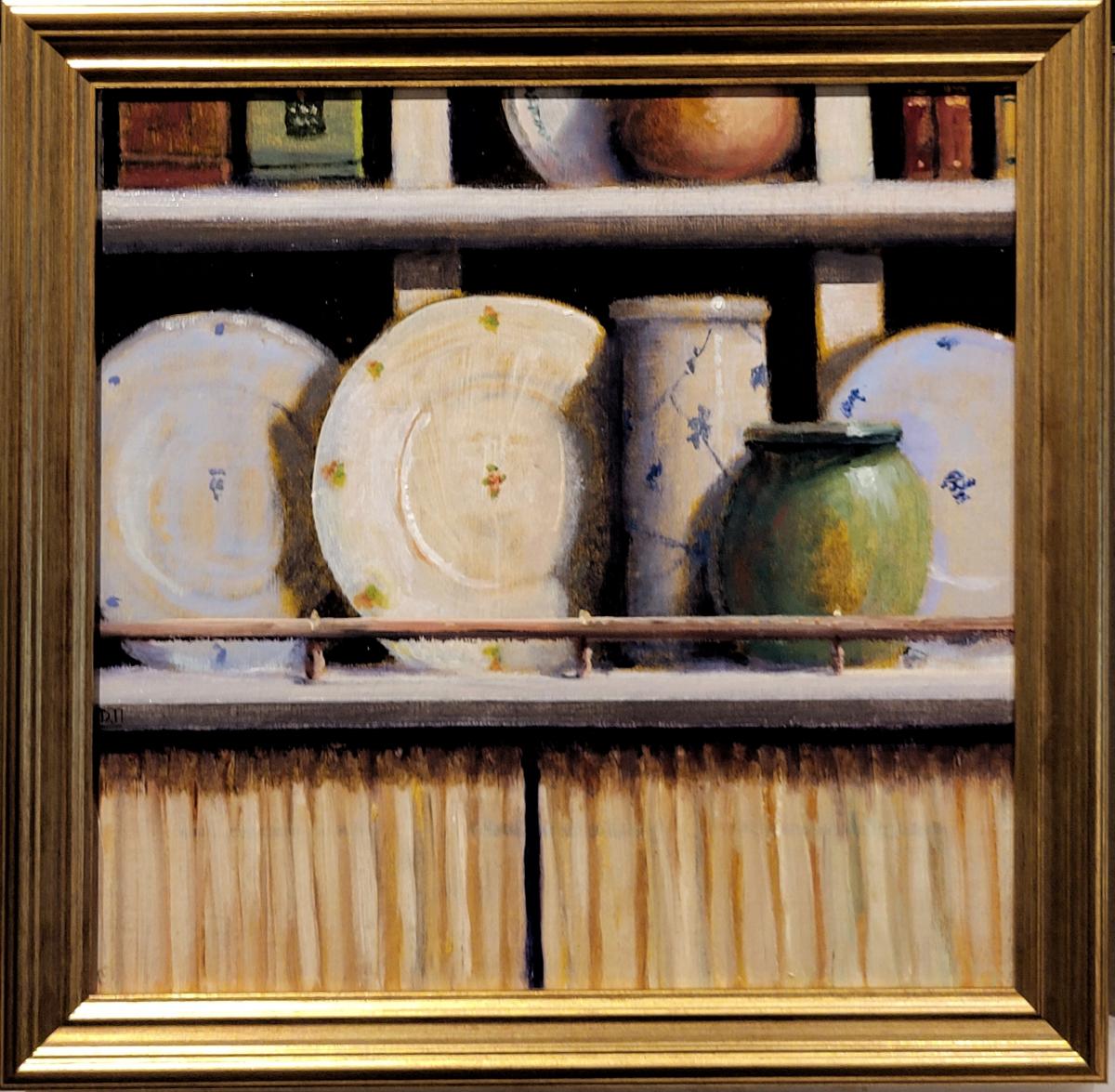
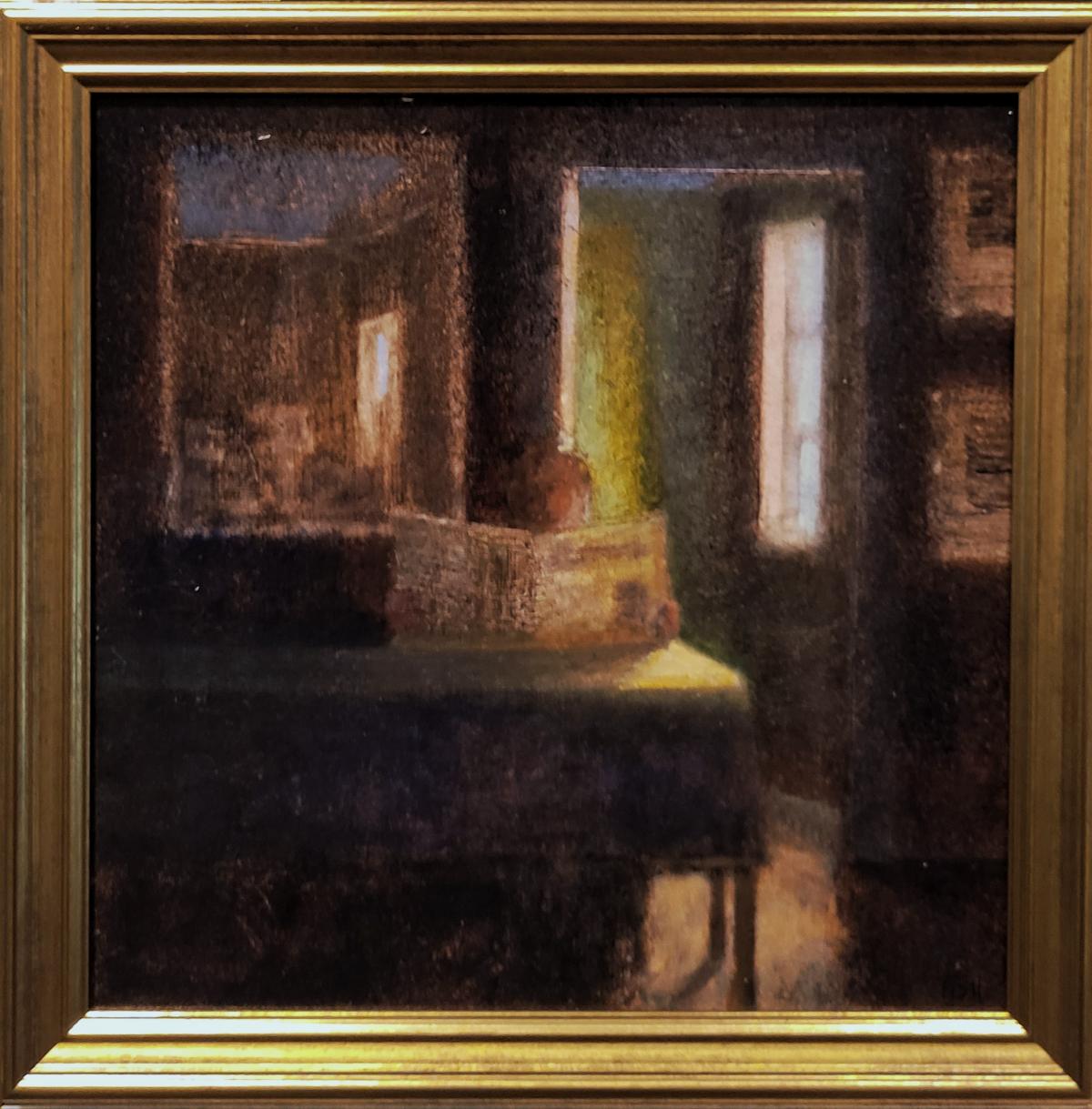
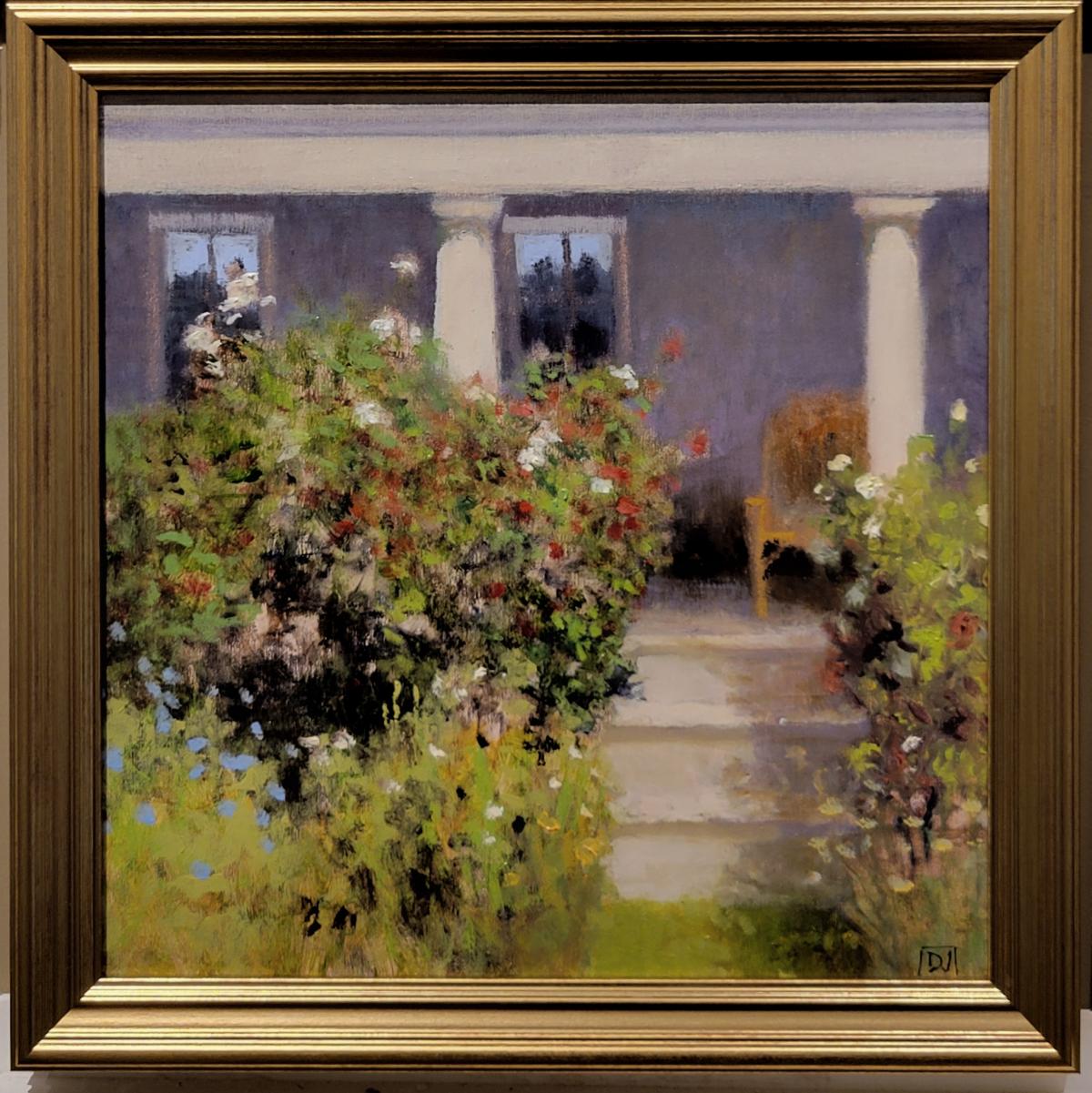
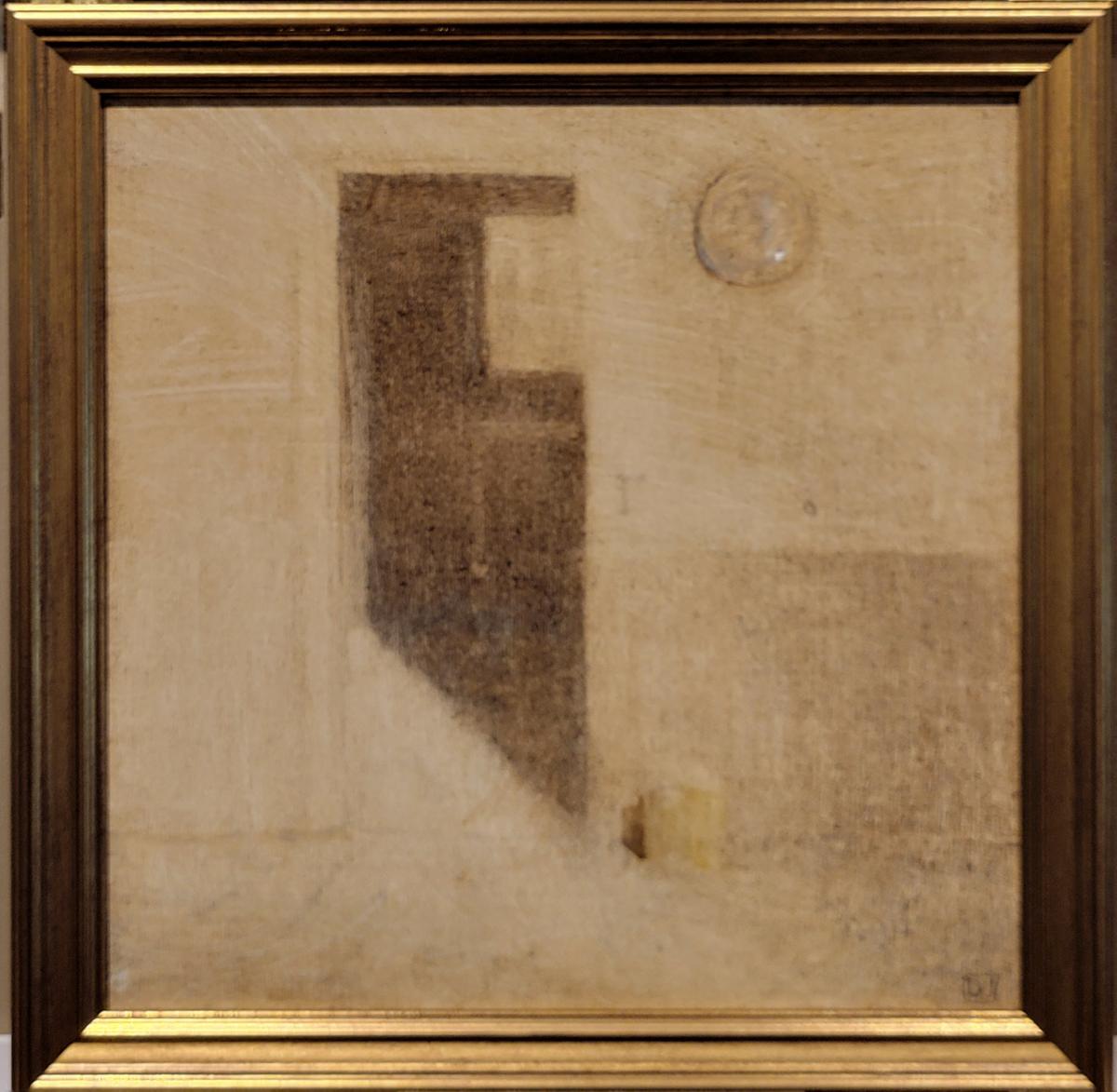
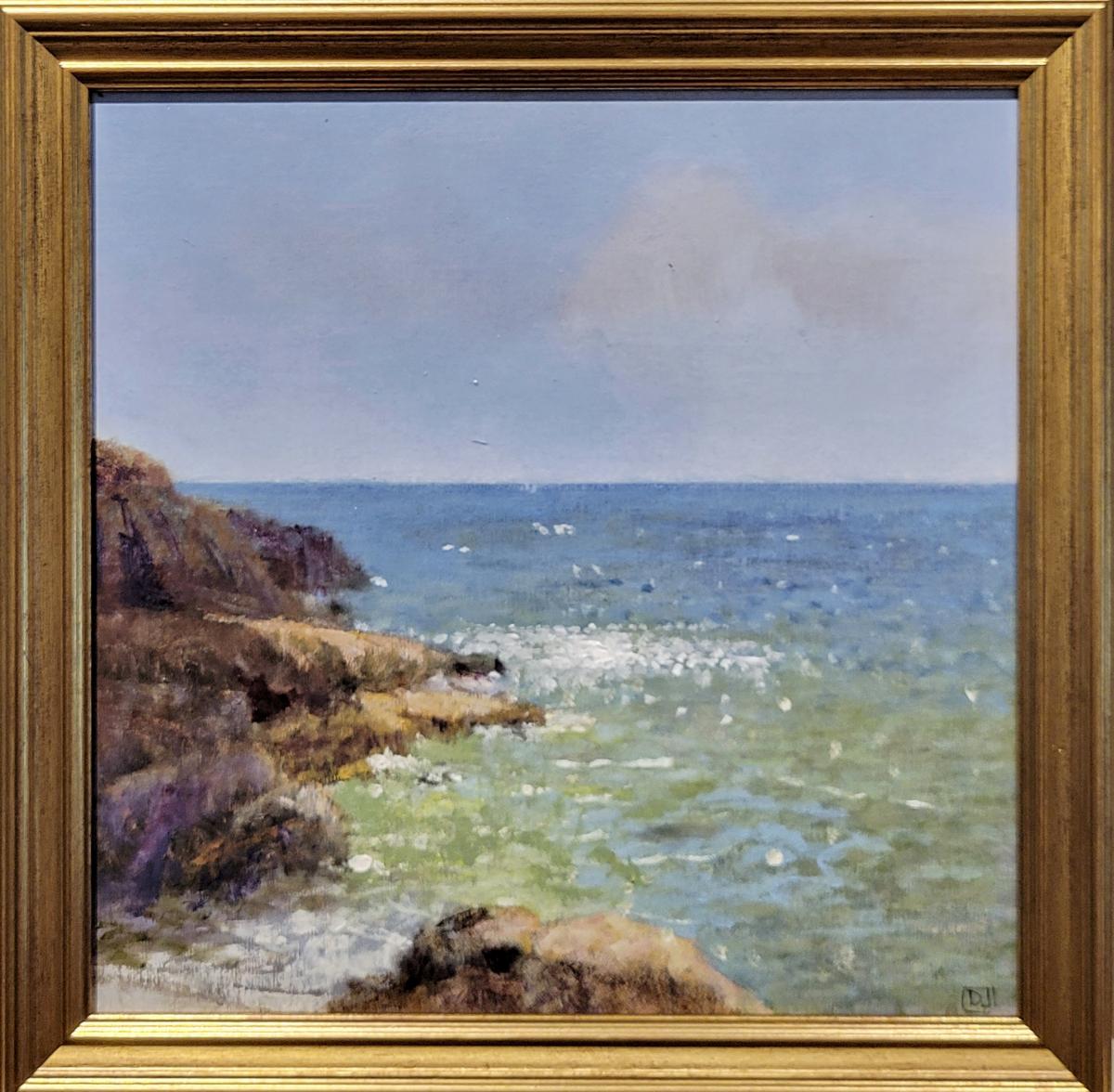
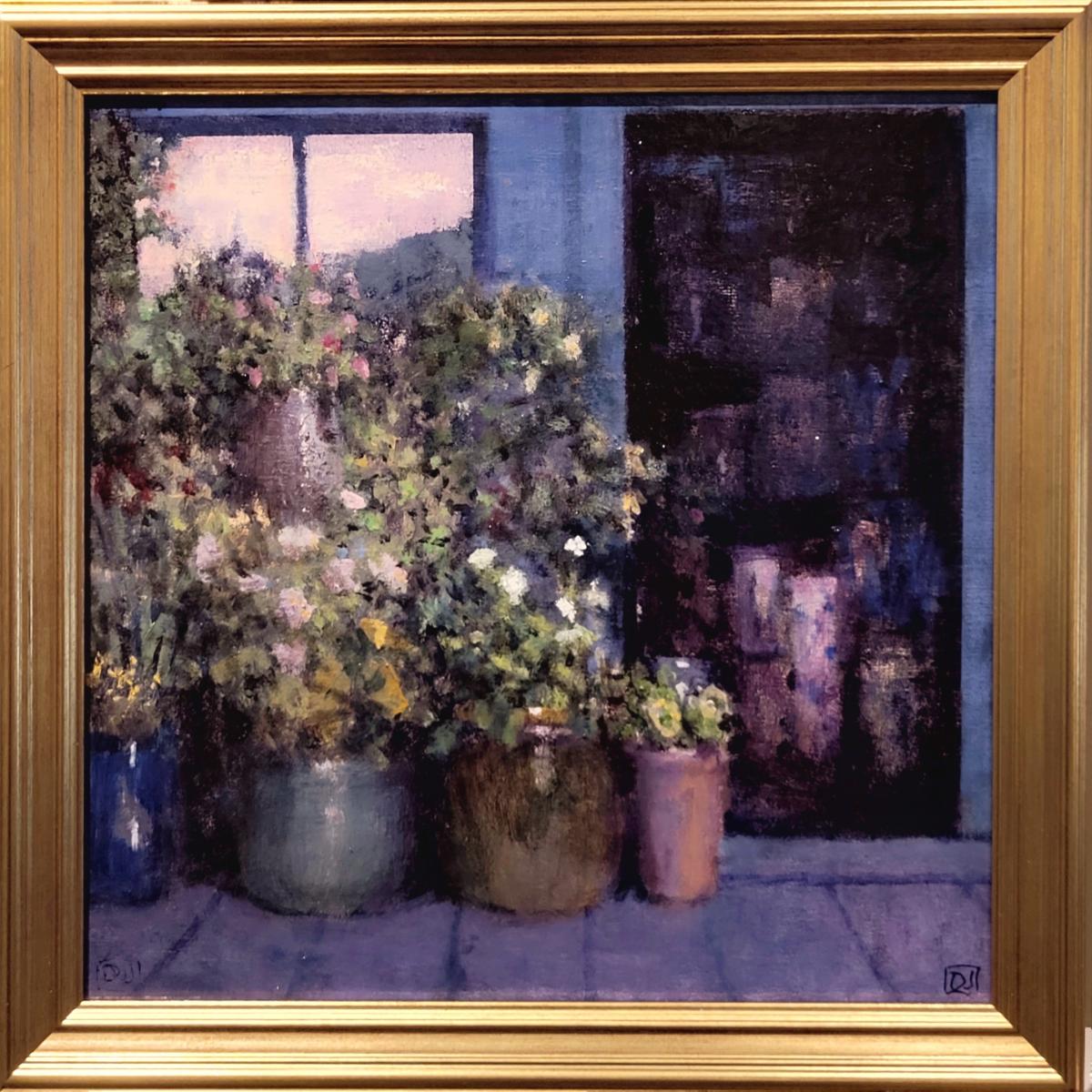
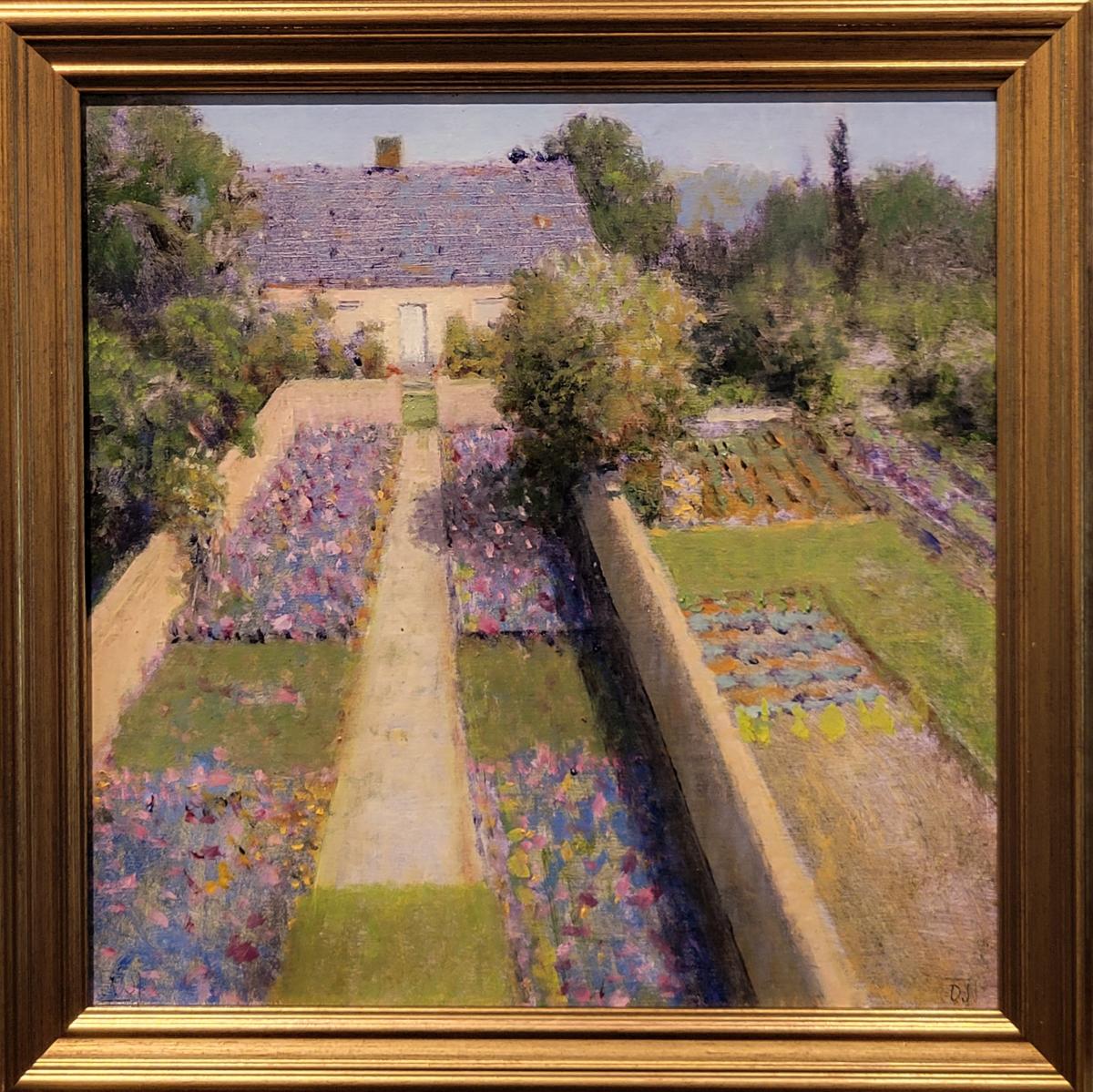
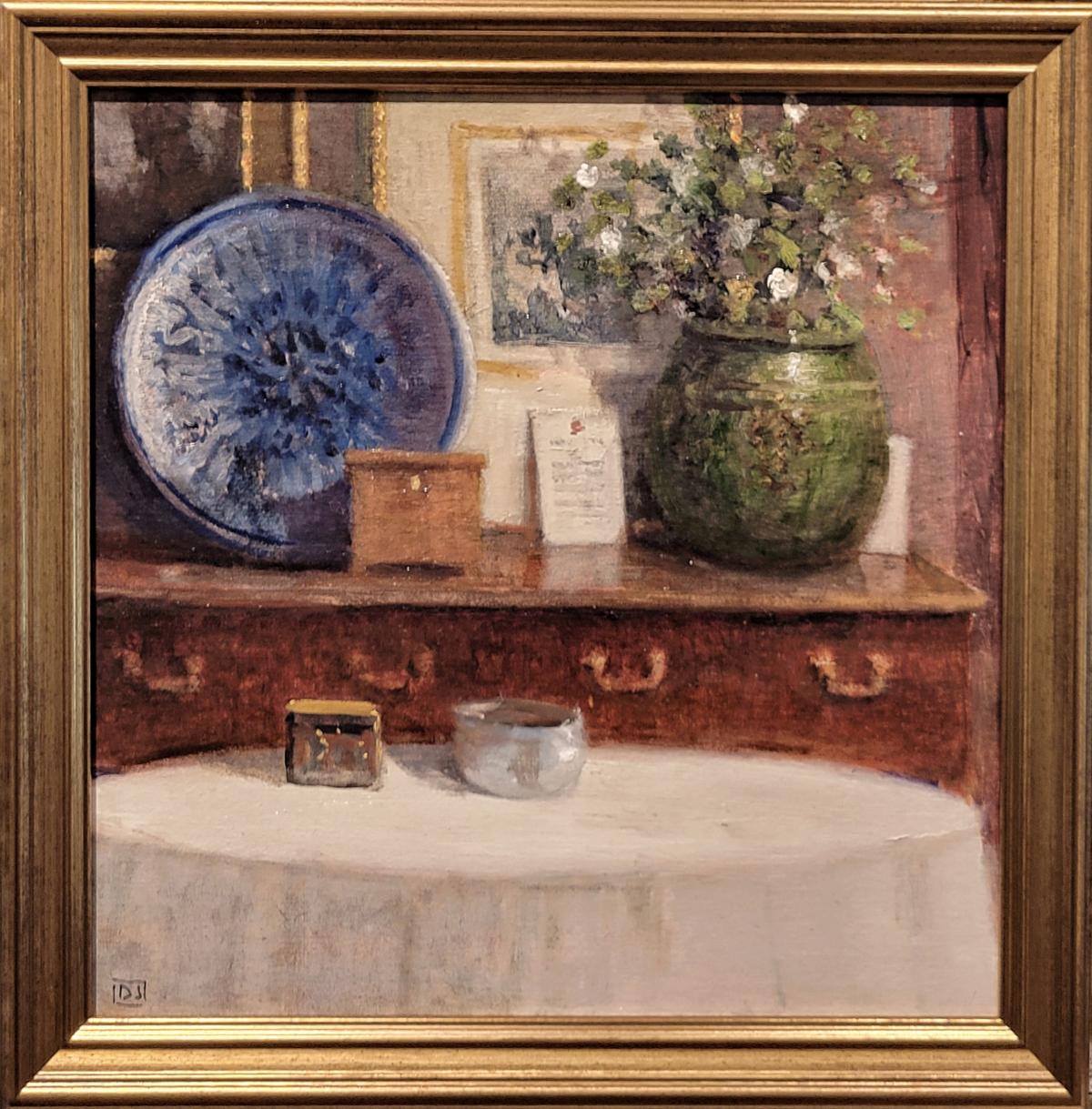
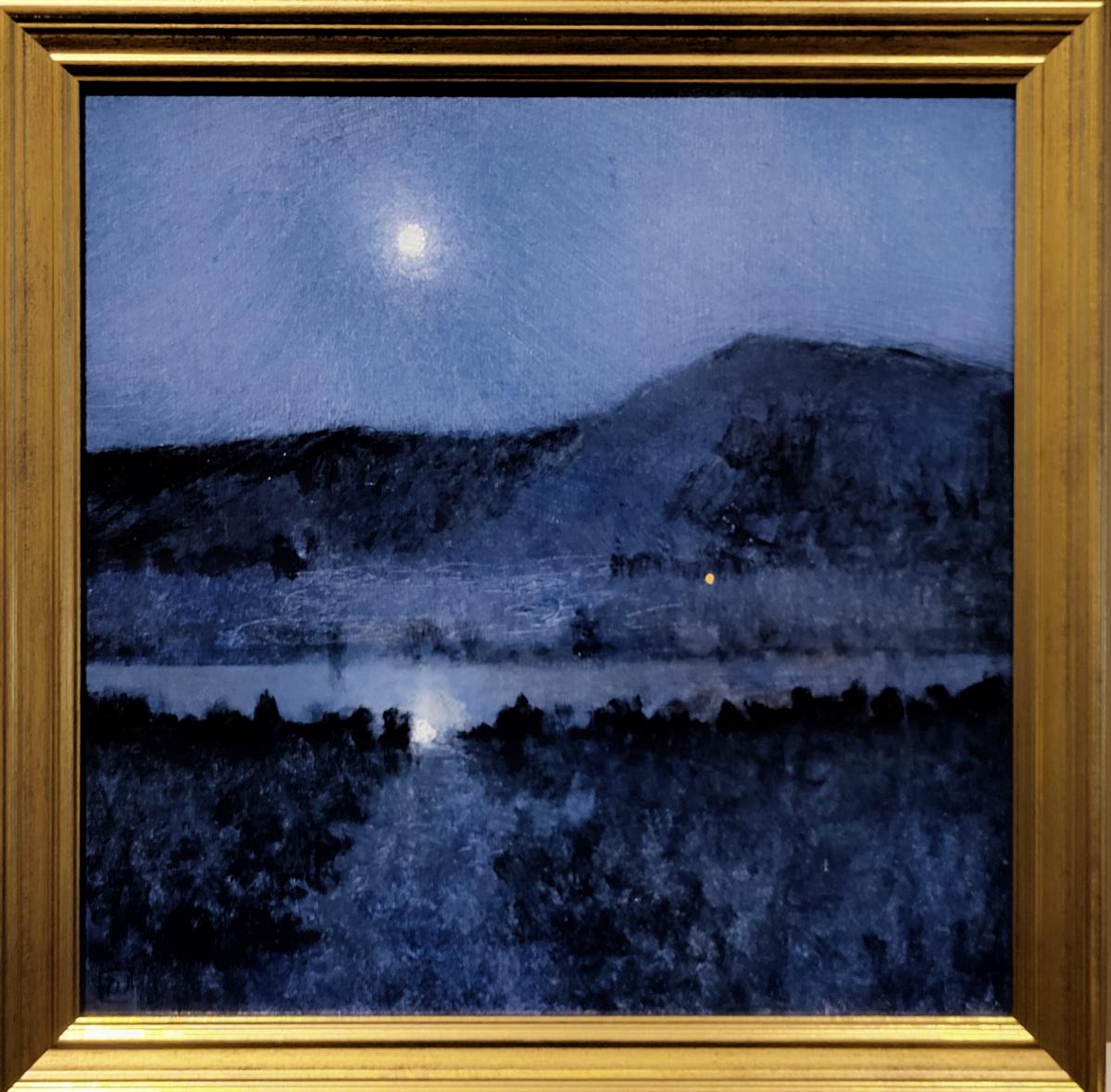
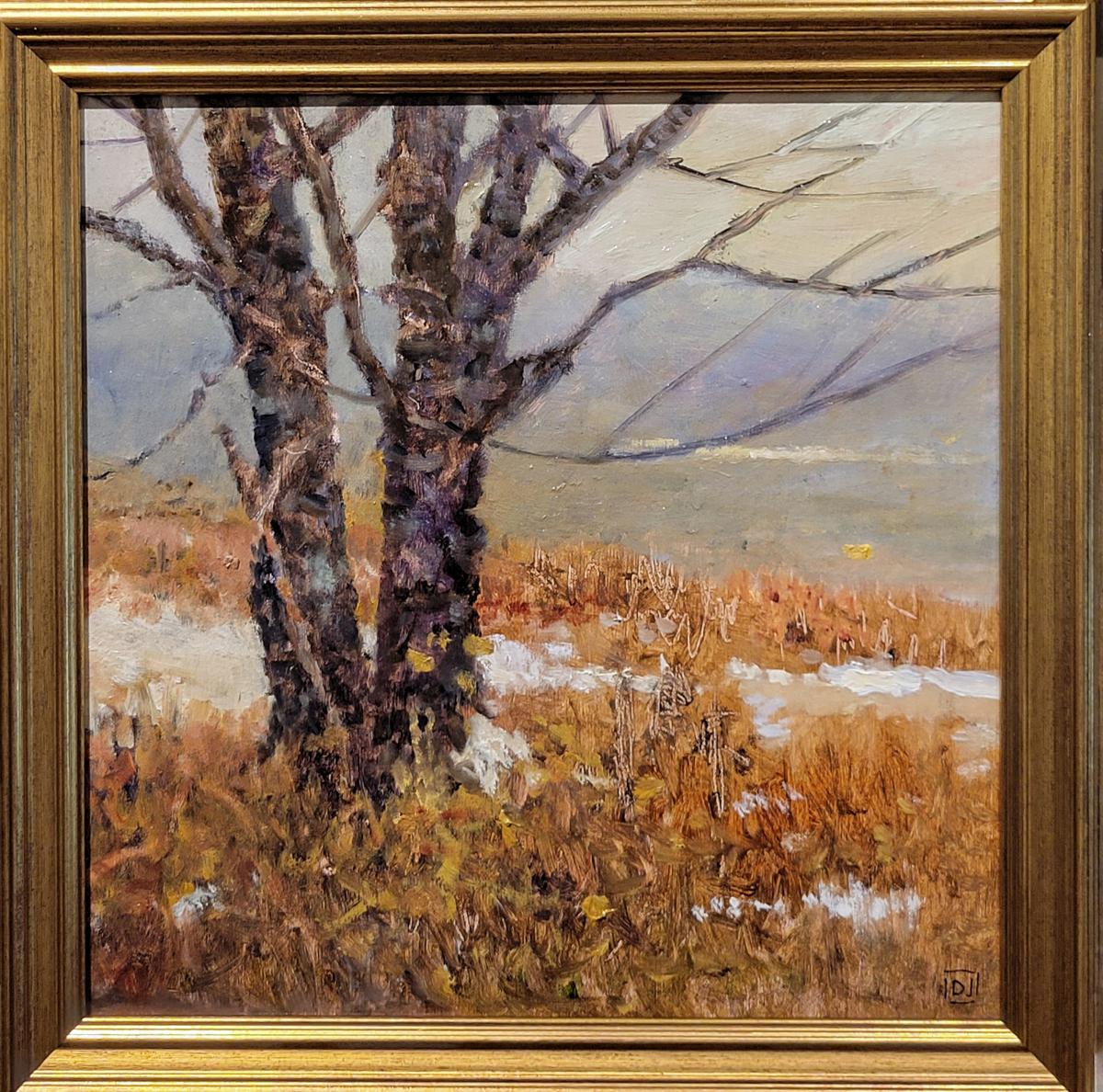
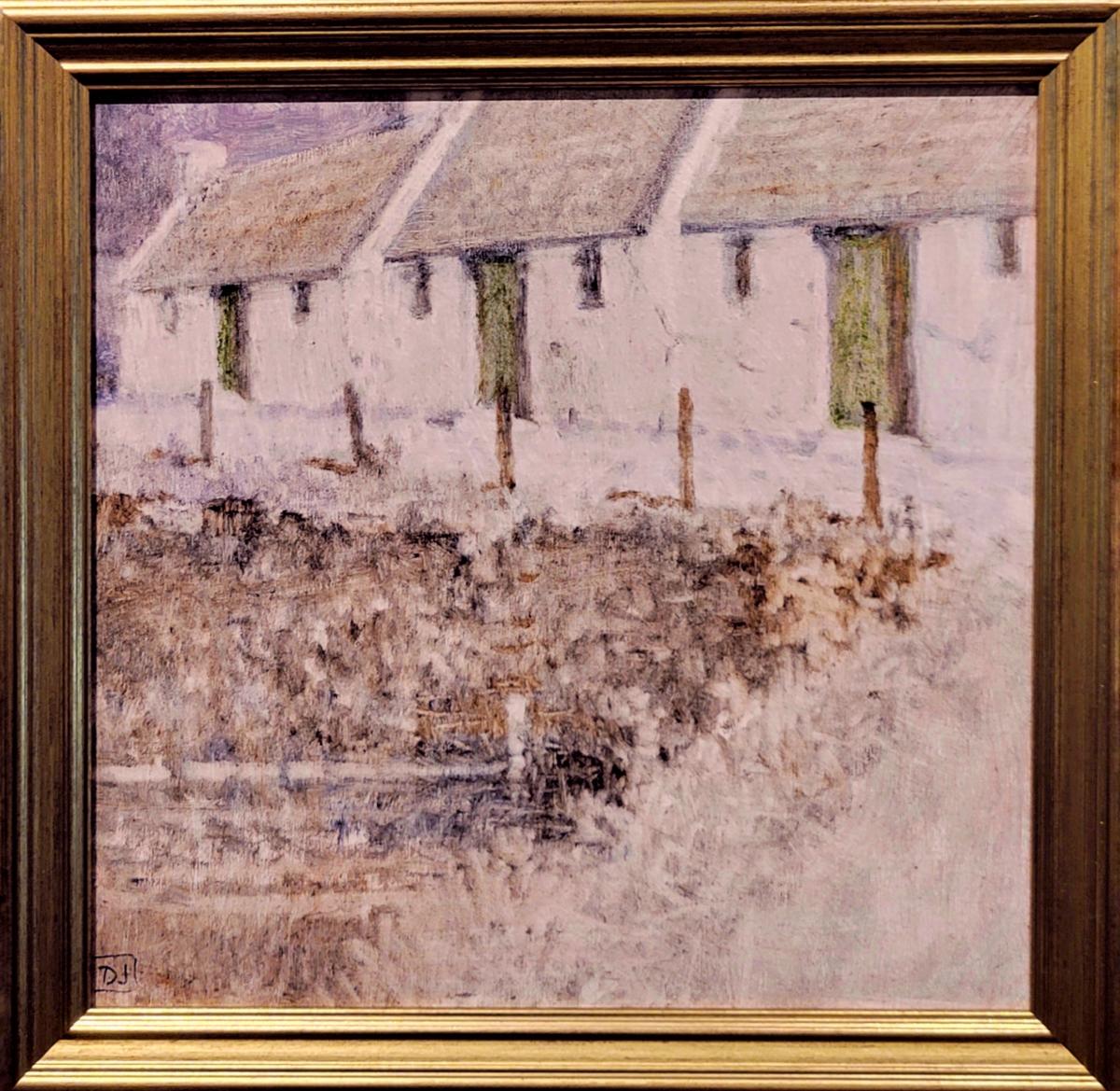
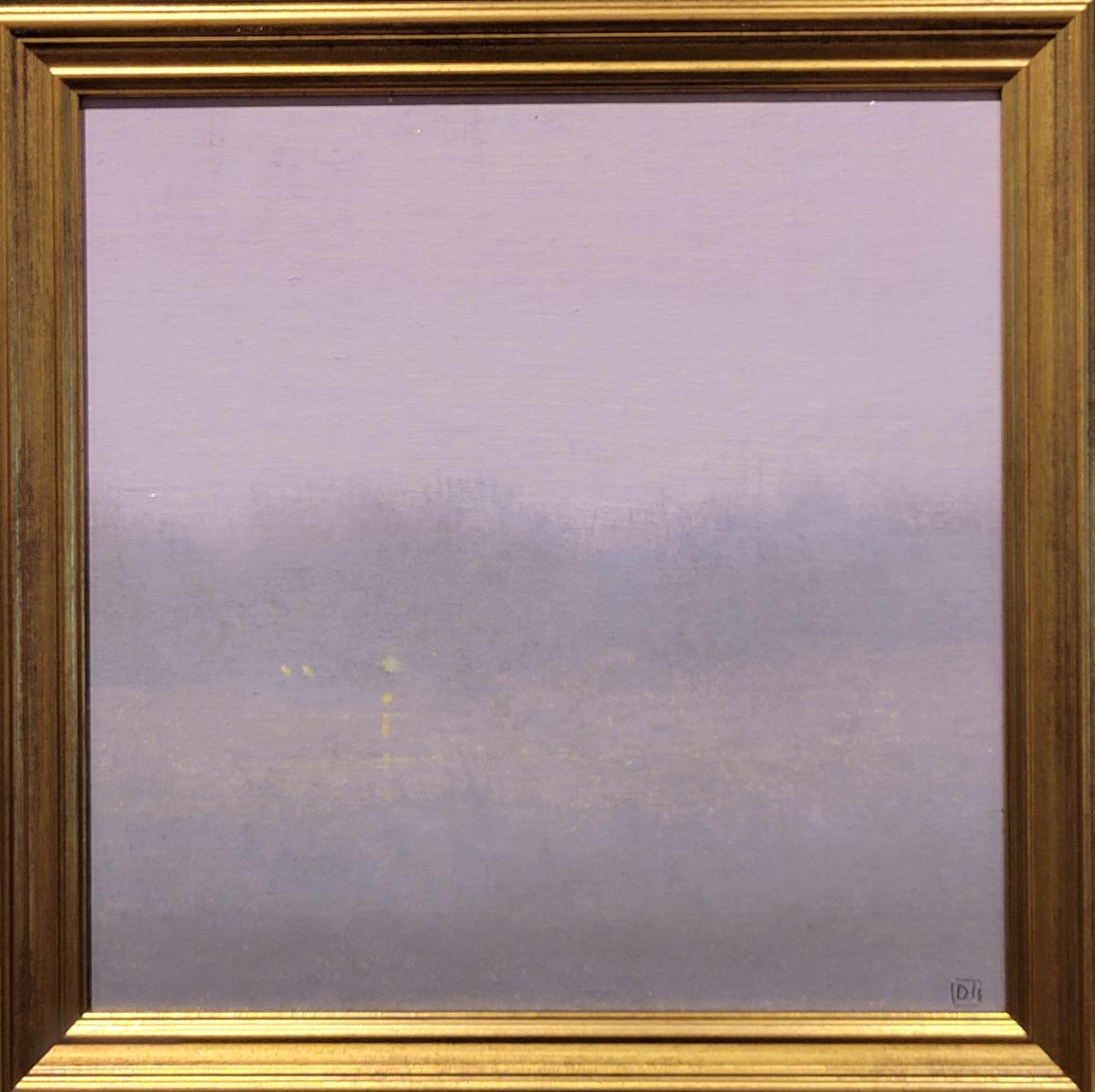
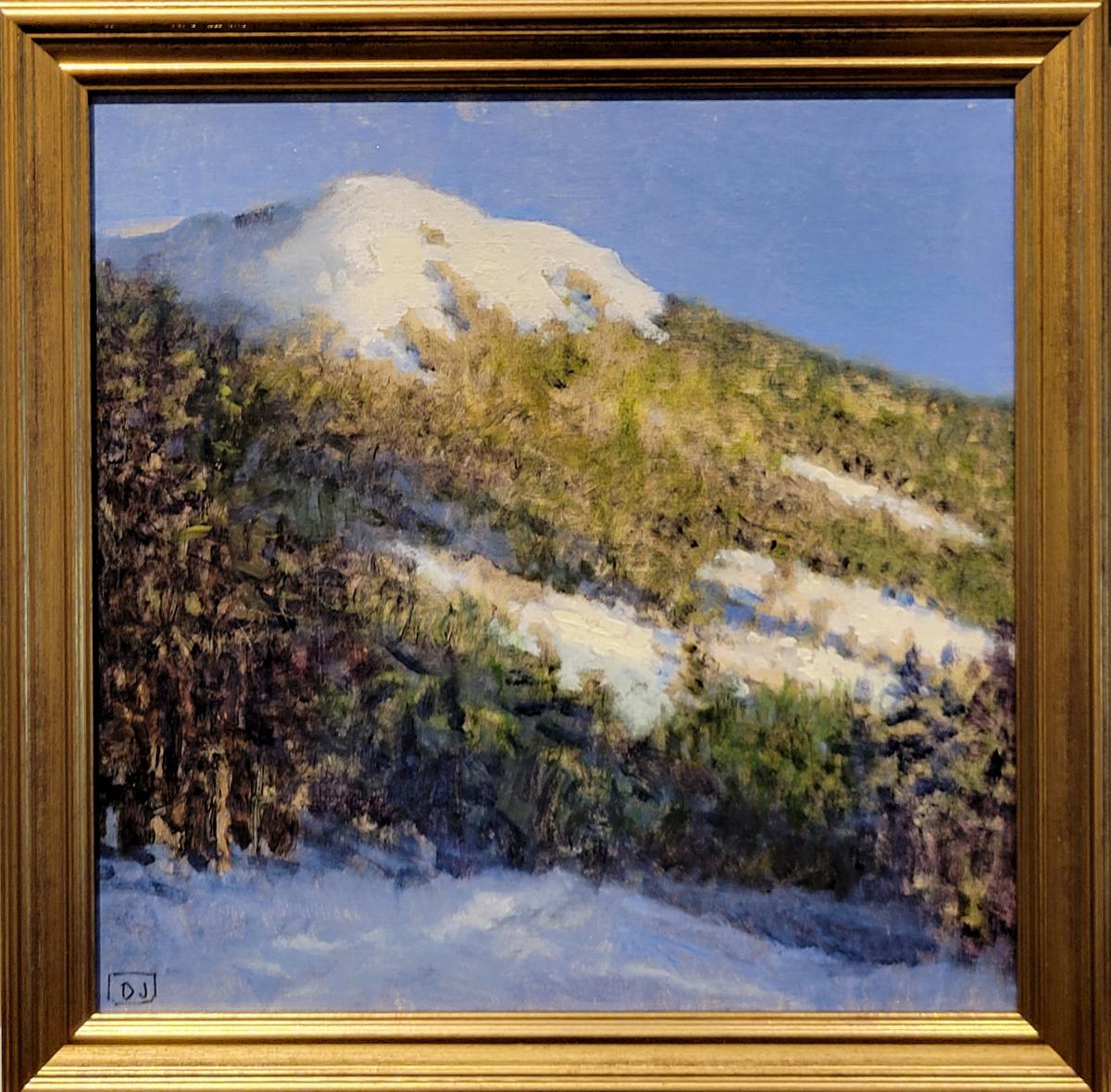
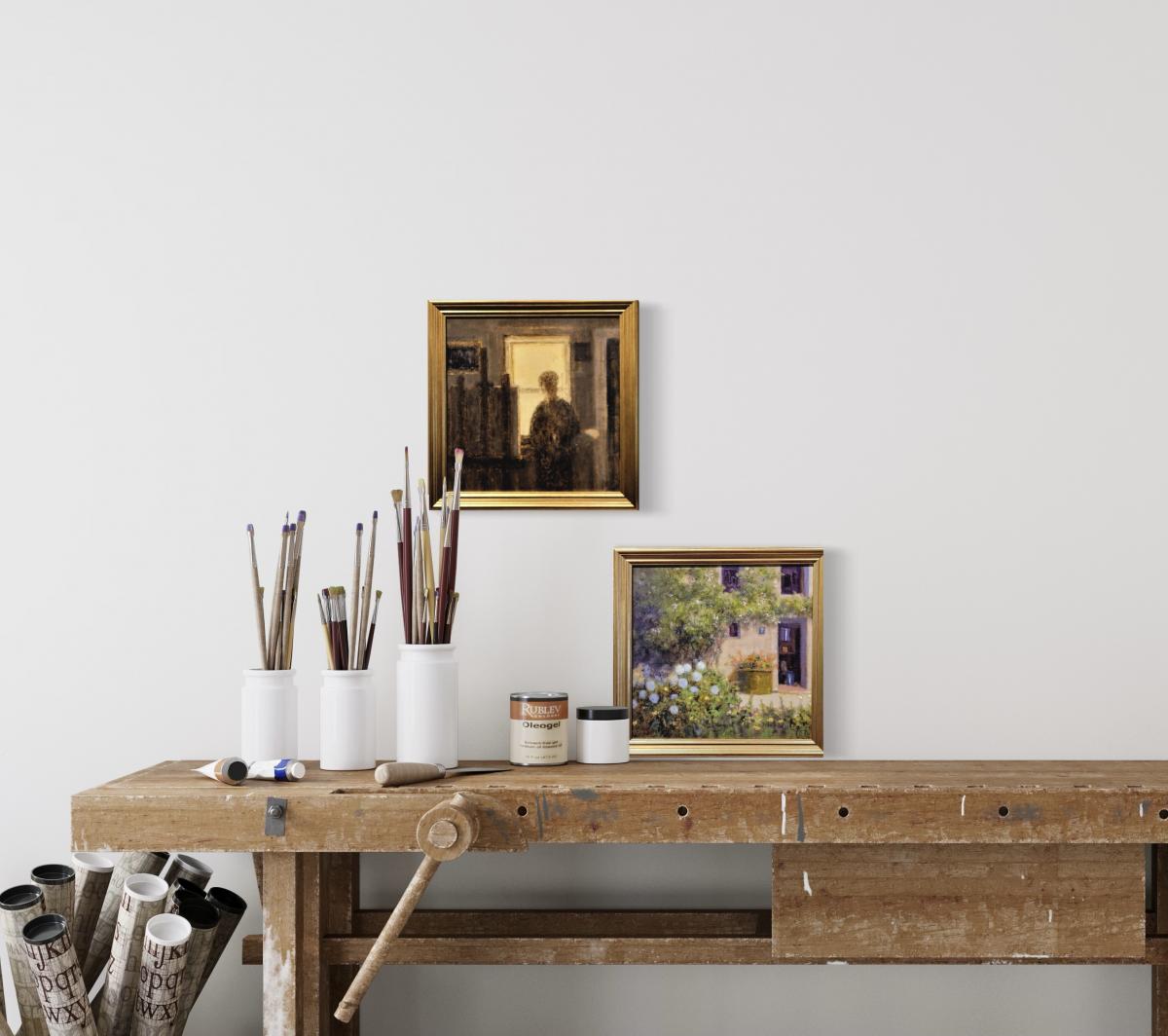

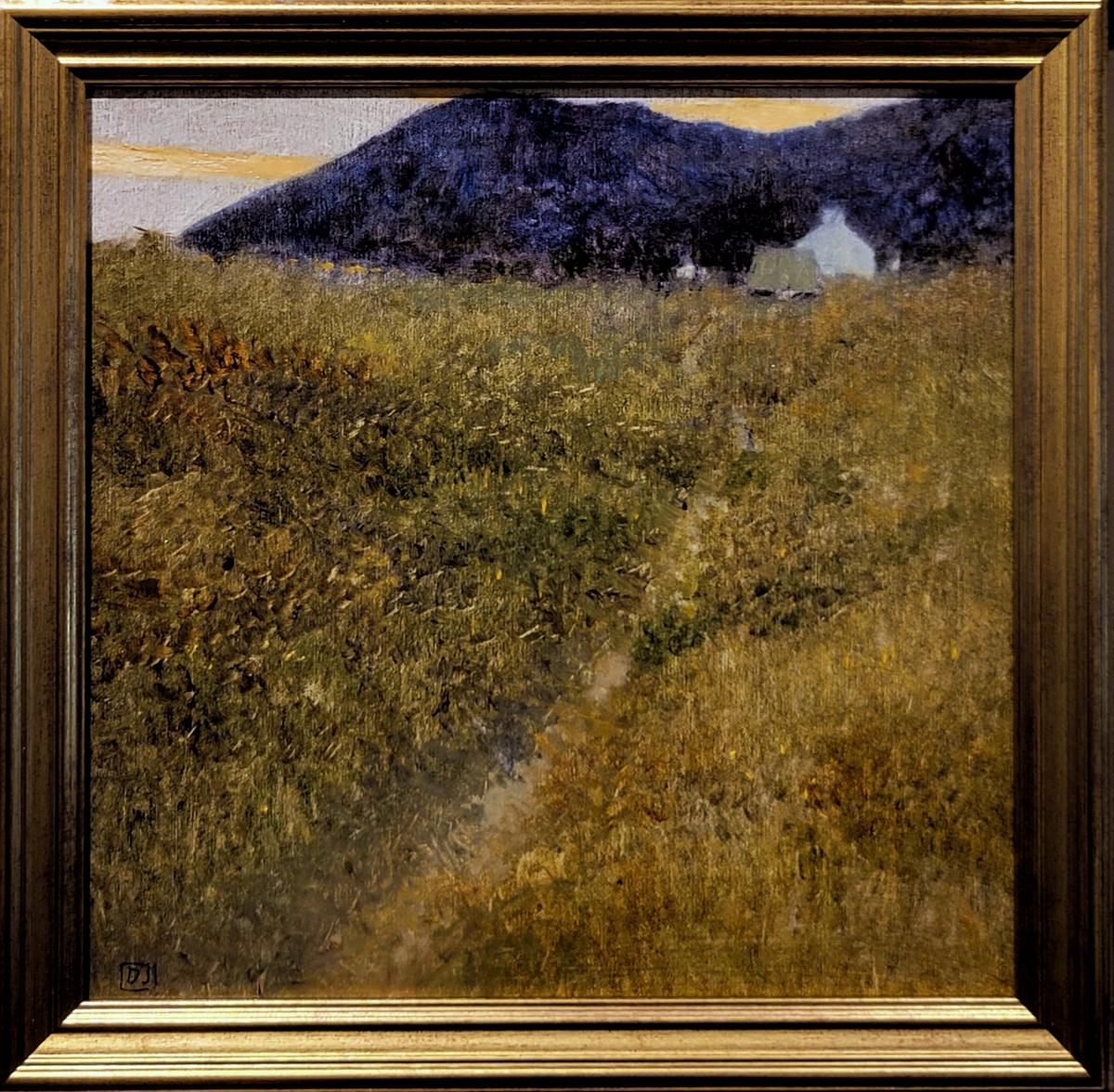
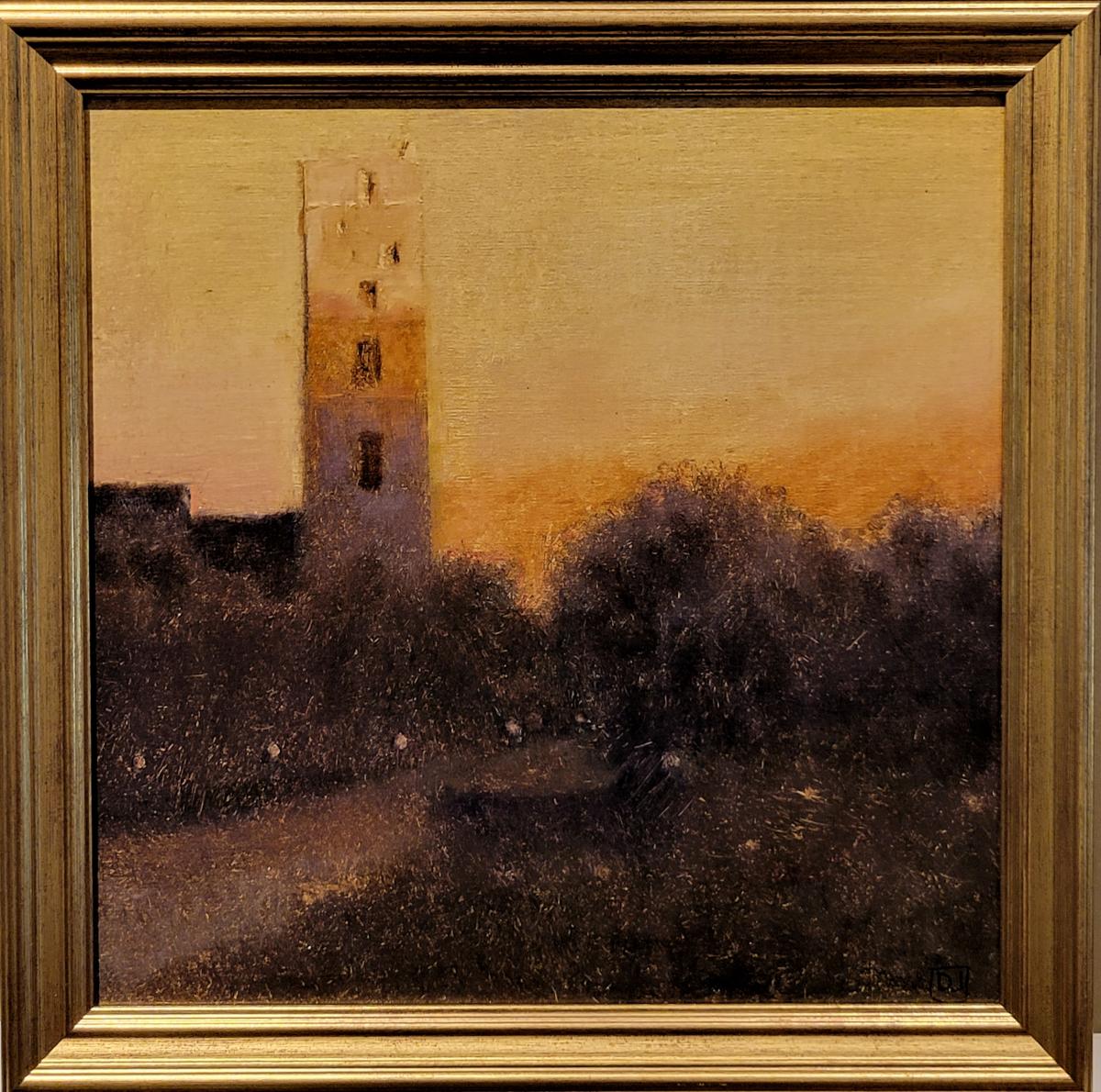
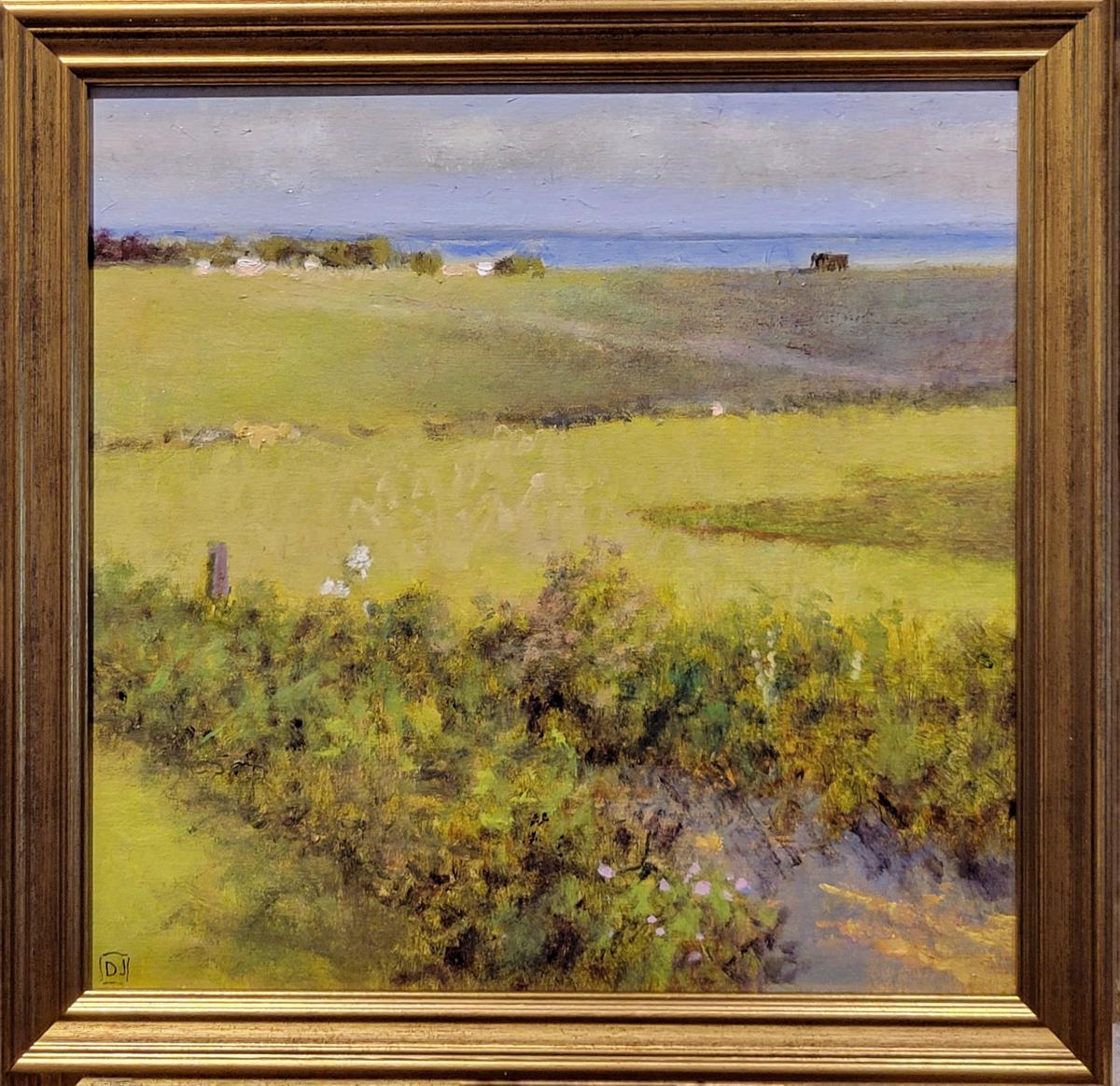
Newburyport Art Association
September 10-21, 2022
I hope you enjoy this group of eighty small paintings. They have all been made over the last nine months and have afforded me the opportunity to explore many ideas, some of which are new departures for me.
A few were begun en plein air, but the majority are from imagination, informed by my travels and by many, many years of studying the world around us.
The thread linking them is, of course, my desire to show you what I’ve been thinking about. They are the product of what Winston Churchill once called “a joyride in a paintbox.”
Best,
Donald
All of these are oil on 10x10 inch linen canvas laid to archival board, framed simply in gold, bringing the total dimensions to just under 12x12 inches.
If you are unable to attend the opening, you may purchase on line. To do so, please visit the Newburyport Art Association web site store and complete your purchase there. Alternatively, you may contact them and purchase over the phone.
Paintings are $1250 each plus MA state tax where applicable.
Donald Jurney was born in Rye, New York, in 1945, and was educated at Columbia University, the Pratt Institute, and the Art Students League.
Jurney’s work is firmly rooted in the great landscape tradition, stretching from Dutch 17th century painting through the Barbizon and Hudson River Schools, to late 19th and early 20th century French and American impressionism. Nonetheless, one cannot mistake the evidence that his work is also informed and enlivened by the influence of modern painting. It is this union, one of timeless motif and of lively surface, that distinguishes his work from both his predecessors and his contemporaries, making his paintings very much of our time, and instantly recognizable.
Particularly in the period between 1870 and the famous 1913 Armory Show, landscape painting dominated the world of art. It engaged the viewer with contemporary views of the world while exploring the intersection between man and nature. With the arrival of modern painting this conversation was abandoned, cast aside in favor of a formalist investigation of the nature of painting itself. With few exceptions, such as the work of Fairfield Porter, landscape painting lay virtually dormant for sixty years, until the 1970’s.
At the time Jurney first began, realist work (and especially landscape painting) was considered deeply old-fashioned. Art had, apparently, progressed beyond such quaint notions.
Running counter to that belief, Jurney was committed to the view that understanding our relationship to the places around us, having ‘a conversation’ with our precarious world, was more important than ever before. He continues to believe that we grow in richness as we train ourselves to perceive the subtleties of the land, both in its timelessness and in its ever-shifting vitality. Jurney invites us to explore what Patrick Kavanagh has called “the undying difference in the corner of a field.” His paintings are a summons to celebrate the poetry of the commonplace.
Jurney’s work, like that of many of the masters he respects, begins with pencil drawings in the field. Exploring the particulars of a chosen place, he carefully records the information, which he will later need in the studio. Sometimes several years will elapse before the drawing becomes the motif for a new painting. In the studio, from his deep understanding of the vocabulary of nature, coupled with a keen sensibility and great skill, comes a painting with the indelible stamp of a certain day and hour, of a particular weather, and with a unique sense of place.
At first glimpse, his work is profoundly based in traditional landscape painting. But a closer look reveals that the tree, which we see as millions of leaves, is, in fact, a dense matrix of quite random marks, combining to give the impression of great detail. Through great economy of means, Jurney invites the viewer to enter into a compact with him, one in which the language of painting becomes as important as the subject of the picture itself. Our reward is the pleasure of a traditional realism that is refreshingly, and surprisingly, animated by the vigor of abstraction.
Donald Jurney has lived and worked in the Hudson River Valley, in England, and in the Berkshires. For a number of years, he has painted extensively in France. A recent interest has been kindled by a trip to the West of Ireland, and he has begun exploring the coastal marshes and the estuaries of Boston’s North Shore.
But wherever his travels take him, we can be sure of an invitation to come along, through his paintings, and of the chance to share his unique vision of the landscape — inspired by his unflagging enthusiasm for the remarkable world about us.
-Alex Hulse, Arcadia Gallery, 2007
Born: 1945, Rye, New York
Studied: Pratt Institute, New York
Art Students’ League, New York
Columbia University, New York
Member: The Guild of Boston Artists
The Newburyport Art Association
Founding Member of the American Tonalist Society
Founder, Donald Jurney Traveling Fellowship
Solo Exhibitions:
2020 Williams Fine Art Dealers, Inside/Outside
2020 Guild of Boston Artists, Celebration of Place
2019 Todd Bonita Gallery, Portsmouth, NH
2018 Williams Fine Art Dealers, Wenham, MA
2018 Newburyport Art Assn, Spirit of Place
2017 Newburyport Art Assn, Fortieth Anniversary
2016 Quidley & Company, Westport, CT
2012 Quidley & Company, Nantucket
2010 Quidley & Company, Boston
2009 Quidley & Company, Boston
2007 Arcadia Fine Arts, New York
2006-1993, Annually, Hoorn-Ashby Gallery, New York
1991 John Pence Gallery, San Francisco, CA
1990 Hoorn-Ashby Gallery, Nantucket, MA
1990 Five Points Gallery, East Chatham, NY
1989 John Pence Gallery, San Francisco, CA
1989 Five Points Gallery, East Chatham, NY
1989 Garrison Art Center, Garrison, NY
1988 Forecast Gallery, Garrison, NY
1988 Joseph Keiffer, New York, NY
1988 John Pence Gallery, San Francisco, CA
1987 Garrison Art Center, Garrison, NY
1986 John Pence Gallery, San Francisco, CA
1983 Garrison Art Center, Garrison, NY
1983 William Swan Gallery, Cold Spring, NY
1982 William Swan Gallery, Cold Spring, NY
1982 John Pence Gallery, San Francisco, CA
1982 Garrison Art Center, Garrison, NY
1981 Garrison Art Center, Garrison, NY
1980 Day & Meyer, New York, NY
1979 Garrison Art Center, Garrison, NY
1977 The Gallery, Hudson House, Cold Spring
2020 Sugarlift Gallery, Chelsea, New York
2019 Shades of Gray: American Tonalist Society Inaugural Exhibition, Salmagundi Club, New York
2016-2020 Williams Fine Art Dealers, Wenham, MA
2008 “Small Works,” Arcadia Gallery, New York
2007 “Small Works,” Arcadia Gallery, New York
2006 “Small Works,” Arcadia Gallery, New York
1991-2005 Hoorn-Ashby Gallery, Nantucket & New York
AIG, New York, New York
Malin PLC, Cambridge, UK
Brandon Point (US), New Haven, CT
The Clorox Company, Oakland, CA
Bank of America, San Francisco, CA
Charles Ferguson & Co., San Francisco, CA
Fish and Neave, New York, NY
Froley-Revy Investments, Los Angeles, CA
Glenborough Industries, San Francisco, CA
Grandview Collection, Saratoga, CA
Medithon Health Products, New York, NY
John Pence Collection, San Francisco, CA
Ronald Schwarz and Co., San Francisco, CA
Ropes & Gray, LLP, New York
Union Discount Ltd., London
Yoshida Development Corp., Tokyo
Century Fine Arts, Tokyo
The Oakland Museum of Art, Oakland, CA
The Museum of the City of New York, New York, NY
The Hudson River Museum, Yonkers, NY
New Salem Museum, New Salem, MA
The Alden Bryan Memorial Prize for Landscape Painting, Guild of Boston Artists, 2022
The Frank W. Benson Prize, Guild of Boston Artists, 2020
The Edmund C. Tarbell Prize, Guild of Boston Artists, 2016
Award of Merit, The Guild of Boston Artists 2010
Lifetime Membership ‘for Outstanding Contribution to the Arts‘, Newburyport Art Association 2015
Best in Show, Sheffield Art League
First Prize, HRC Council of the Arts
President's Award, Salmagundi Club
Special Award, Putnam Arts Council, 19th Fine Arts Exhibition
Award of Merit, G.W.V. Smith Museum of Art
C.R. Gibson Award, 31st New England Exhibition
Margaret M. Bower Award, New Haven Paint Club
1994 CB Artists Association Award
Donald Jurney: Selections from the French Sketchbooks, www.blurb.com
Who's Who in American Art
Who's Who in the East, 23rd Edition
American Artists: An Illustrated Survey of Leading Contemporaries, Chicago, 1990
Goldberger, N., and Scott, A., Art and The River: Views and Visions of the Housatonic, Sheffield, MA, 2004
Media:
Interview, CBS-TV, New York, 1984
Interview, WCVB-TV, Boston, 1994
East Oaks Studio Livestream, 2019
East Oaks Studio Livestream, 2021
"Donald Jurney," American Artist, November 1982
"Landscapes," US Artists, February 1984
“Donald Jurney: Quiet Corners, A Pictorial Essay,” US Art, May-June 1989
"Hudson River Revisited," American Artist, November 1989
“Collectors: David and Alice Johnson,” Southwest Art, April 1991
"Painting at the Site of American Impressionism," American Artist,
May 1993
“Feels Like Home”, The Washington Post, July 26, 2007 (illus)
“Donald Jurney: 30 Years of Painting Landscapes,” American Art Collector, October 2007
“Capital Idea,” ELLE Décor, May 2009
“Ali Wentworth’s and George Stephanopoulis’s NY Apartment” Architectural Digest, March 2012 (illustrated)
“Plein Air Landscape Painter Jurney to be Honored at Garrison Art Center,” Putnam County News and Recorder, April 23, 2014
“Donald Jurney: A Breath of Plein Air”, Putnam County News and Recorder, May, 7, 2014
“Art Auction Honors Donald Jurney”, Putnam County News and Recorder, May 14, 2014
“Nantucket Charm”, illus., American Art Collector, June 2015
Frank Rizzo, “Westport Country Playhouse Artistic Director Mark Lamos reflects on art and the theater”, Ctpost (Connecticut Post) March 28, 2016
“Exemplary Offerings”, illus., American Art Collector, June 2016
Dr. Janice Simon
Josiah Meigs Distinguished Associate Professor of Art History
University of Georgia September 2007
Donald Jurney’s painted landscapes offer the viewer a soothing, silent, scenic respite from the burdens of modernity. No signs of technology or urban life mar his pastoral vision. It is a world of old European hamlets, worn wooden gates and fenced fields, red-tiled roofs, turreted barns, poplar groves, stone walls, and rocky shores. It is as if we have been transported to another time and place—and indeed, we have. As Jurney himself commented in his French notebook, "I seem to like, particularly, a glimpse of clustered farm buildings, some being used still, some abandoned, set deep in a verdant world."
Jurney invites us, often literally with a bridge or pathway, to enter deep into a verdant world whether of France’s bucolic countryside or the terrain traversed by the Housatonic as it courses through the Berkshires and the lush fields of Connecticut. He even places us alone on the Massachusetts shore amidst sea, snow, sand, and rocks as if we are its very first inhabitants.
As we gaze at the painted scene before us, however, we note the signs of artistic orchestration. Both A Sunlit Cove and The Close of Day offer in their distances white sails, but they act more as visual reiterations of white surf than as indicators of human activity. Dapples of orange define the red-tiled roofs in Summer in the Allier, but they also direct our eye from left to right, forming a line of orange complementing the pure sky blue barely visible on the horizon. Smudges of orange mottle the fields, shrubs, and water, leading our eye from foreground to distance and back again. As if in musical counterpoint, Jurney masterfully paints a blue line in the garden on the viewer’s left; that thin blue line connects the blue shadow on the white farm house behind it to the reflections of blue sky in the water and the peeps of blue in the surrounding trees. Incorporating the complementary colors of blue and orange as it does, Summer in the Allier could be re-titled, a la Whistler, Harmony in Blue and Orange.
As with any coherent body of work, Jurney’s landscapes share motifs and visual effects. No humans are visibly present only records of their past activities: a stack of hay; a staked sapling; a barbed fence; a pile of wood by a blue door; a lit window. Farmhouses of stone and clapboard, furrowed fields, dirt roads, wood bridges and stone fences create geometric patterns and impose human intervention on the scenic views. This is true whether in the broad expanse of Hamlet in the Bourbonnais or the intimate Poplars on the Loing.
Puddles and streams course through fields of green, orange and yellow, reminding us that with water comes life. Blue skies mottled with clouds of white, gray, and salmon expand and contract over the widening landscape, providing subtle dramas of their own. Snowbound Coast and The Close of Day cede color and expression to their salmon soaked skies; they take the viewers’ breath away with their bold beauty. Patches of light enliven a field, a creek, a marsh, a chimney, a church tower, or a village seemingly soaked in the darkness of night. Jurney’s paintings are ones in which observation, memory, and technique engage in a dialogue, conjuring in the viewer a sense of place and a feeling of profound tranquility.
Jurney creates a dialogue with landscape artists of the past, as well. Although his paintings are clearly his own, with their personalized brushstrokes and favored motifs, Jurney demonstrates that all good artists are schooled in art historical precedents. Born in Rye, New York and well-acquainted with the terrain and traditions of the Hudson River Valley and mountains of New England, Jurney embraces the art of nineteenth-century American landscape painting. His gorgeous salmon and blue skies recall Sanford R Gifford, and the color, composition, and painterly strokes of his coast scenes remind one of the last paintings John F. Kensett produced on Contentment Island in 1872. September with its farmland tucked in the mountain valley and flecked paint surface reiterates the importance of George Inness in transforming landscape painting into a poetic activity; so too, does Evening in the Ile de France.
Stillness on the Housatonic, Summer in the Allier, and especially Summer in the Sologne, pay tribute to American Impressionism with its emphasis (unlike the French) on firmness of outline and highly structured compositions. Even Jurney’s painterly brushstroke possesses the same deliberateness and control of American painters like Theodore Robinson, Childe Hassam, and John Twachtman. Just as European traditions profoundly influenced American painters, so too, can one see in Jurney’s paintings the expansive seventeenth century Dutch vision of Jacob van Ruisdael (St. Martin’s Summer; Hamlet in the Bourbonnais) and the German romantic night city views of Casper David Friedrich (A Moonlit Night; Twilight in the Nirvernais). Such recollections never force themselves on the knowledgeable viewer, but they lie in wait, adding the significance of the past to the present, and injecting the profound role memory plays in observation and creation.
Donald Jurney once referred to a day in the French countryside as "seeming, inevitably, Proustian." The same statement could be applied to Jurney’s landscape paintings. Not painted on site but instead culled from sketches, recollections and experiences, Jurney’s paintings do not merely record nature or establish a site. Instead, through the alchemy of Jurney’s memories, musings, emotions, and brushstrokes, they unite the present to the past; they merge the objective world with subjective vision. By setting the viewer "deep in a verdant world" Jurney’s landscapes assuredly transform a place into the magical world of art.